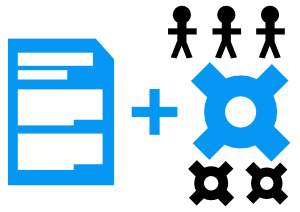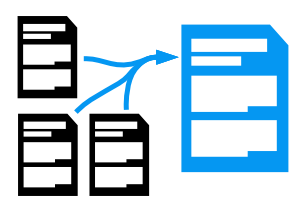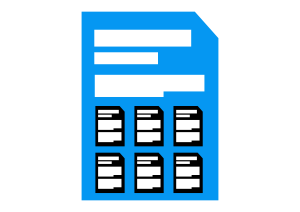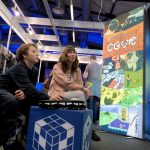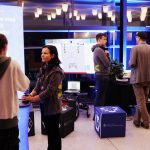2025
|
Reflexions – Creating Interactive Visuals With a Depth Camera
Kreete Kuusk
|
|
|---|---|
| When creating an interactive exhibit to be shown publicly, it is important to ensure that the users will find it engaging. Kreete Kuusk has done intensive user testing with the Reflexions exhibit as well as developing and improving three of the six nature-inspired visualizations (Lily, Jellifish, and Northen Lights). This exhibit is on display on the third floor of the Delta educational building. Webpage Poster Thesis |
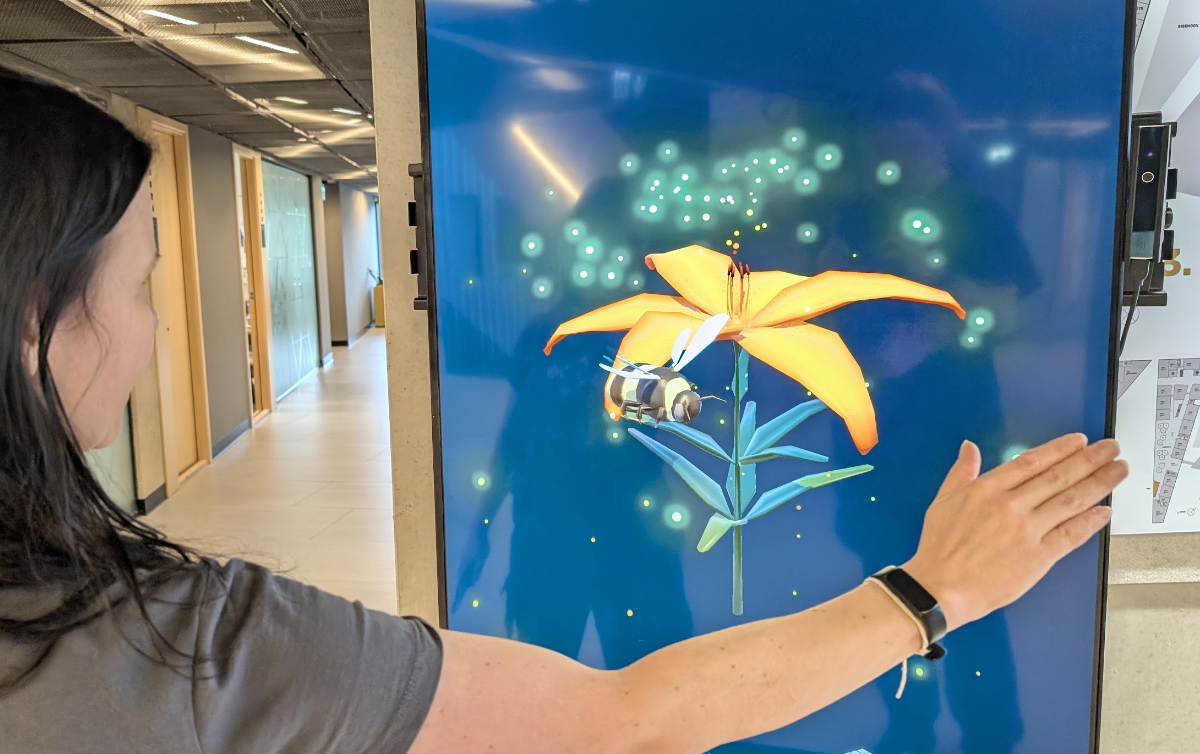 |
|
Software
|
|
|
Reflexions - Using a Depth Camera to Create Interactive Generative Art
Henri Maandi
|
|
|---|---|
| Making digital public exhibits interactive is an interesting challenge. Henri Maandi has in his bachelor's thesis used a depth camera to capture the body shape of the viewer. Depending on the viewer's movements, the six visualizations of the Reflexions exhibit can be interacted with. Henri also created three of the six nature-inspired visualizations (Smoke, Slime, and Water). This exhibit is on display on the third floor of the Delta educational building. Webpage Poster Thesis |
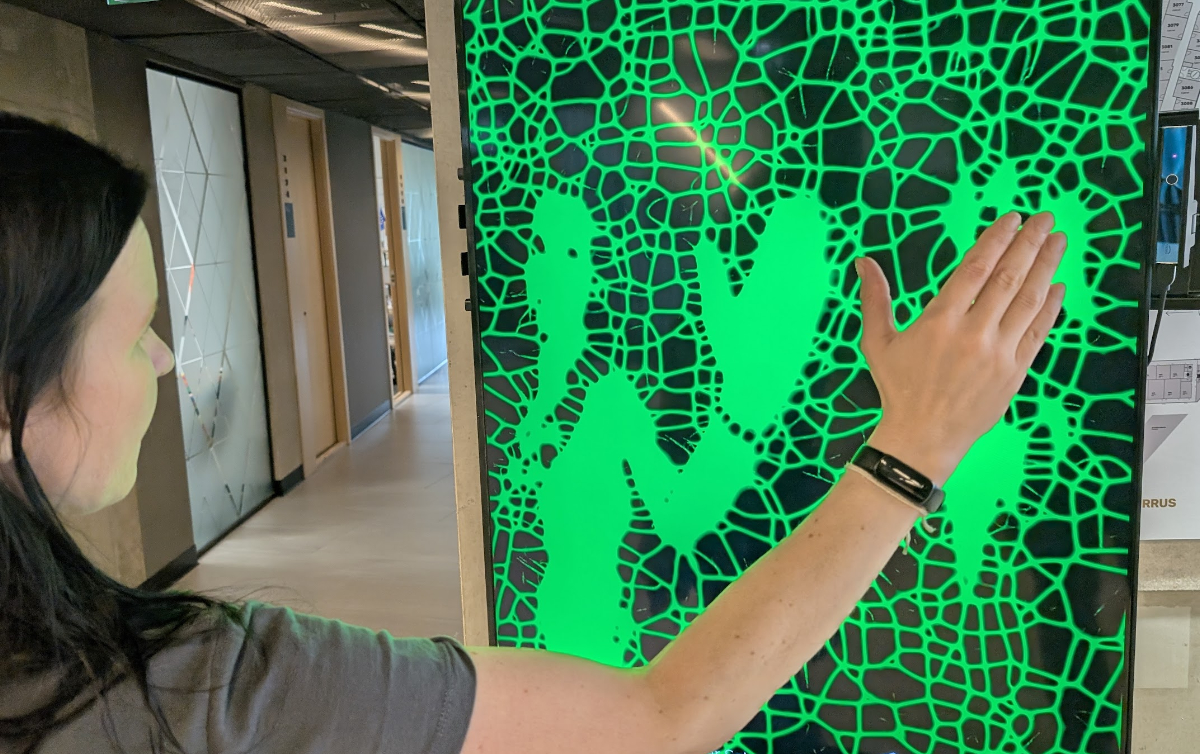 |
|
Software
|
|
|
Labour and Duty – a VR Production Line Rhythm Game
Joosep Tamm
|
|
|---|---|
| There are some really popular virtual reality rhythm games. Joosep Tamm has identified that one problem with those is that they feature monotone movements and no diegetic context. Thus, he designed and created Labour and Duty. In this game, you are a factory worker who has to repair cards or nail down box lids in the rhythm of some catchy tunes! Game Poster Thesis |
 |
|
Software
|
|
|
Perpetua – A Turn-Based Role-Playing Game with Runes
Jan Markus Rokka
|
|
|---|---|
| Party-based role-playing video games are very popular and immersive. Jan Markus Rokka has delved into the design of such games to design and create his own game, Perpetua. The game features a memorable storyline, sympathetic characters, exploration, and tactical combat. Thesis |
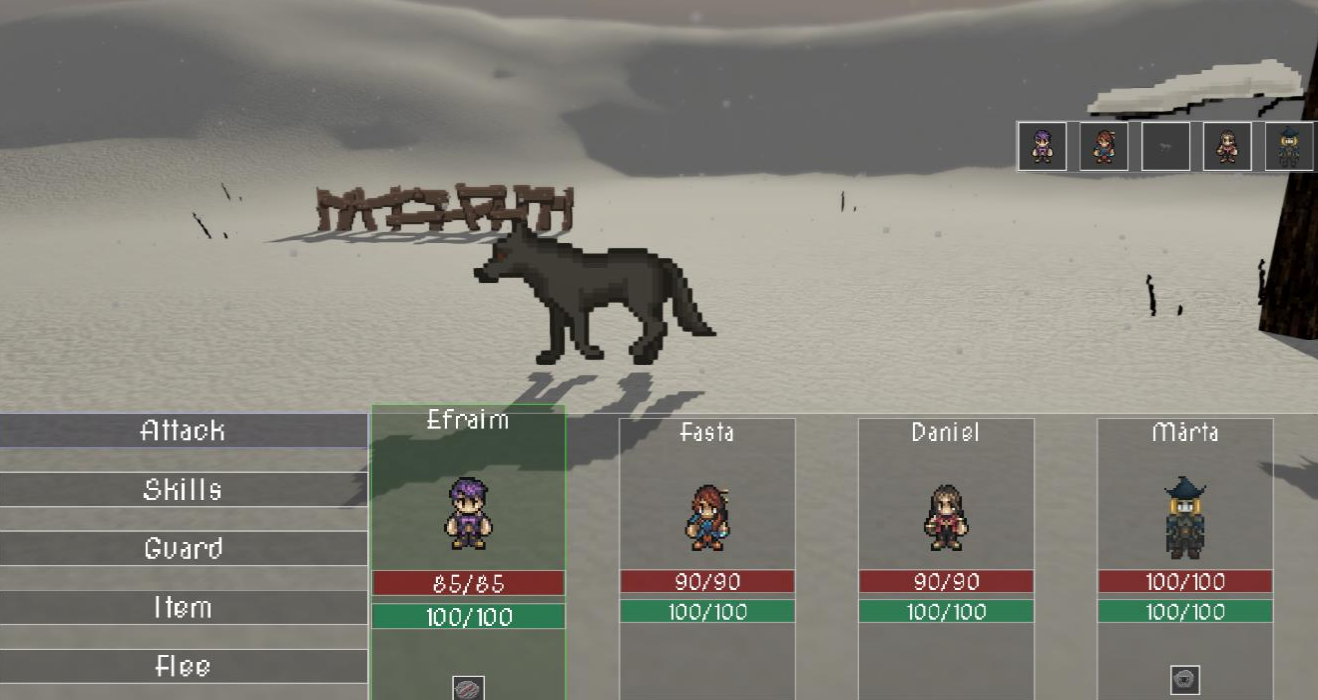 |
|
Software
|
|
|
Game Tour – a Visual Development Environment for a Learning Game
Mihkel Kulu
|
|
|---|---|
| Our lab uses a quiz game designed into a virtual tour of the LVLup Video Game Museum in our Evolution of Video Games course. Designing levels inside the virtual tour with pure code can be tedious and error-prone. Mihkel Kulu has created a development environment named Game Tour to make this work more immediate and efficient. The Game Tour environment features graphical user interfaces for the game designer to design all the features of the game. Poster Thesis |
 |
|
Software
|
|
|
Trimmer – A Trim-sheet Workflow Add-on for Blender
Laas Hendrik Lumberg
|
|
|---|---|
| Trim sheets is a new texturing workflow that allows efficient texturing of repeating surface detail. Laas Hendrik Lumberg has created a plugin called Trimmer for the 3D software package Blender. This tool allows the trim sheets workflow to be used inside Blender with ease and efficiency. The project won second place in the Student Project Contest. Trimmer Poster Thesis |
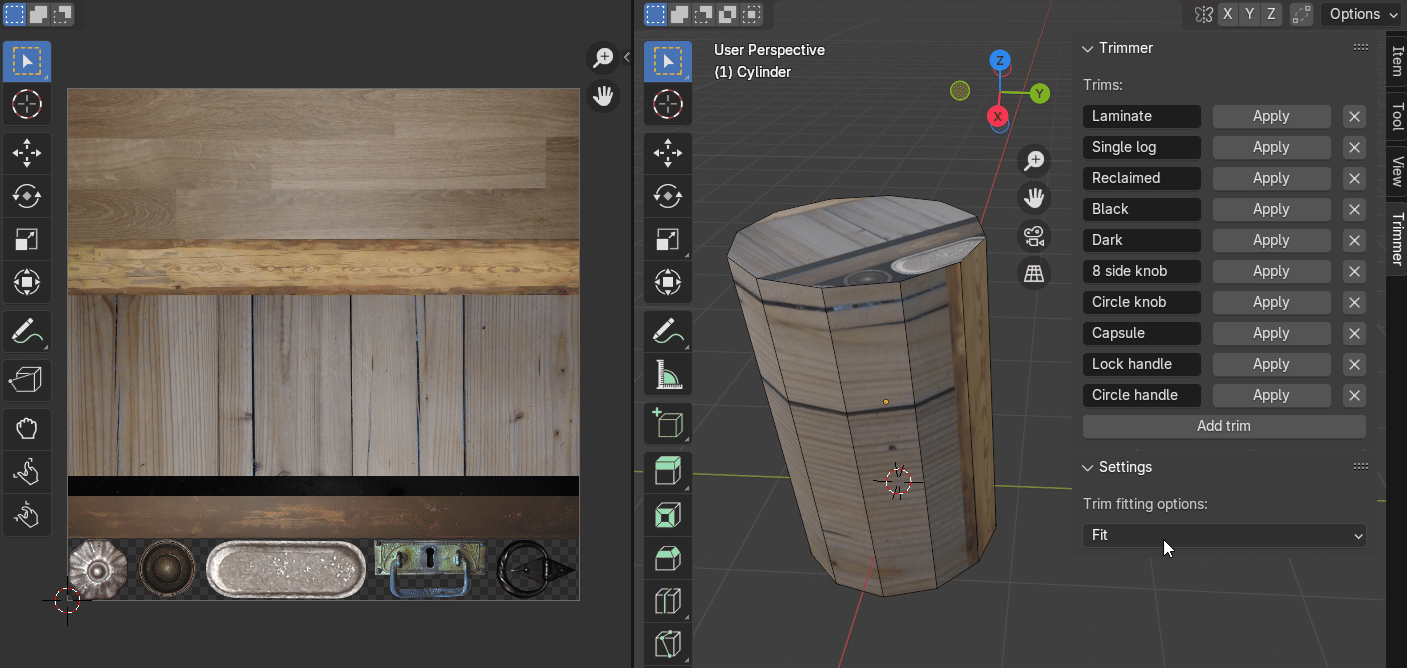 |
|
Software
|
|
|
Image Vectorization Tool for Godot Game Engine
Karl Arthur Kade
|
|
|---|---|
| Vectorizing a raster image has many uses, from unique stylization to graphics upscaling. Oftentimes, an artist does this by hand. Karl Arthur Kade has created a tool that allows it to be done automatically inside the Godot game engine. The VectorizeImage tool features different vectorization algorithms and is available as a Godot asset for any project. Asset Poster Thesis |
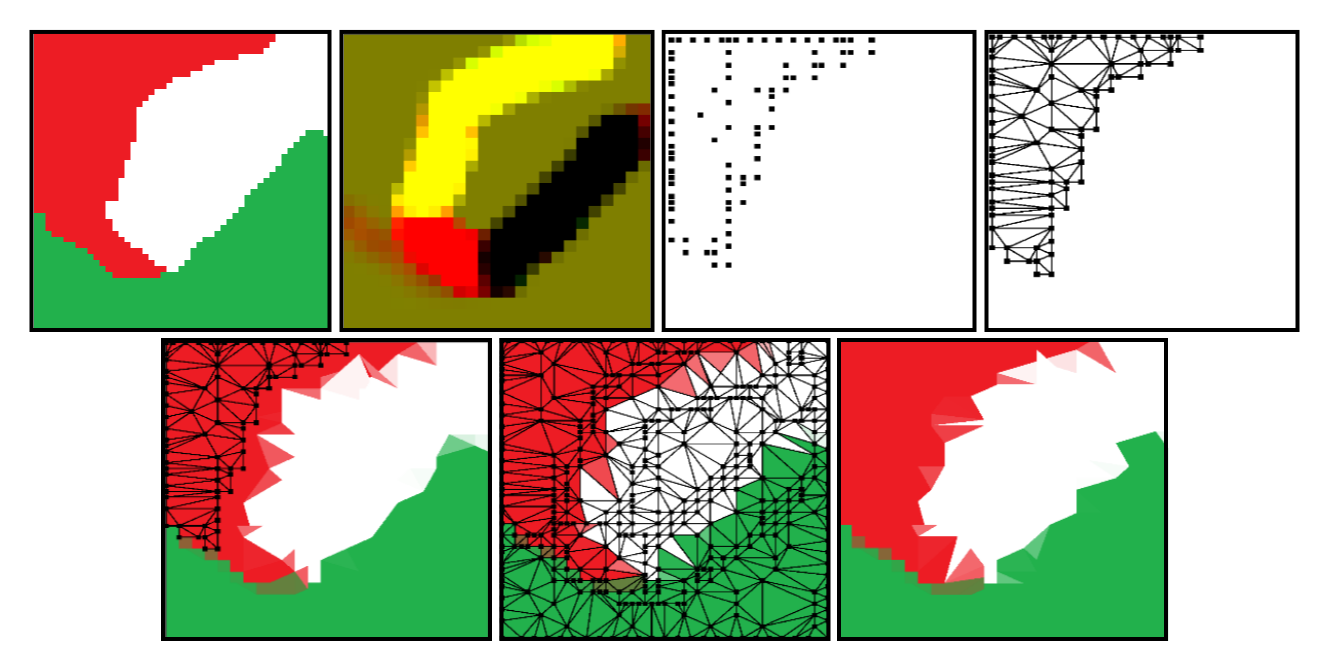 |
|
Software
|
|
|
Box Constructor – Greyboxing Tool for Godot Game Engine
Hannogert Otti
|
|
|---|---|
| When designing game levels, the first step is to create a rough outline of the level. The grayboxing technique allows level designers to do this quickly and make changes to the level very efficiently. Hannogert Otti has created a user-friendly tool called Box Constructor to do just that in the Godot game engine. The solution can be easily added to any Godot project as an asset. Asset Poster Thesis |
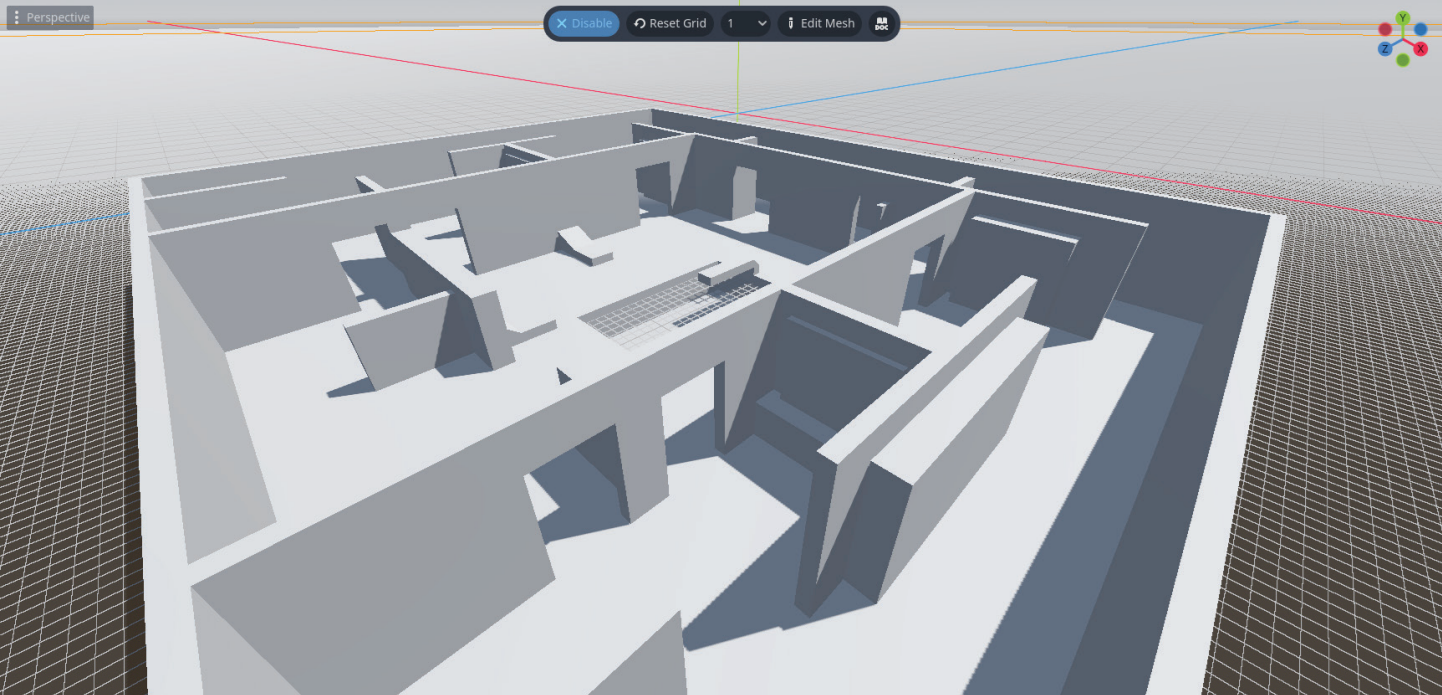 |
|
Software
|
|
|
Procedural Generation of Photorealistic Moon Surface Material
Oliver Jõgar
|
|
|---|---|
| The surface of our Moon is immensely interesting. Examples include craters, seas, continents, and the regolith. Oliver Jõgar has created a new procedural generation algorithm, which creates these surface objects. The surface is then shaded with the Oren-Nayar model to respect the optics of the rough Moon surface. This project was in collaboration with the Tartu Observatory to create a realistic Moon surface in their ULYSSES simulation. Poster Thesis |
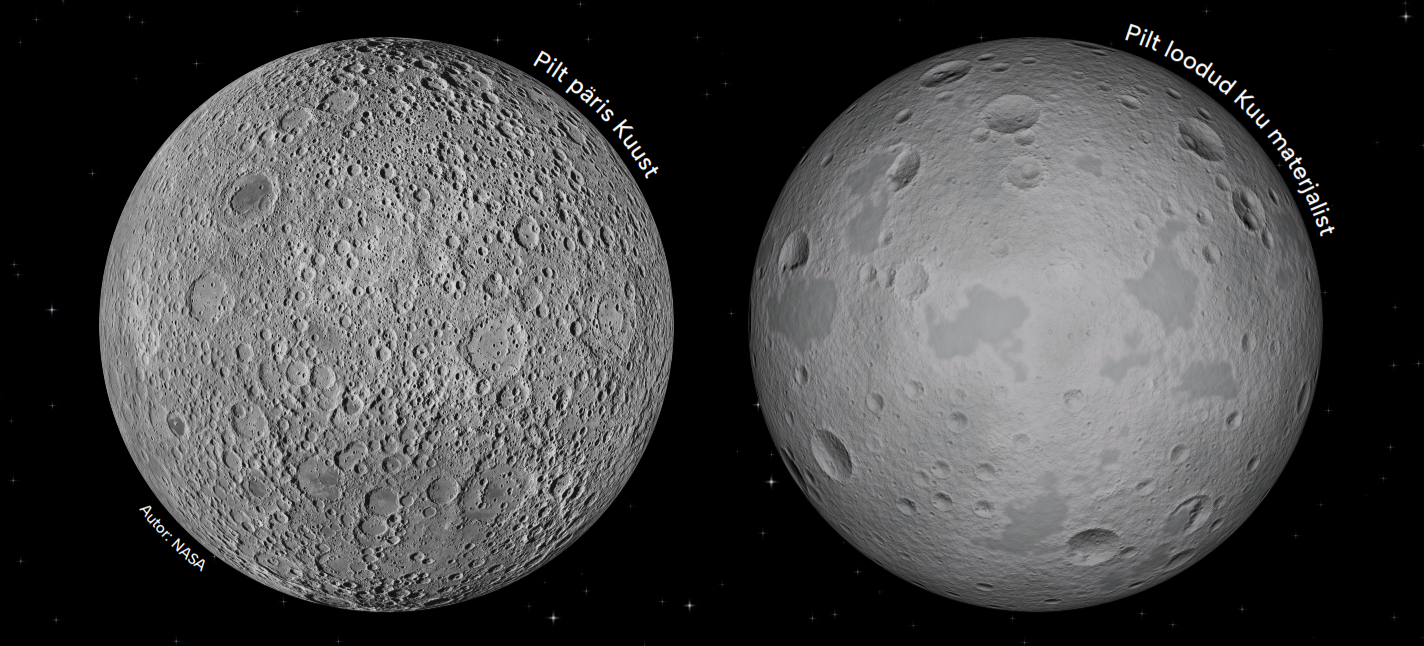 |
|
Research
|
|
|
Procedural Generation of Gas Giants
Simon Prii
|
|
|---|---|
| Gas giants have a thick gas atmosphere, which gives rise to the movement of large masses of different gases, storms, vortices, and many other unique natural phenomena. Simon Prii has in his bachelor's thesis investigated these phenomena and created algorithms to simulate them. His approaches solve different artefacts and aliases that previous procedural solutions suffer from. This thesis won third place in the Student Project Contest. Poster Thesis |
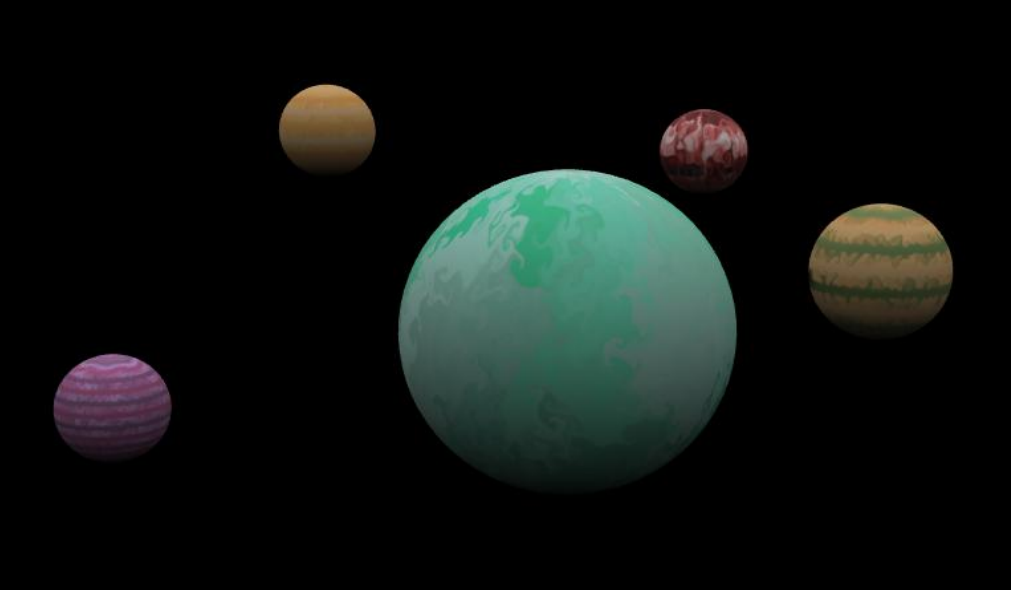 |
|
Research
|
|
|
Stellar Manager – Transportation and Economy Simulation Game in Space
Henrik Tamm
|
|
|---|---|
| Management games can be very complicated to play, and this limits their target audience. Henrik Tamm has designed a space resource management game with the purpose of making a more approachable management game. Stellar Manager has the player manage a limited number of resources and create simple trade routes between planets to develop production lines. Game Poster Thesis |
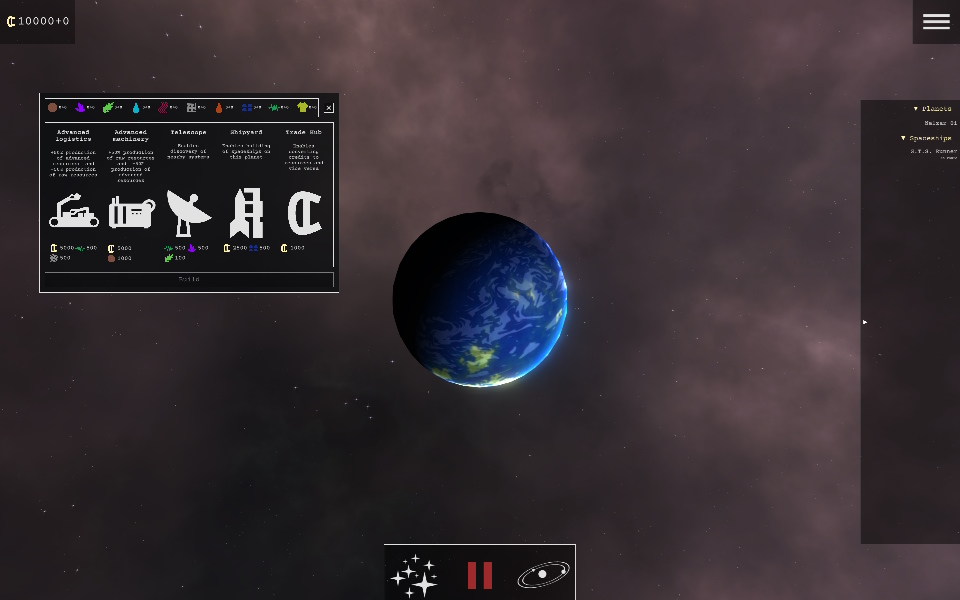 |
|
Software
|
|
|
Terraparsec — A 2D Simulation Game of Exoplanetary Survey and Space Exploration
Rasmus Peäske
|
|
|---|---|
| The themes of space and science fiction increase interest in astronomy. Rasmus Peäske has designed and created an engaging game that teaches scientifically correct astronomical concepts of planet habitability. The players of Terraparsec are to use these concepts to explore and determine the most desirable habitable planets. Game Poster Thesis |
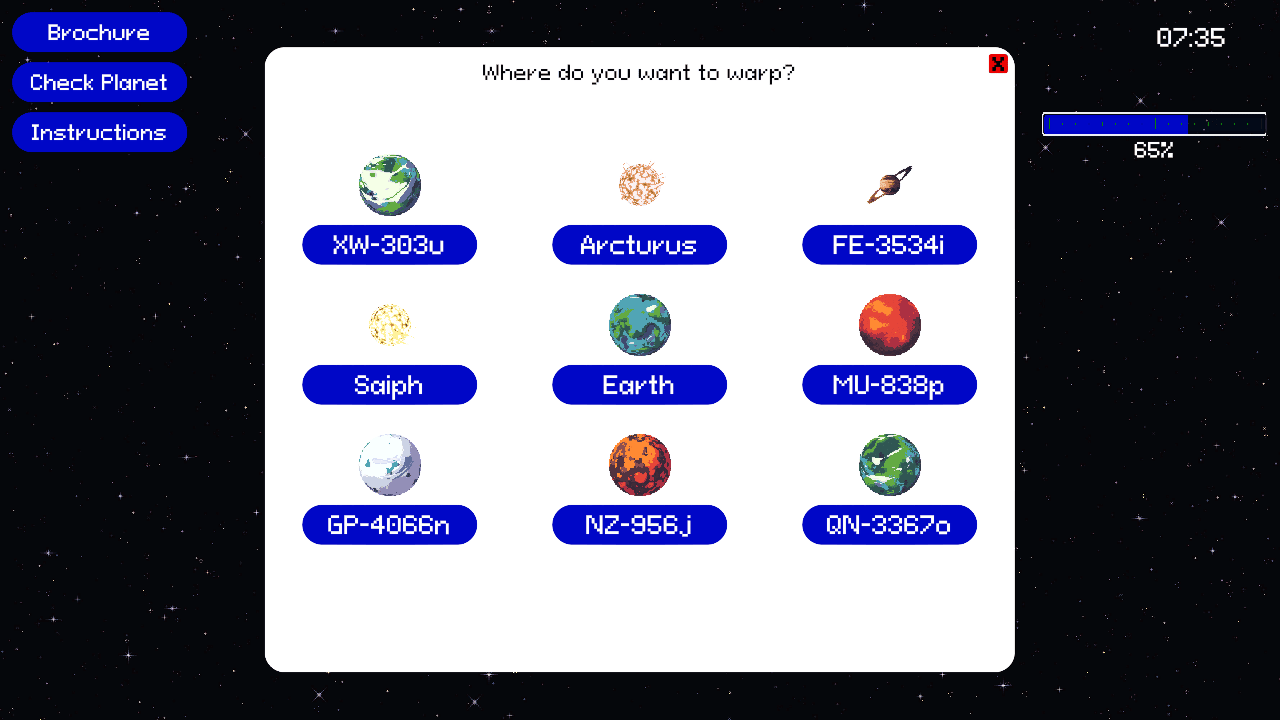 |
|
Software
|
|
|
DeltaVR: Digital Twin
Muhammad Taimour Khan
|
|
|---|---|
| The DeltaVR project is about recreating the Delta educational building in a virtual environment. This allows many different fantastical interactions and exploration that would not be possible in the physical building. Taimour Khan has, in his master's thesis, explored how the project can be developed further. For example, to include more real-world data from the Delta building's sensors in the virtual DeltaVR environment. Poster Thesis |
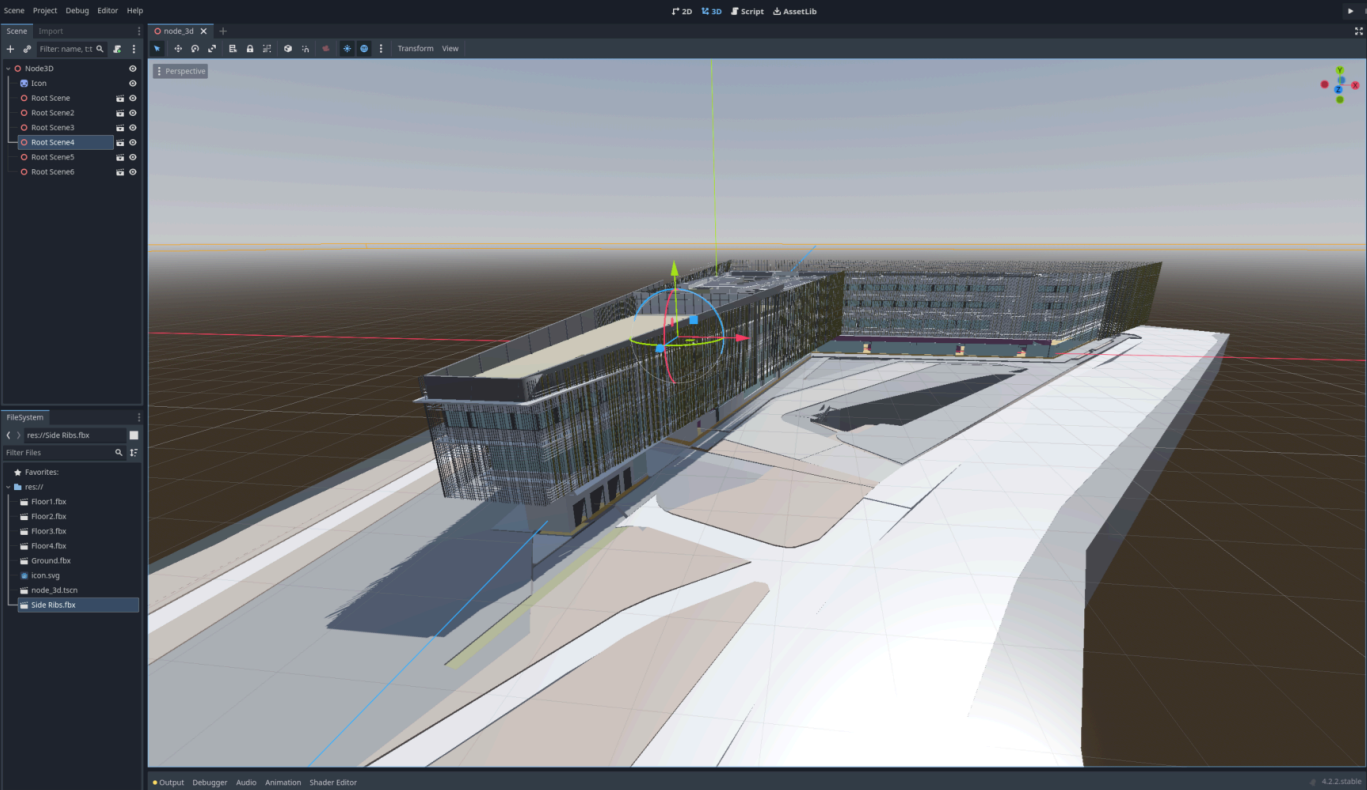 |
|
Software
|
|
|
Formidable Fortress – A Level Based Artillery Game Featuring Rule Based Dynamic Difficulty Adjustment
Euna Islam
|
|
|---|---|
| Designing a good game flow is a difficult task. It needs the game designer to understand their target audience to accurately balance the difficulty with the player's skill. Euna Islam has in her master's thesis designed a game – Formidable Fortress – that balances the level difficulty dynamically depending on the player's progress. When players have too hard a time, the next levels will be simpler and vice versa. Game Poster Thesis |
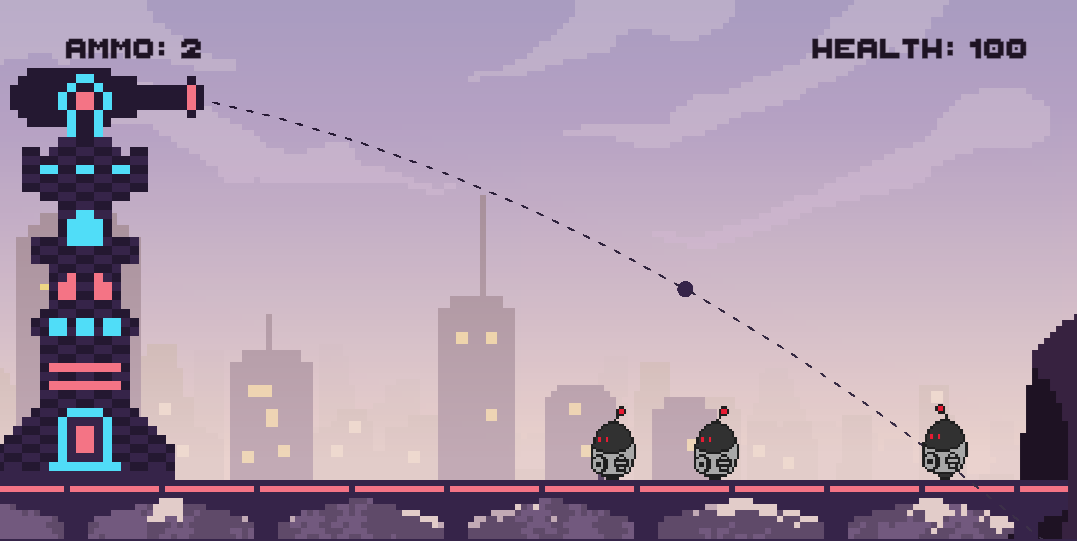 |
|
Software
|
|
2024
|
Wave Function Collapse Algorithm Plugin for Godot Game Engine
Markus Männil
|
|
|---|---|
| The wave function collapse (WFC) algorithm procedurally generates specific and possibly infinite arrangements of individual pieces. The algorithm requires specific rules on what pieces can be matched up with others. Markus Männil has designed and built a well-usable WFC plugin for the Godot game engine. Being a relatively new game engine, Godot previously did not have such a plugin. Mr. Männil's plugin now allows Godot developers to easily specify the WFC pieces and rules to generate the arrangements. Poster Plugin Thesis |
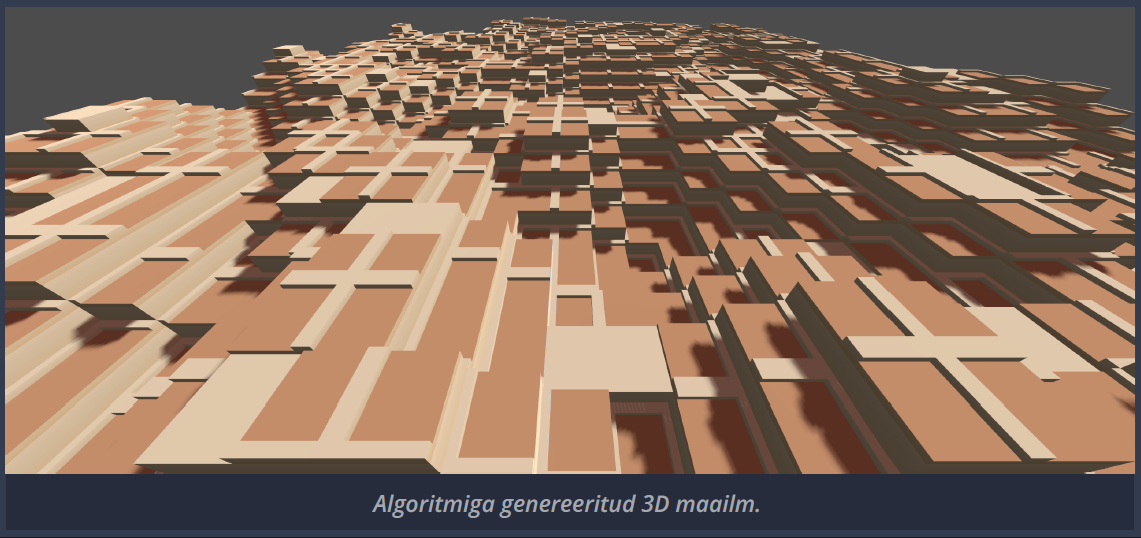 |
|
Software
|
|
|
Steinnriki – a 2D Vertical City-Building Game
Karm Koduvere
|
|
|---|---|
| Karm Koduvere has designed and built an intriguing vertical city-building game Steinnriki. In the game, the player must manage the individual workers and resource piles to balance the supply and demand of the city. Most buildings can be built on top of each other, spanning a vertical city layout. Planning and constructing a well‑working vertical city within the limited space of the mountain is quite fun. Poster Game Thesis |
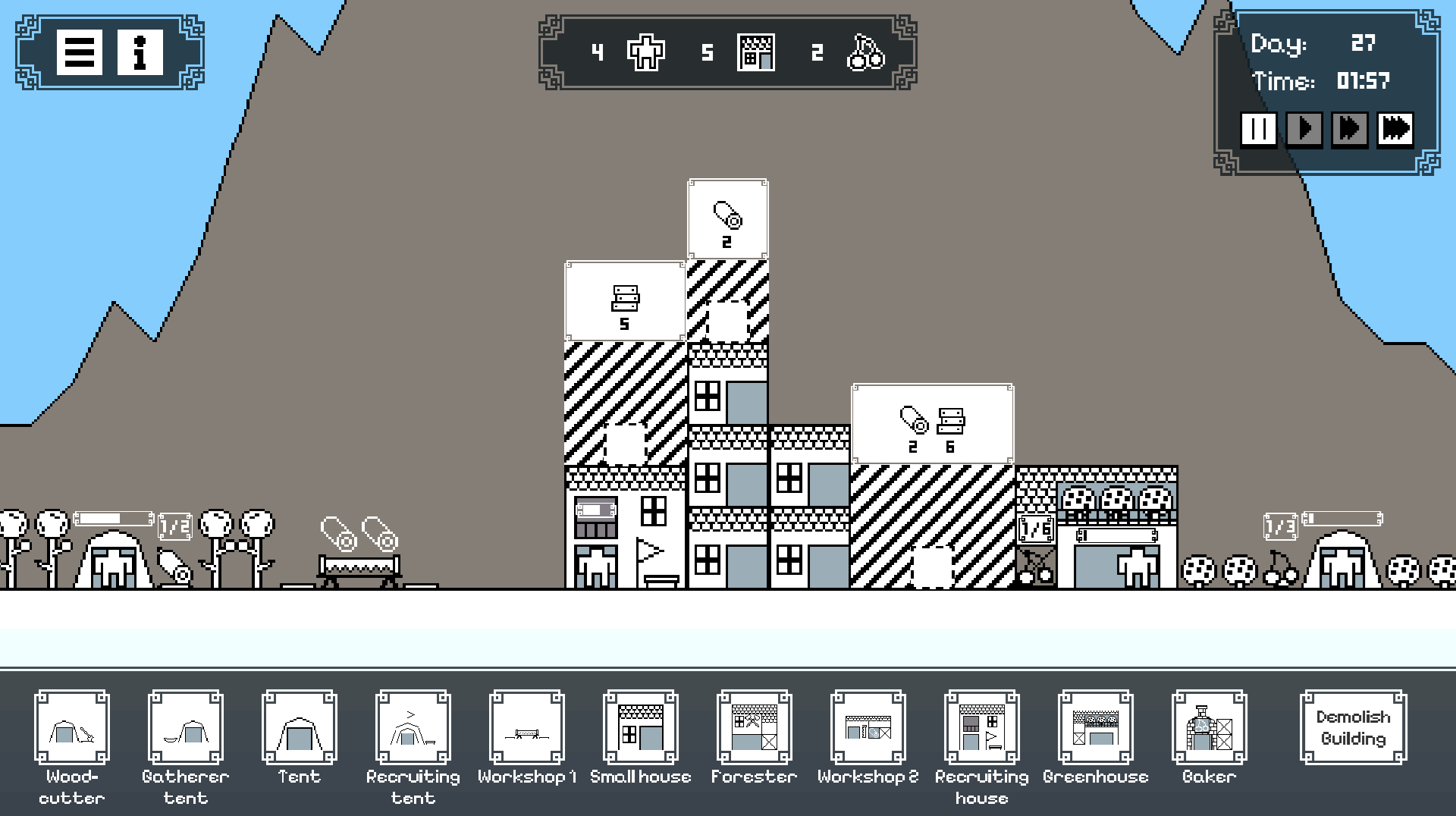 |
|
Software
|
|
|
Thesis Writing Simulator - A Choice-Driven Life Simulation Game
Mihkel Roomet
|
|
|---|---|
| Finding motivation can be difficult no matter the activity. Mihkel Roomet has explored the concept of motivation in their wonderfully designed game Thesis Writing Simulator. The game mechanics are based on six physiological and psychological needs that affect the overall motivation of the player character. The player must choose beneficial activities to support the motivation of writing a thesis. However, when motivation falls, it is not just the thesis writing that suffers, but the activities themselves will also be affected. Poster Game Thesis |
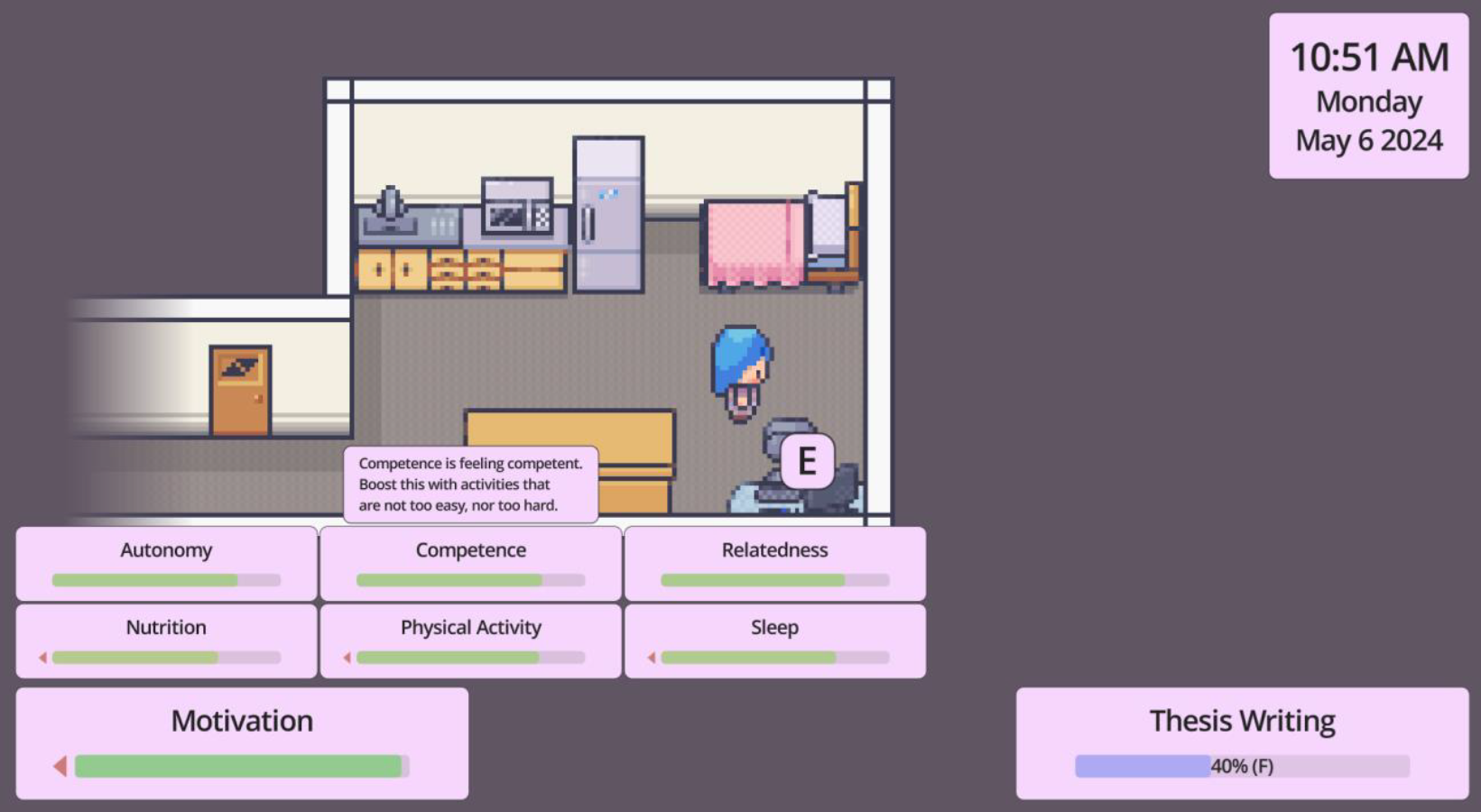 |
|
Software
|
|
|
Pikseon – Procedural Dungeon Crawler
Johannes Voldemar Langsepp
|
|
|---|---|
| Johannes Voldemar Langsepp has designed and developed a procedural dungeon crawler game – Pikseon. The levels of Pikseon are procedurally generated using the wave function collapse algorithm. That algorithm allows the levels to be assembled from a set of individual rooms with connection rules. These rules specify which rooms can be connected together. Such an approach allows every playthrough of Pikseon to be unique. Thesis |
 |
|
Software
|
|
|
Battle for Success – a Hybrid-casual Strategy Game
Kert Karsna
|
|
|---|---|
| Hybrid-casual games combine elements of hyper-casual games, like short playtime and ease of access, with a higher challenge attributed to midcore games. As such, Kert Karsna designed and developed a game Battle For Success, where units from two towers go and battle. Depending on the played race and unit composition, The player must discover good strategies to go against the opponent. Thesis |
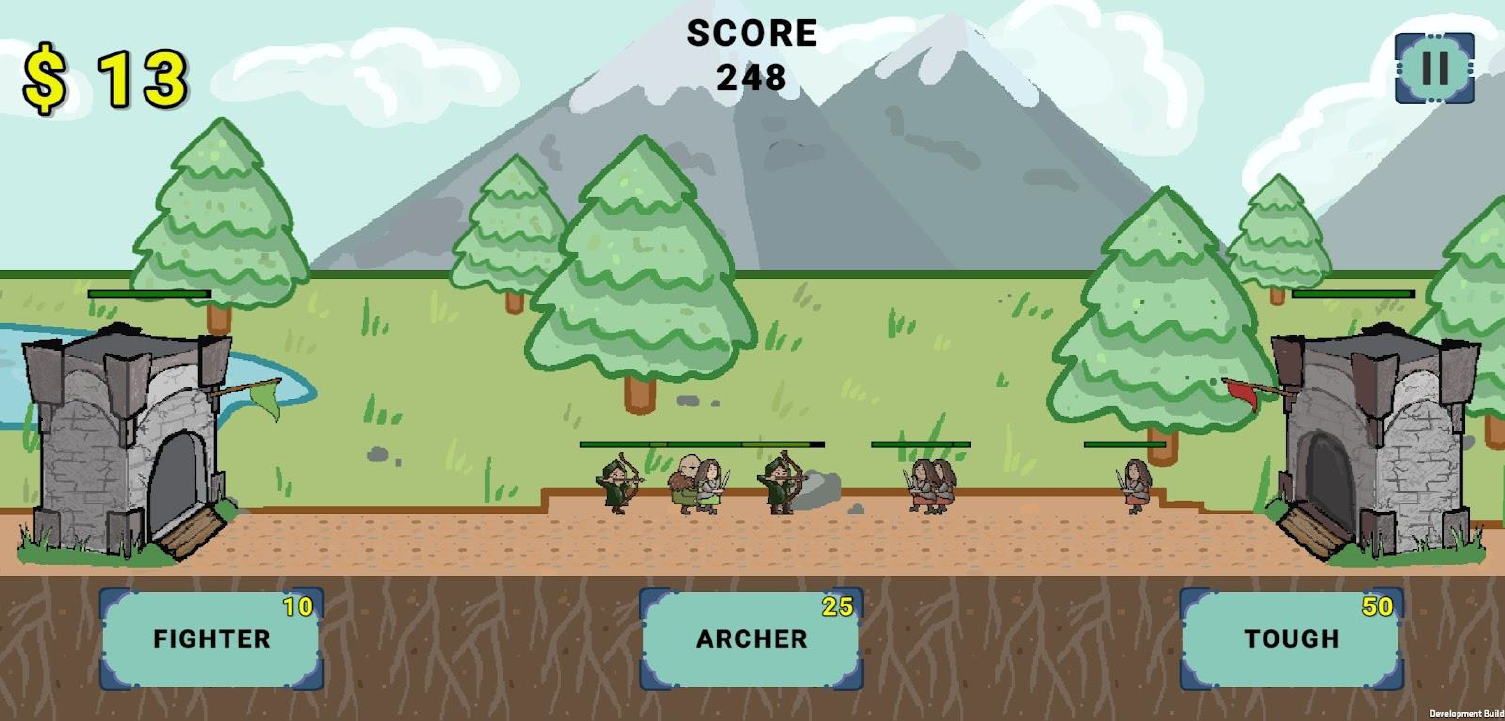 |
|
Software
|
|
|
Injecting Inputs Over Internet Connections
Raiko Valo
|
|
|---|---|
| Sending input data from a game controller reliably over the air to a receiving computer is very important for good gameplay control. Raiko Valo has investigated the downsides of using Bluetooth for that task and created a library for sending the data over Wifi instead. The thesis compares Mr. Valo's solution using a custom-built controller with several commercially available game controllers. Poster Thesis |
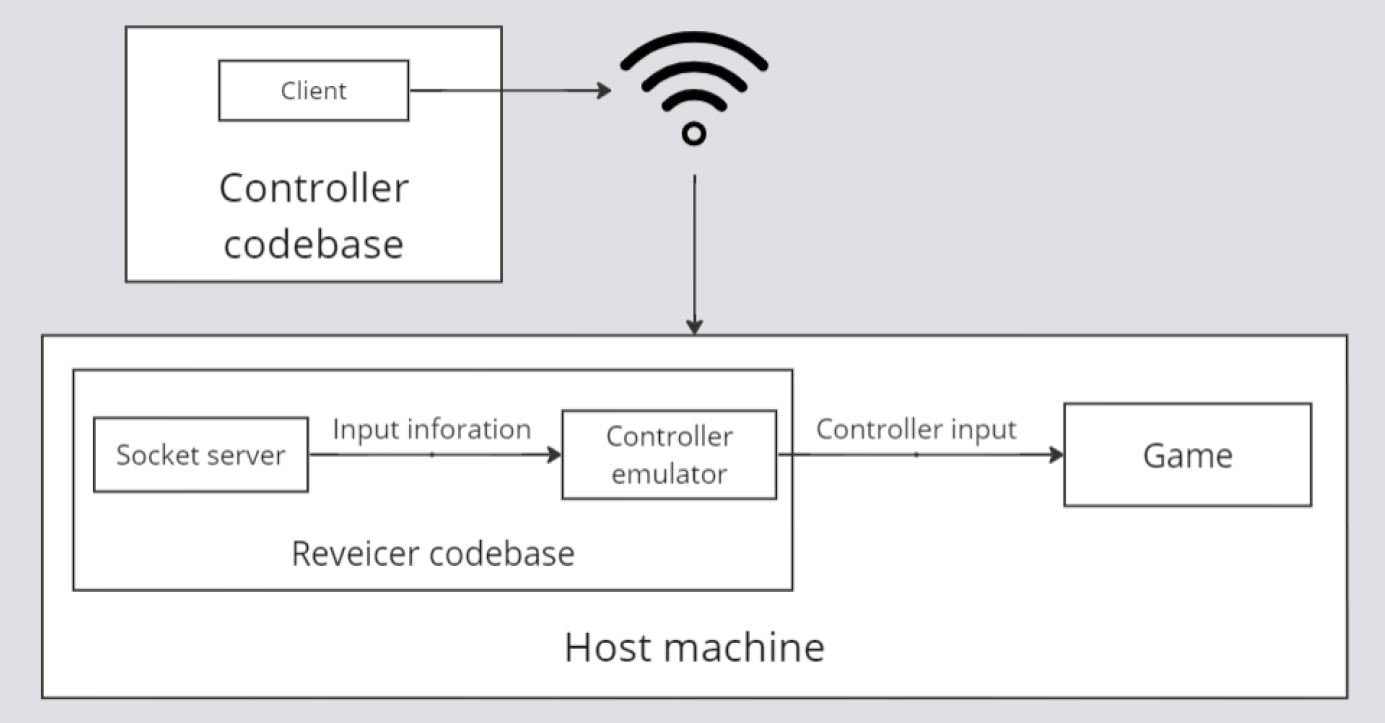 |
|
Software
|
|
|
Biome Hazard Creation for Blastronaut Game
Viljam Ilves
|
|
|---|---|
| One of the issues in Blastronaut is the lack of a good game flow accompanied by interesting challenges. Viljam Ilves has designed several challenges for new upcoming biomes of Blastronaut. For the jungle biome, Mr. Ilves created a plant that, upon death, spawns more of itself. He then made a black hole for the mesa biome, which pulls nearby rocks and the player into itself. These new hazards would give the players more interest in continuing to play the Blastronaut game. Blastronaut Thesis |
 |
|
Software
|
|
|
Landing Page for Blastronaut
Marek Lepik
|
|
|---|---|
| Video games often require a dedicated webpage to collect all the information about the game and the different stores the game is sold at. Marek Lepik has designed a modern landing page for the Blastronaut video game. The single-page website features animated sections that describe the most important aspects of Blastronaut. The page is accompanied by a video of the game and a visible button to its Steam store page. Poster Webpage Thesis |
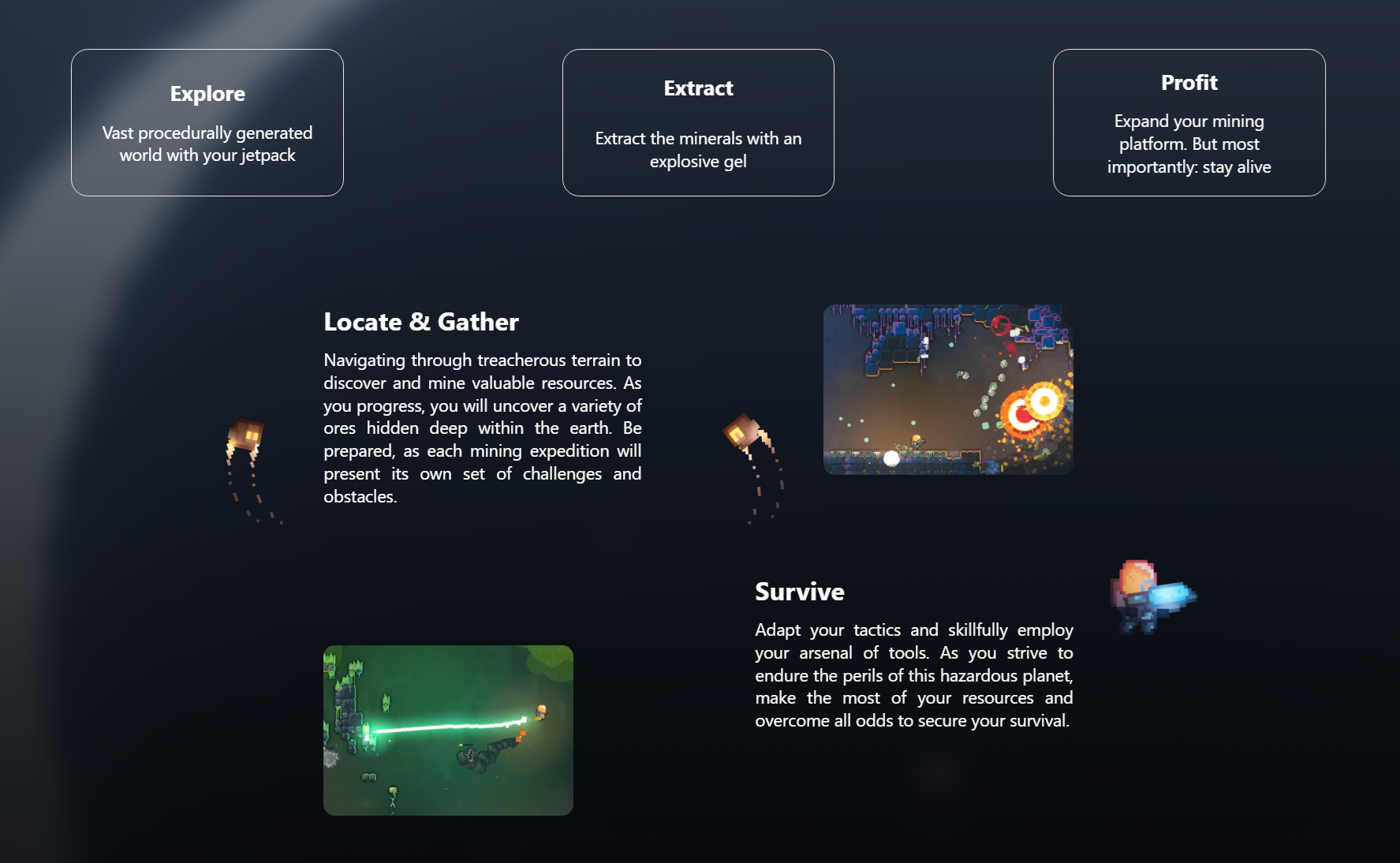 |
|
Software
|
|
|
UE5 Flair's Integration – UI, Shaders, and Image Algorithms for NPR
Alicia Sudlerd
|
|
|---|---|
| Alicia Sudlerd worked with the computer graphics company Artineering to bring their non-photorealistic rendering (NPR) tool Flair to the popular Unreal Engine game engine. With NPR and Flair, the idea is for artists to be able to stylize their renders in ways that may not be photorealistic. Examples include by drawing only the outlines of shapes, blurring certain parts of the render, and discretizing the color palette. In her work, Alicia has studied the architecture of Unreal Engine, designed and developed a usable tool within the engine, and ported a good portion of Flair functionality. Poster Thesis |
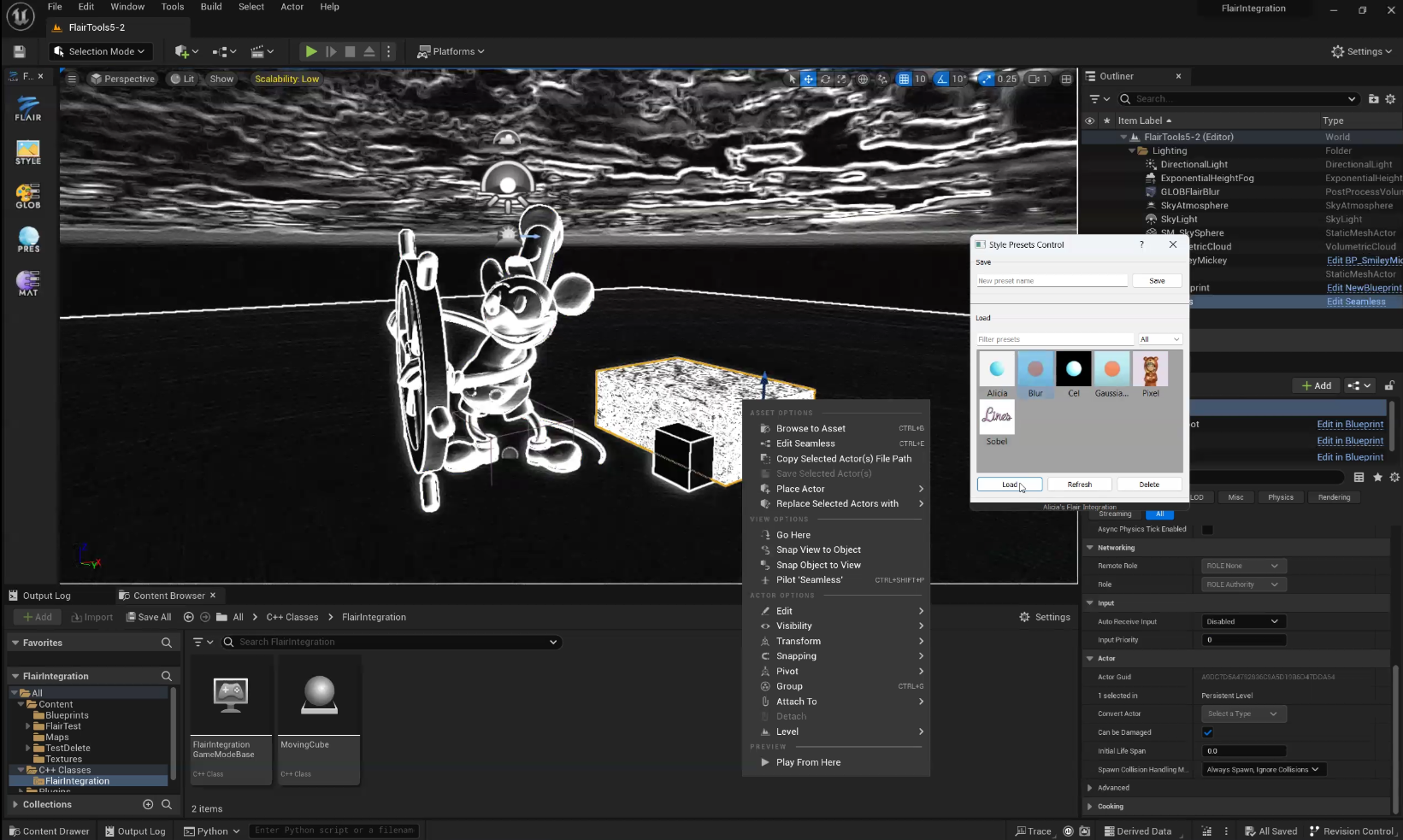 |
|
Software
|
|
|
Video Game Design and Development Bachelor’s Curriculum
Raimond Tunnel
|
|
|---|---|
| Creating a video game design and development curriculum is a big and multifaceted challenge. In his PhD dissertation, Mr. Tunnel has surveyed the Estonian game development industry and other similar curricula across Europe. Publication I: A Survey of Estonian Video Game Industry Needs was a quantitative survey of the local industry's needs for specific skills and tools. Publication II: A Qualitative Study of the Estonian Video Game Industry Expectations went more in-depth with a qualitative study into the varying peculiarities of individual companies regarding their expectations for new employees. Publication III: Classification of Video Games Bachelor’s Curricula surveyed similar curricula in Europe, profiled and classified them into curricula focused on art, design and development, and programming. The design of a new Bachelor's curriculum presented in the dissertation is based on the many findings from the three surveys. Thesis |
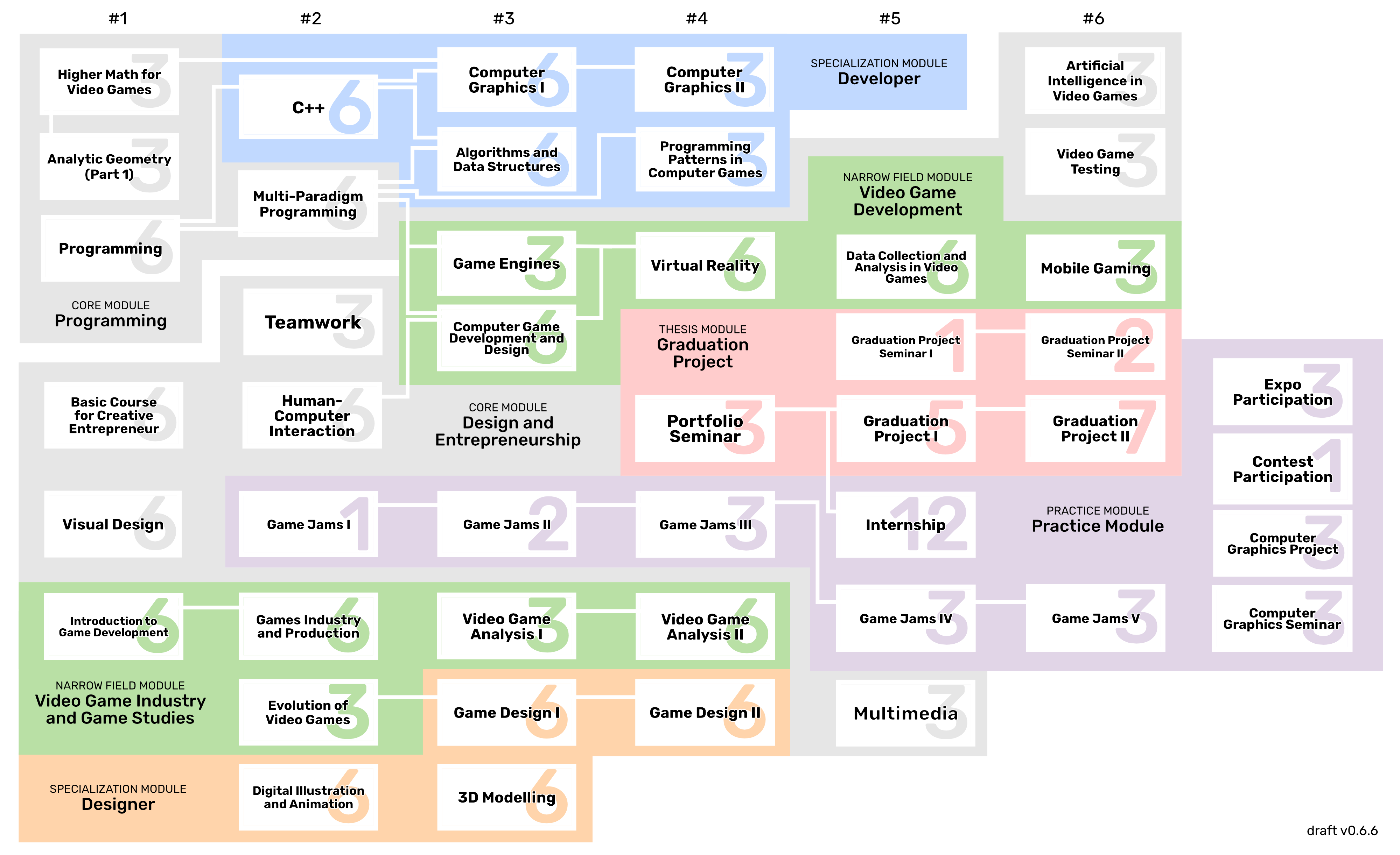 |
|
Survey
|
|
2023
|
Shape Grammar Editor
Mathias Plans
|
|
|---|---|
| Years prior to starting his Master's thesis, Mathias Plans had developed a procedural generation system using shape grammars for his Bachelor's thesis. Shape grammars are a way of defining formal grammar systems where words are buildings. In his Master's thesis, Mr. Plans built an editor using the Godot game engine so that it would be easy for other people to use his procedural generation workflow. The editor allows the creation of rules based on shape editing. The rules can be iterated on. The suitable result can be exported as an STL file. The grammar itself can be imported directly to Godot through a plugin developed by Mr. Plans. Poster Thesis |
 |
|
Software
|
|
|
DeltaVR – Multiplayer 2.0
Toomas Tamm
|
|
|---|---|
| Toomas Tamm continued from his and Joonas Püks' Bachelor's thesis works on the DeltaVR showcase project. For his Master's thesis, Mr. Tamm added several more minigames and experiences. For example, a drawable whiteboard and a space walk experience. The most needed component was a comprehensive tutorial for people new to VR. All of these were synchronized with multiplayer, which was reworked to support local area network connections. Among several other expos, Mr. Tamm showed and playtested DeltaVR in MängudeÖÖ 2022. DeltaVR Thesis |
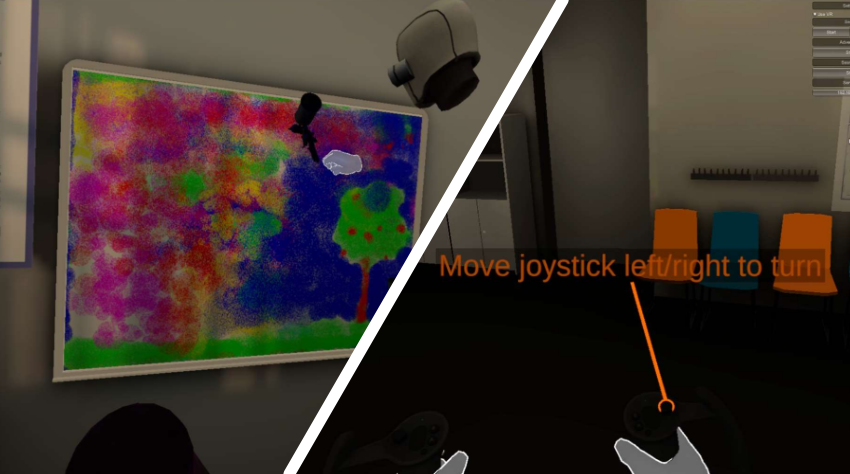 |
|
Software
|
|
|
Minesweeper With Friends – An Immersive Multiplayer Puzzle Game
Kaarel Rüüsak
|
|
|---|---|
| For his Master's thesis, Kaarel Rüüsak explored a new design for the classical Minesweeper game. In this version, Mr. Rüüsak focused on creating an immersive multiplayer experience with cooperative gameplay. In Minesweeper with Friends the player have a shared resource, which is diminished with every move and replenished by not picking the tiles with mines. Each player also has health, which they lose every time they pick a mine. Mr. Rüüsak showed and playtested his design in several expos, including Comic Con Baltics 2022 in Lithuania. Minesweeper with Friends Poster Thesis |
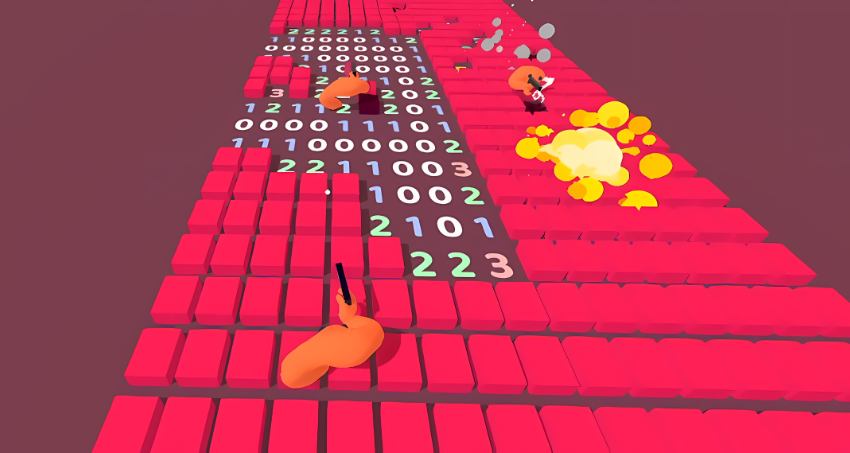 |
|
Software
|
|
|
Profiler Improvements for the Godot Game Engine
Mateus Surrage Reis
|
|
|---|---|
| The Godot game engine has been gathering popularity due to being lightweight but capable. The engine is developed as open‑source and thus anyone can contribute. Mateus Surrage Reis identified a substantial problem in the engine's performance profile. Namely, the time spent on internal API calls was not explicitly calculated and shown. This resulted in developers often seeing a performance drop but had no information on what was actually causing it. Mr. Reis solved that issue in his Master's thesis by getting acquainted with the engine's source code, providing a fix, and submitting a pull‑request to Godot's GitHub repo. Thesis |
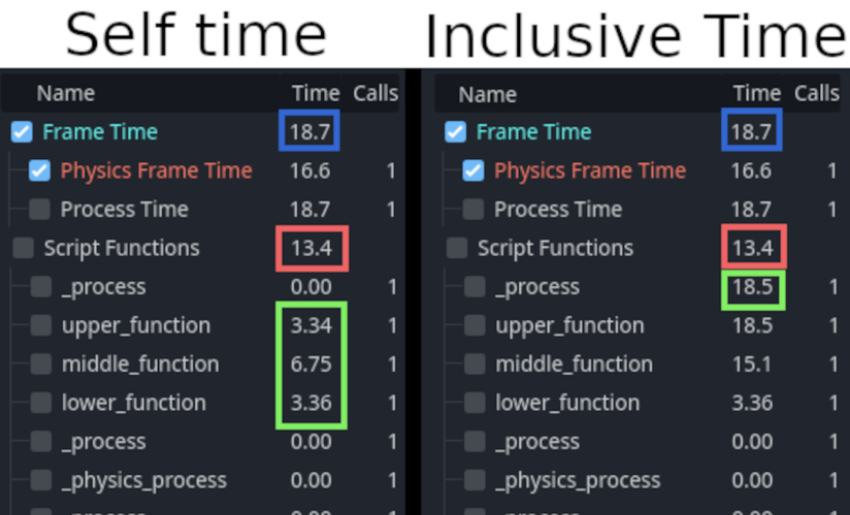 |
|
Software
|
|
|
Cross-Country Horse Run – Hyper-Casual Mobile Game
Käroly Raudsepp
|
|
|---|---|
| Inspired by her own horse riding experience, Käroly Raudsepp designed and implemented for her Bachelor thesis a mobile game about horse riding. This game was designed to be hyper-casual, meaning that it would be extremely intuitive to play and feature simple and short but still effective fun gameplay. To create a challenge for the player, Ms. Raudsepp designed and modeled three different obstacles for the ever‑running horse to jump over. This thesis was started out together with the hyper‑casual video game company Joyixir. Poster Thesis |
 |
|
Software
|
|
|
Take a Leap – Hyper-Casual Mobile Game
Grete Hollo
|
|
|---|---|
| Designing hyper-casual games that are extremely intuitive to learn and provide an entertaining user flow is quite difficult. Grete Hollo tackled that problem in her Bachelor's thesis by designing and implementing a simple platformer game. In Take A Leap the player has to time and direct the main character's jumps correctly to land on the next platform and progress through an endless level. This thesis was started out together with the hyper‑casual video game company Joyixir. Poster Webpage Thesis |
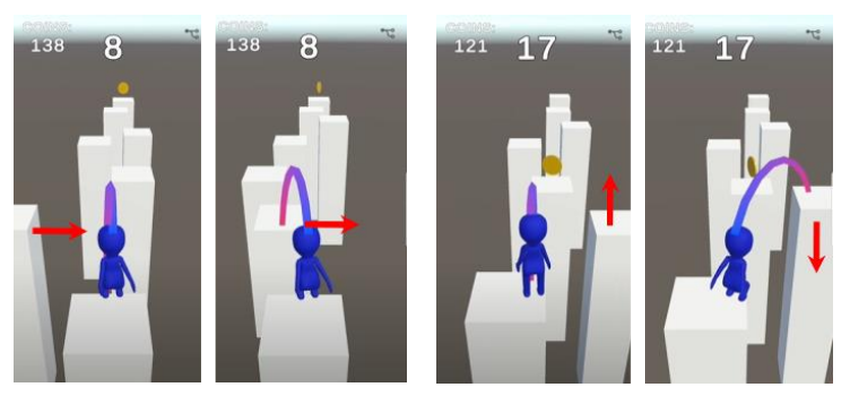 |
|
Software
|
|
|
Designing a Construction System for Blastronaut Players
Markus Sulg
|
|
|---|---|
| Base-building in the Blastronaut video game had several usability problems. In his Bachelor's thesis, Markus Sulg tackled the challenge of identifying and fixing these issues. Mr. Sulg identified four problematic areas specific to the base construction system in the game. The fixes were shipped within two major Blastronaut updates titled Companion and Aqueous. Feedback was gathered from both the Game Developers Conference 2023 expo visitors as well as through separate feedback forms utilizing the UMUX usability questionnaire. Thesis |
 |
|
Software
|
|
2022
|
Spookytown – A 3D First-Person Horror Adventure Game
Kristjan Korela
|
|
|---|---|
| Kristjan Korela designed and implemented for his thesis a pretty lengthy horror-adventure game Spookytown. The game world has fantastically designed architecture and characters. The game world is a mix of coziness and spookiness. Everything seems cute and welcoming until a giant pumpkin monster starts chasing you through an underground tunnel. In total there are several hours of gameplay here. The thesis describes, along with the inspiration, implementation, and playtesting, the environment and puzzle designs for the four chapters of Spookytown. So, to avoid spoilers you might want to play the game before reading the thesis itself. Poster Thesis |
 |
|
Software
|
|
|
Golfotron – A Fast-Paced 2D Game
Pelle Holden Porila
|
|
|---|---|
| In the Golfotron game, the player controls a yellow circular disk that they need to throw through levels populated with dangerous obstacles. What makes this game unique is the fact that you need to also catch the disk mid-flight to stop it from being destroyed. Pelle Holden Porila has designed and implemented this pretty cool game that has an amazing visual look. The aesthetics have been both excellently designed and implemented by Mr. Porila. The implementation features professional use of signed distance fields to give game objects a crisp look. The thesis describes this in detail and features two iterations of playtesting to both discover usability bugs and validate the design of the game throughout the development process. Thesis |
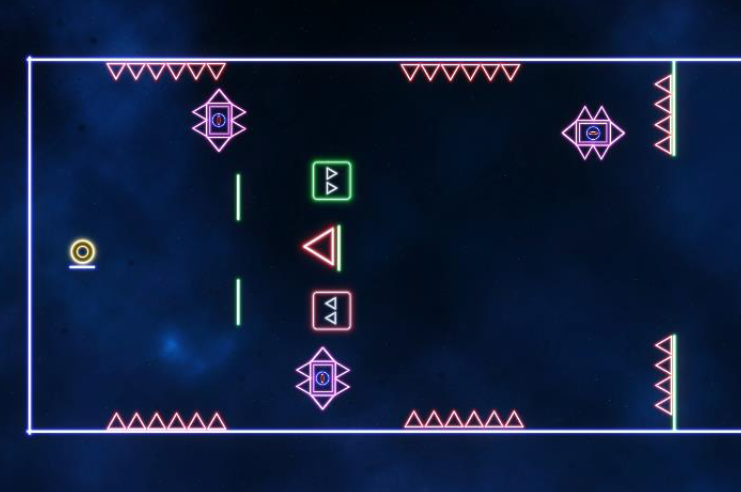 |
|
Software
|
|
|
Smart Solutions for Game Marketing
Katre Tiku
|
|
|---|---|
| Video game marketing can often be a source of confusion and bother for game developers. However, if no one knows about your game, no one will know to play it. Katre Tiku has tackled for her thesis a problem of helping indie game developers out with that. She has created an extensive guide to marketing a video game on Twitter, TikTok, Reddit, Instagram, and Facebook platforms. The guide features very useful instructions regarding what to post and when to post according to the peculiarities of each platform. There is even a small video tool created, which automatically cuts and crops a video to be suitable for these platforms. The guide is based on a pre-survey made by Katre Tiku. This and other details are described in her thesis. This project was highlighted in the student project contest. Guide, poster Thesis |
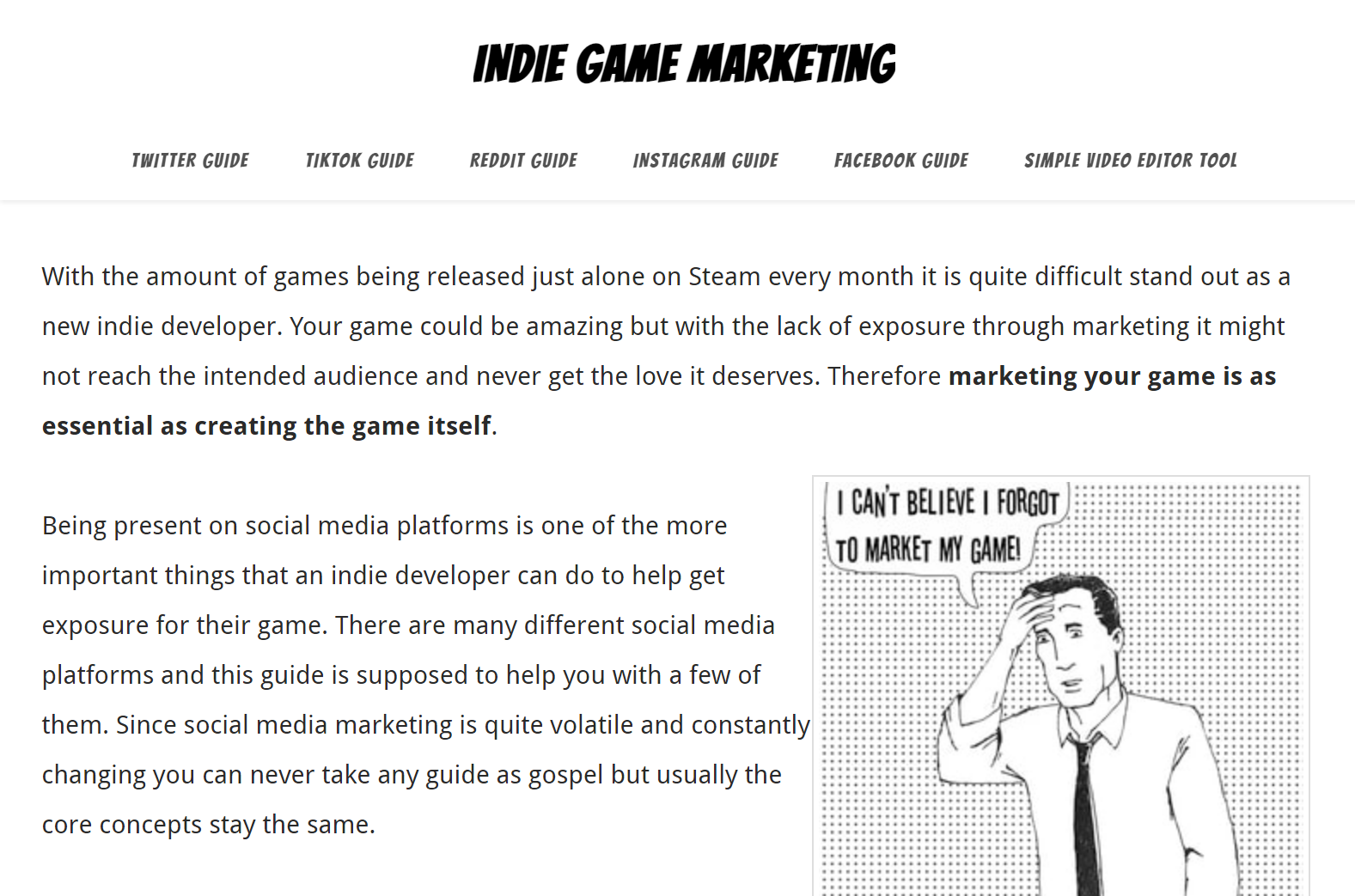 |
|
User Manual
|
|
|
Water Simulation for the Game Blastronaut
Arlo Tammekun
|
|
|---|---|
| In procedurally generated worlds, there are usually some water bodies on top of the solid ground. As the solid ground can be destroyed or modified by the player, the water bodies need to be simulated to interact with that change. This is also the case in Blastronaut, for which Arlo Tammekun has implemented water simulation based on cellular automata. When the player destroys the ground under some water body, the water will flow according to gravity and pool at another location. The thesis describes the implementation of this simulation and the thorough performance testing to determine the performance hit this new simulation has on the game. Poster Thesis |
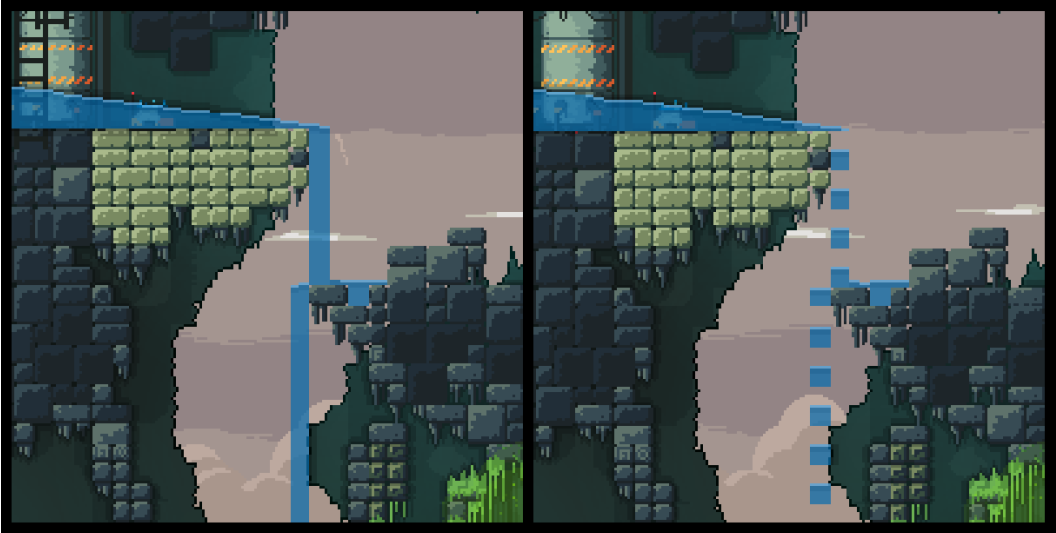 |
|
Software
|
|
|
Twitch Integration for Blastronaut Game
Hans Matthias Andreas
|
|
|---|---|
| One interesting way of playing a video game is by many people simultaneously using Twitch chat as the control input. Hans Matthias Andreas has for his thesis added just that for the Blastronaut game. With the use of text commands entered into the Twitch chat, many people can simultaneously control a robot character in Blastronaut. The thesis describes the technical integration, design of the commands, and also redesigns of the game itself to account for this delayed multi-user input. The solution was validated via a usability testing session on Twitch. Poster Thesis |
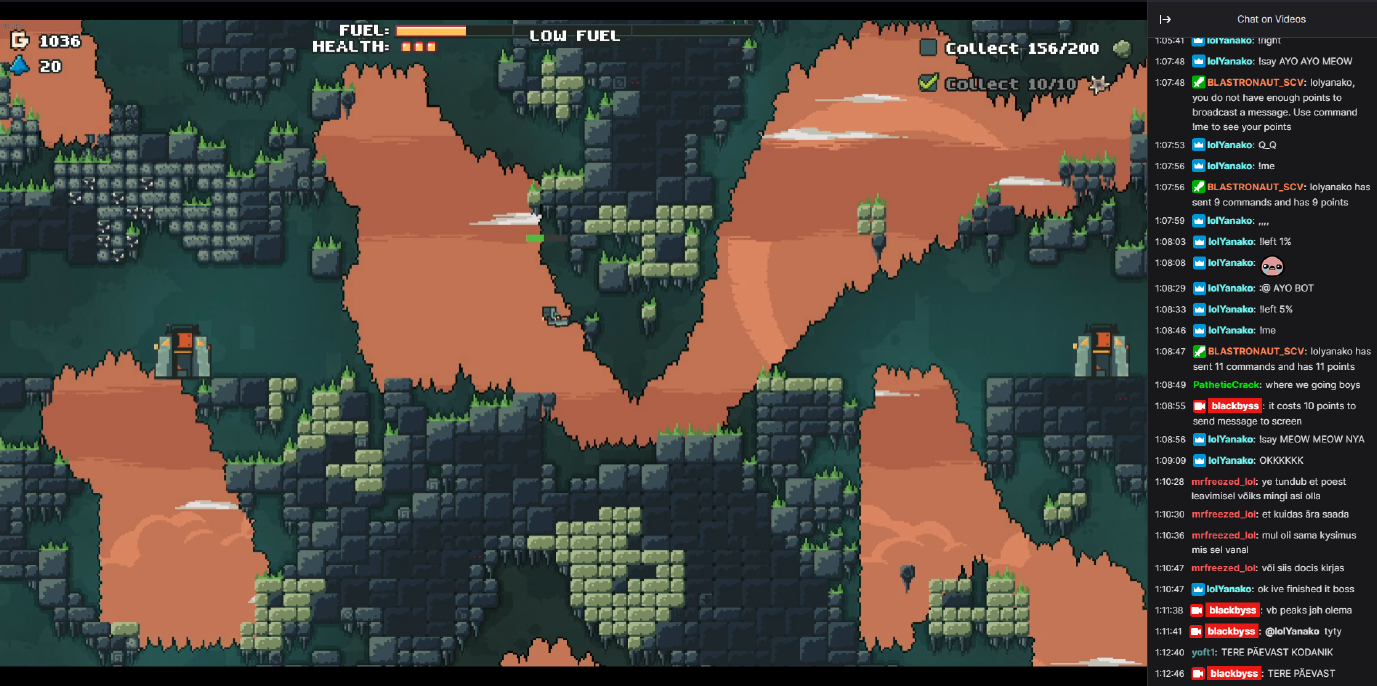 |
|
Software
|
|
|
SOFIT Level Editor
Tanel Orumaa
|
|
|---|---|
| SOFIT is a tactical forces VR training simulator developed by Criffin. It features scenarios featuring hostage situations and bomb threats. In his thesis, Tanel Orumaa created a level creator and editor for this software. That tool is very important as it allows very quickly and easily to model the layouts of specific buildings required for the training. The level editor starts with a 2D blueprint view of the site. There the level designer can sketch out the rooms, doors, and windows. Then the program moves to a 3D view with meshes of walls generated based on the previous blueprint. In that view, the designer can place everyday 3D objects to the level. The thesis describes the design and implementation of this and the validation of this workflow via methodical user testing. Thesis |
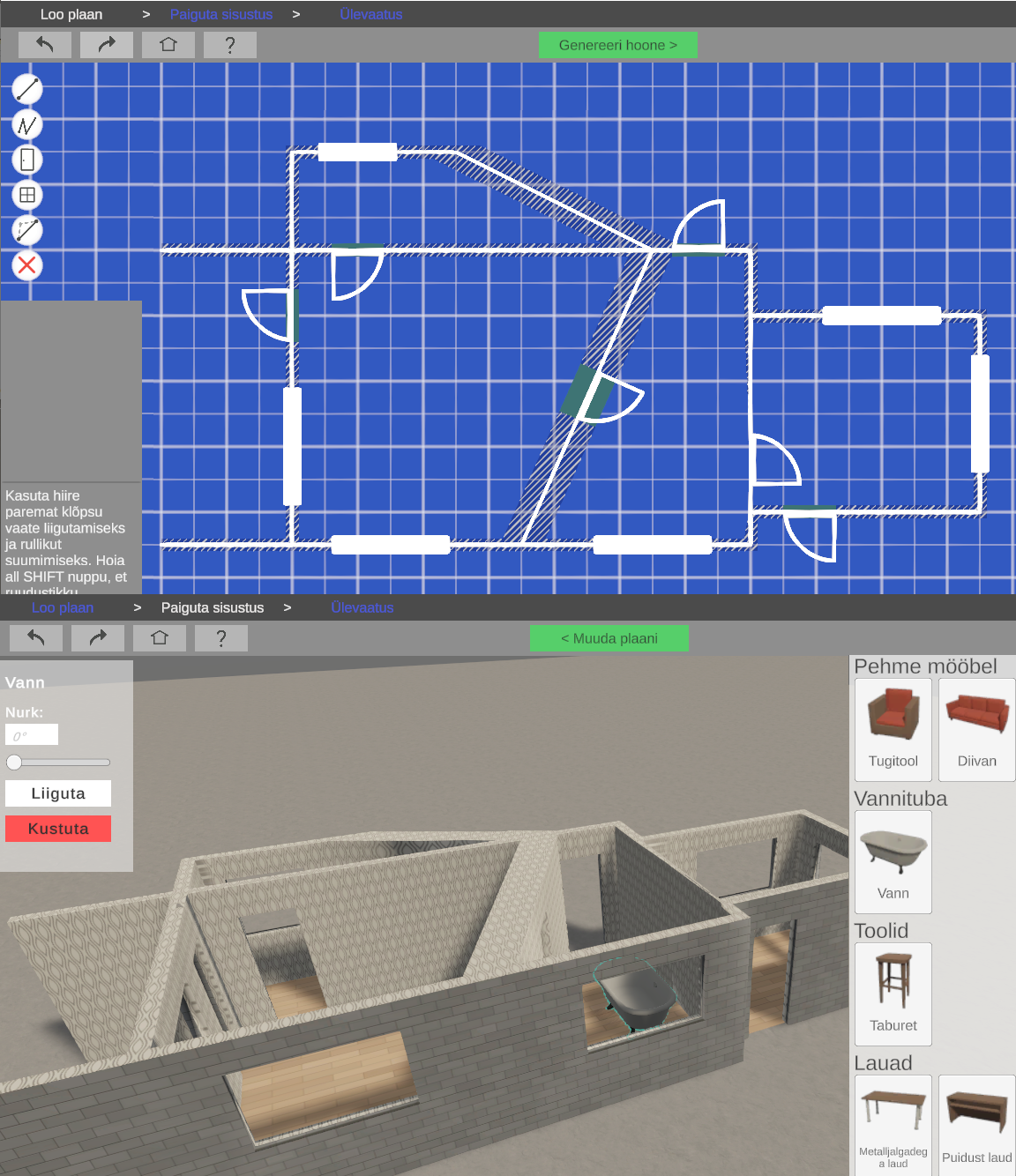 |
|
Software
|
|
|
DeltaVR – Multiplayer
Joonas Püks
|
|
|---|---|
| DeltaVR is a digital copy of the Delta building optimized and made interactive for VR in a previous thesis by Toomas Tamm. In this advancement made by Joonas Püks, the application was extended to include multiplayer support. This allows many people to simultaneously visit the virtual Delta building and interact with each other in that virtual environment. Mr. Püks has also developed cross-platform support between PCVR, Oculus Quest, and PC platforms. This means that one person can be using the HTC Vive in our lab, another an Oculus Quest, and even more people can join in via just using a PC. The thesis explains the challenges of adding multiplayer and cross-platform support to an existing project. Poster Thesis |
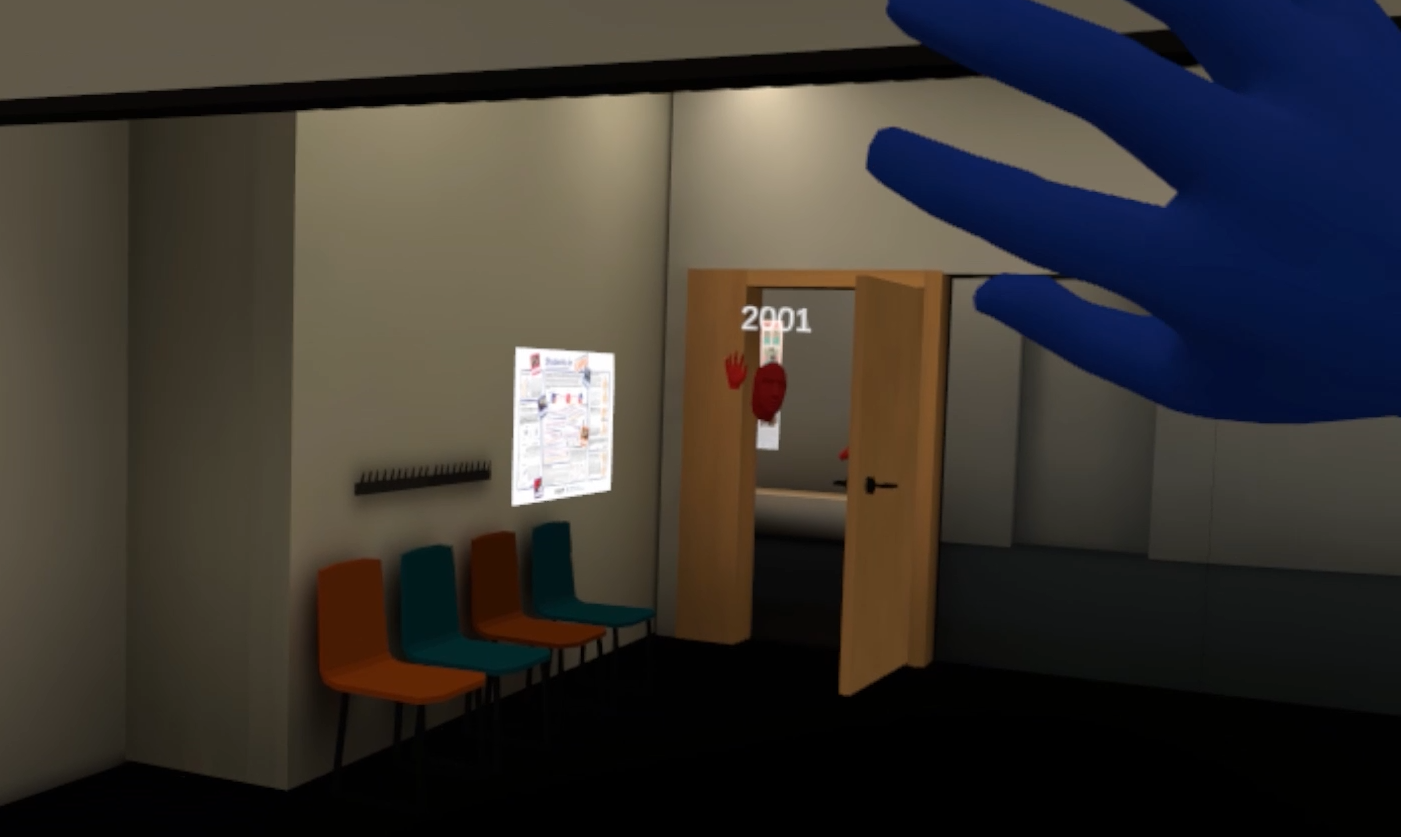 |
|
Software
|
|
|
Developing User-Generated Content Distribution Systems for Blastronaut Game
Toomas Treikelder
|
|
|---|---|
| One side of video games that is not often in the spotlight is user-generated content. These are often mods to an existing game that either change the visuals, gameplay, or both. Toomas Treikelder has made for his thesis a system to allow players of Blastronaut to create and share their own content. This distribution works through Steam Workshop and features important aspects like different versions of a piece of content and resolving name conflicts. Emphasis has also been on creating a smooth user workflow to make and share custom content for Blastronaut. This workflow was tested on actual modders. This and other details are described more in Mr. Treikelder’s thesis. Poster Thesis |
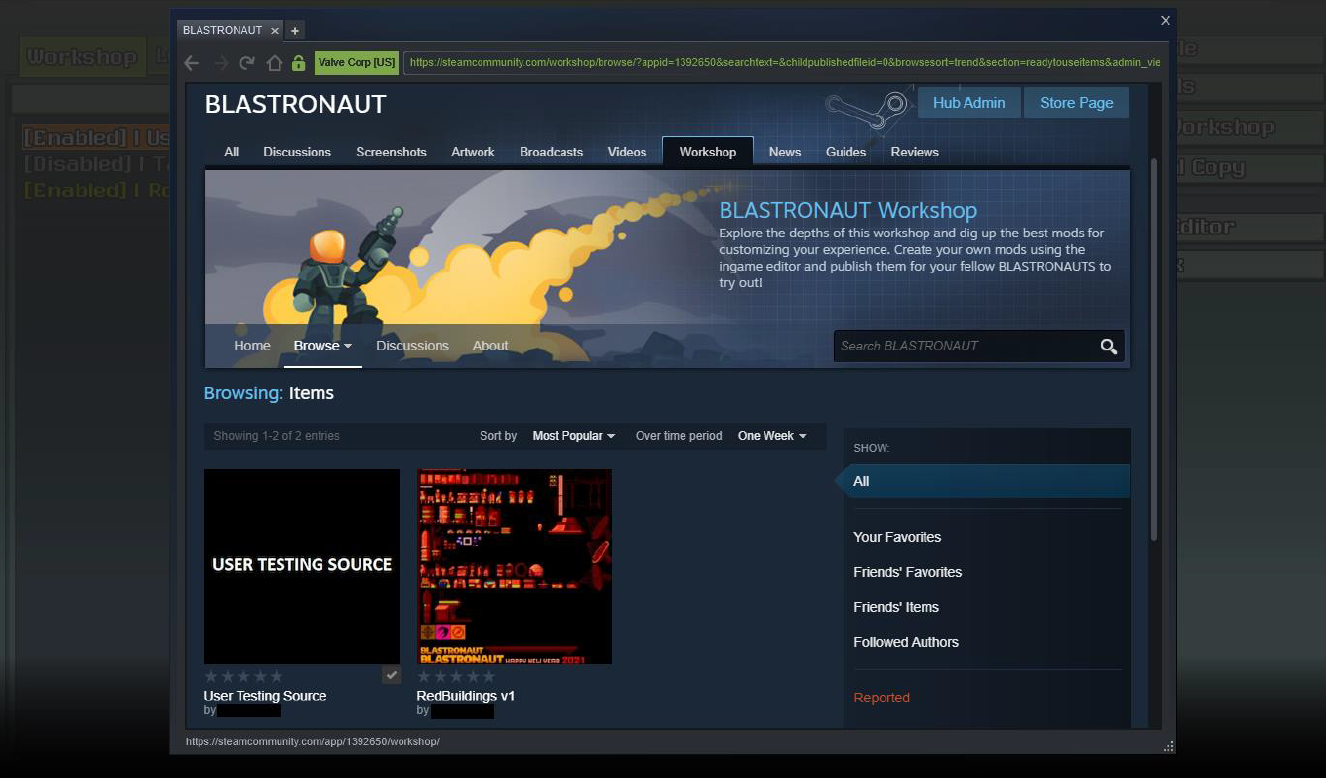 |
|
Software
|
|
|
Simulating the Aging of a Building Using the Godot Game Engine
Karl Kuusik
|
|
|---|---|
| Often in movies and video games, it can become necessary to create representations of the same building or structure in different states of decay. Karl Kuusik has found this problem immensely interesting and worked on it for his thesis. The algorithm devised by Mr. Kuusik, in very simple terms, works on the rotting process of wood. When wood gets moist, rot can develop and start eating away at the structural integrity. This in turn can cause wooden pillars to collapse in early buildings like roundhouses. Such decay and collapse of a bronze age roundhouse is exactly what Mr. Kuusik has chosen in his thesis to test his new simulation algorithm on. Poster Thesis |
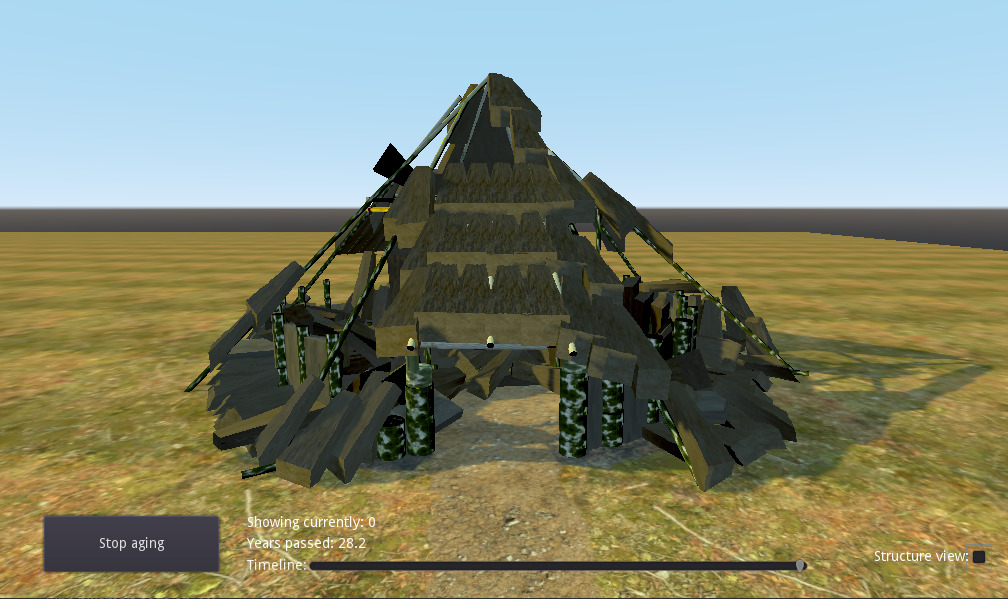 |
|
Research
|
|
|
RematoAR – An Augmented Reality Assignment Aid
Ott Saar
|
|
|---|---|
| Effective communication is essential at construction sites. The project manager needs to convey to the construction workers very clearly what works need to be done at what parts of the site. To assist in that, Ott Saar has created an augmented reality tool for his thesis. This tool allows easy marking of objects and areas at a site. These markings can also be annotated with textual instructions or drawings. In case of doubt, the tool also allows for making video calls, which relay the augmented reality markings to both parties. The thesis goes extensively into this challenge and provides technical solutions to issues that came up during the work. The RematoAR app has been evaluated by four construction companies during multi-phase usability testing. Thesis |
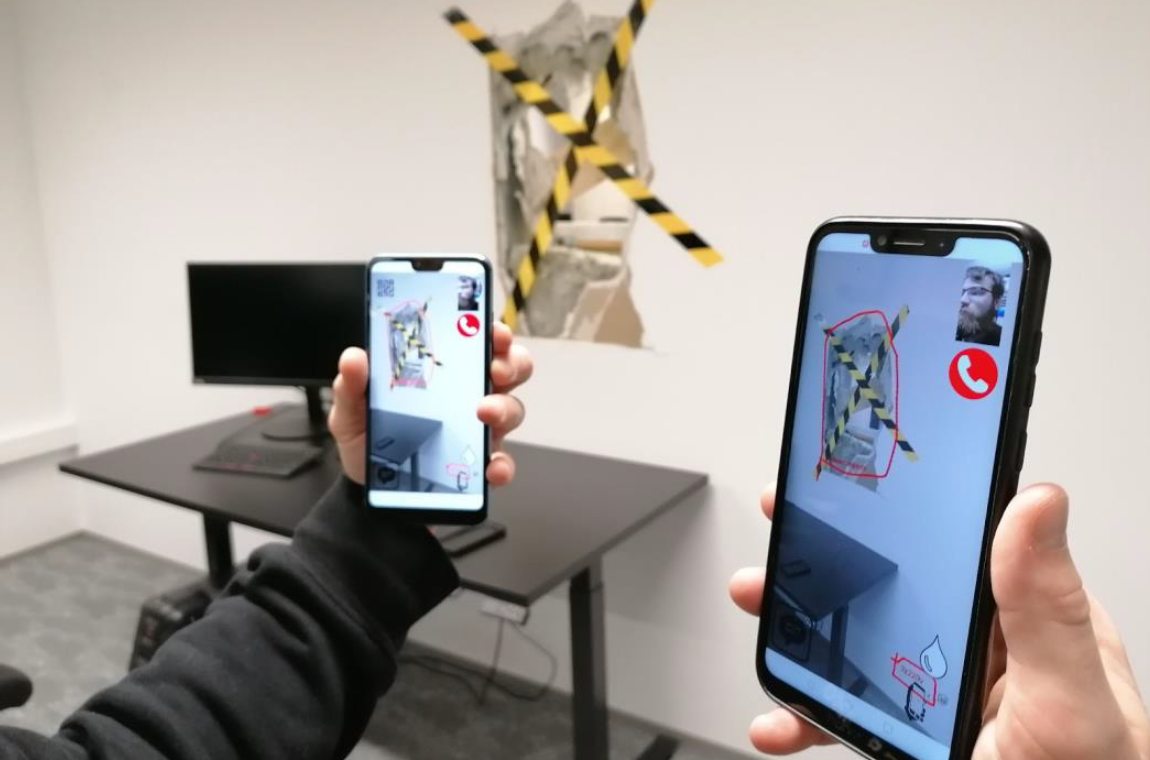 |
|
Software
|
|
|
Accessible VR World Building
Shumpei Morimoto
|
|
|---|---|
| Building a small world has always been very interesting for people. What could be better than doing it also in virtual reality (VR)? In his thesis, Shumpei Morimoto has created a VR application where users can design their own little town. This is done by picking different land blocks, houses, vehicles, etc, and placing them in the virtual environment. When a town is constructed, the user can also take the role of the citizen and walk around at ground level. This allows for another, explorative perspective on one’s creation. This project was shown at Comic Con Baltics 2022. Thesis |
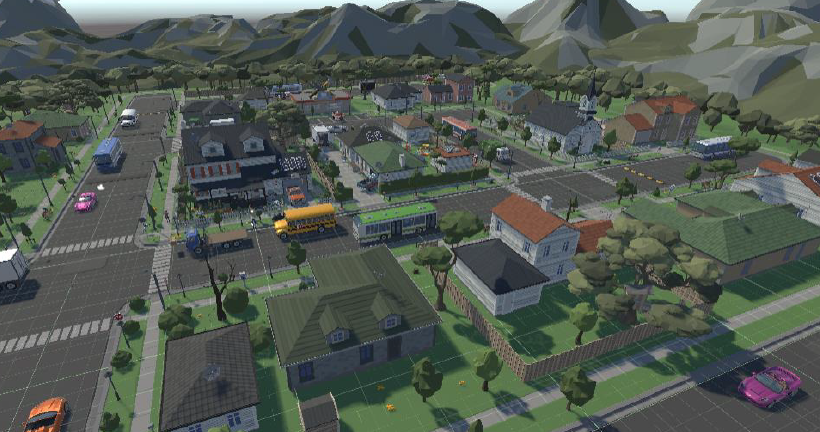 |
|
Software
|
|
|
Non-Euclidean Space in Virtual Reality
Henri Sellis
|
|
|---|---|
| Henri Sellis created a virtual world with weird overlapping geometry, so the VR player could naturally move in a much wider space than in reality. The thesis describes the implementation of the portal system and also some very interesting and mind-bending puzzles that were constructed to showcase the many opportunities that such a game mechanic allows for. There is also a good overview of redirected walking in general. It is recommended to first try out the software and then read about the back-end and theory. Thesis |
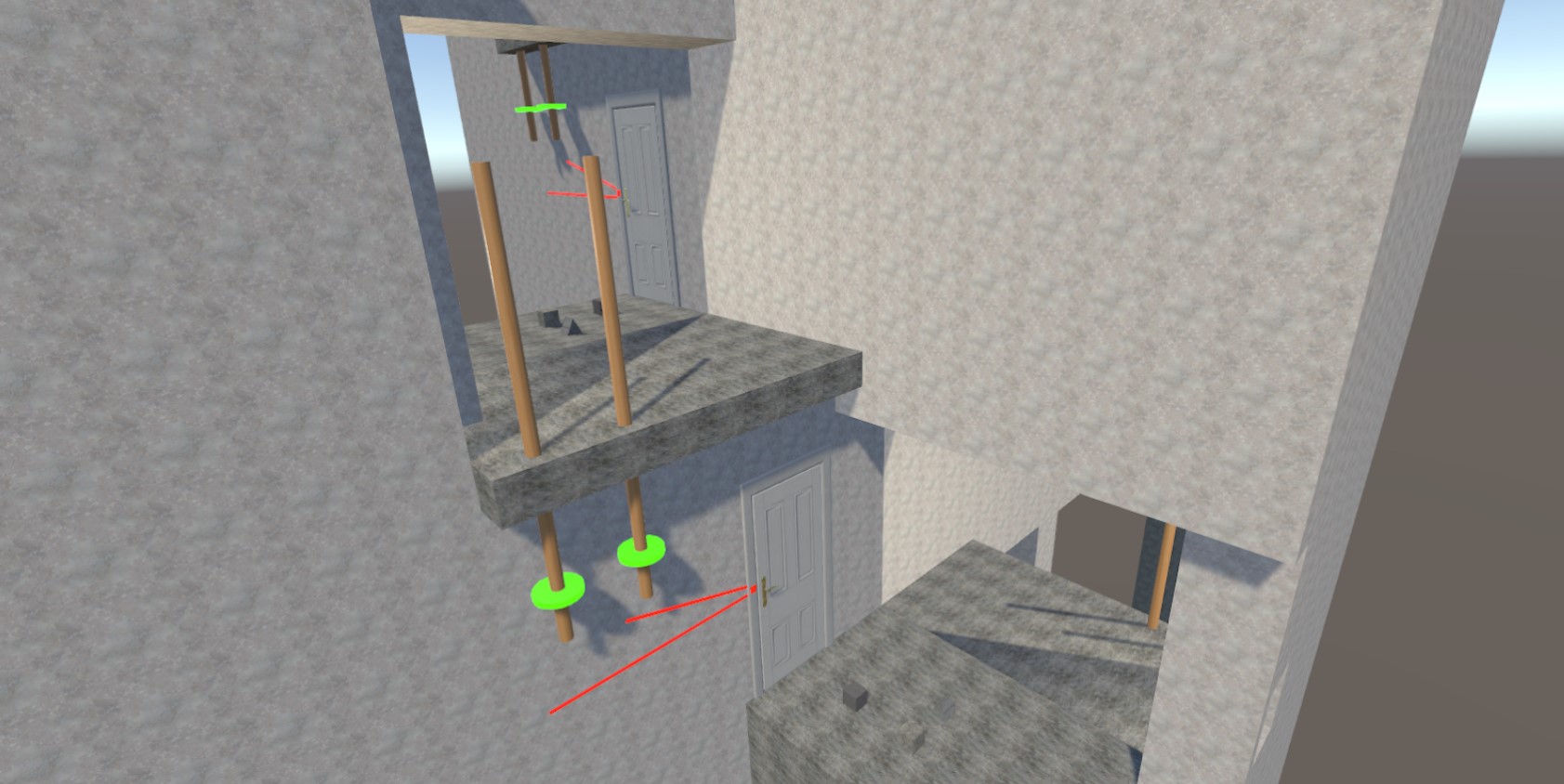 |
|
Software
|
|
|
School Lesson with VR Elements
Janek Press
|
|
|---|---|
| Janek Press wanted to push the limits of VR education by developing software that allows to deploy the same VR content to many devices simultaneously. This would make the job of the teacher much easier, as the whole class is always in sync. Furthermore, a special lesson was developed for maths class. All this was done by gathering ideas and opinions from several teachers. The thesis also details a real experiment with students. Thesis |
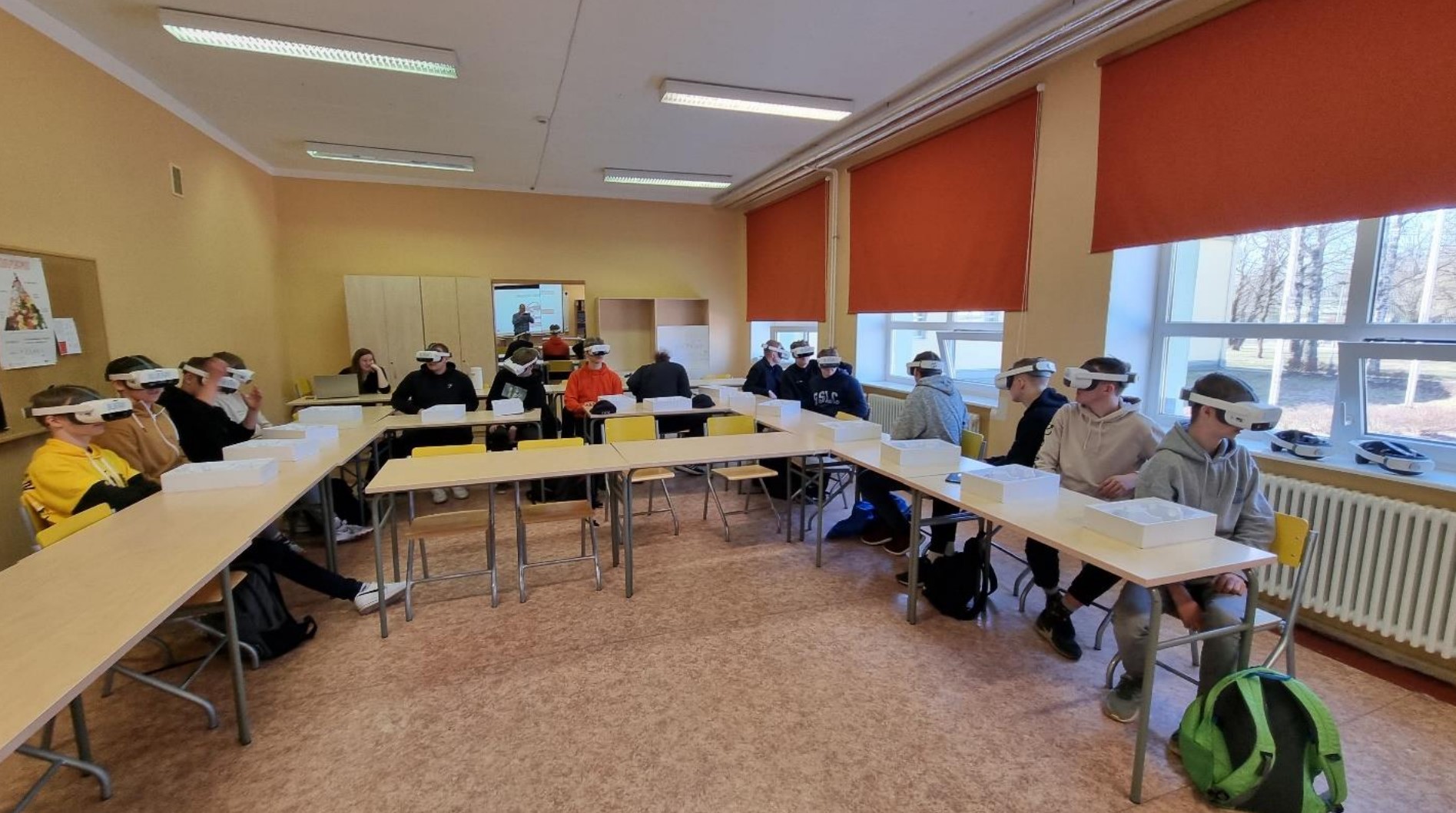 |
|
Software
|
|
2021
|
Houseplant Care Simulator
Kristina Kevel
|
|
|---|---|
| Inspired by houseplant care, Kristina Kevel has for her thesis created a simulation computer game Houseplant Care Simulator about just that. In the game, the player guides the main character Eric to care for houseplants and thus makes sure Eric does not get too stressed in his daily life. The game features several houseplants, each with its own watering and light needs. Players learn about different real-world houseplants and their effect on stress when playing the game. The thesis project won III place in the student project contest. Website, poster, video. Thesis. |
 |
|
Software
|
|
|
DeltaVR
Toomas Tamm
|
|
|---|---|
| There have been several projects about the Delta building and virtual reality versions of the CGVR Lab rooms. Toomas Tamm has used, thoroughly enhanced and optimized the 3D model of the Delta building to be used in VR. In his thesis project DeltaVR, users can navigate the first two floors of the building, shoot UFO-s in a bow range and play 3D Breakout. The hallways include posters of previous student projects and there is a small robot moving around in the robotics classroom. The thesis project won III place in the student project contest. Website, poster, video. Thesis. |
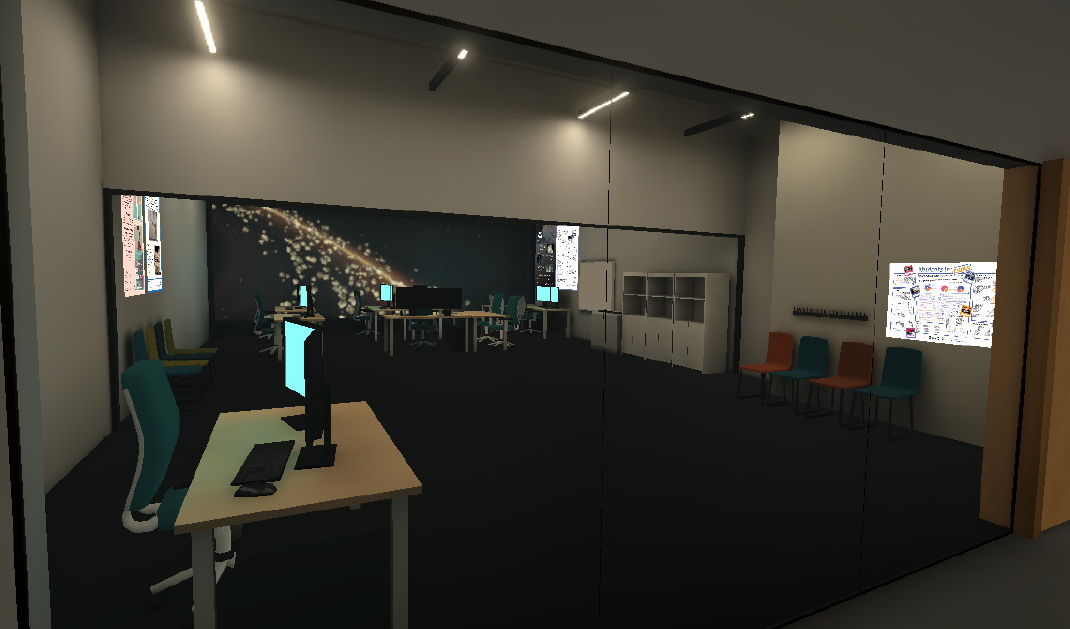 |
|
Software
|
|
|
SIGINT – A Cooperative Puzzle Game on Vertical Wall Panels
Mattias Aksli
|
|
|---|---|
| The CGVR Lab has a smart glass wall, a video projector to display an image through it, and a Raspberry Pi. Mattias Aksli has used this setup to design and implement a cooperative 4-player puzzle video game for his thesis. The game had to be designed with the constraint that the image is on 3 vertical wall panels and the performance on Raspberry Pi is quite limited. Mr. Aksli has successfully solved a number of design and performance challenges in creating his cool 5-level video game SIGINT. Website, poster, video. Thesis. |
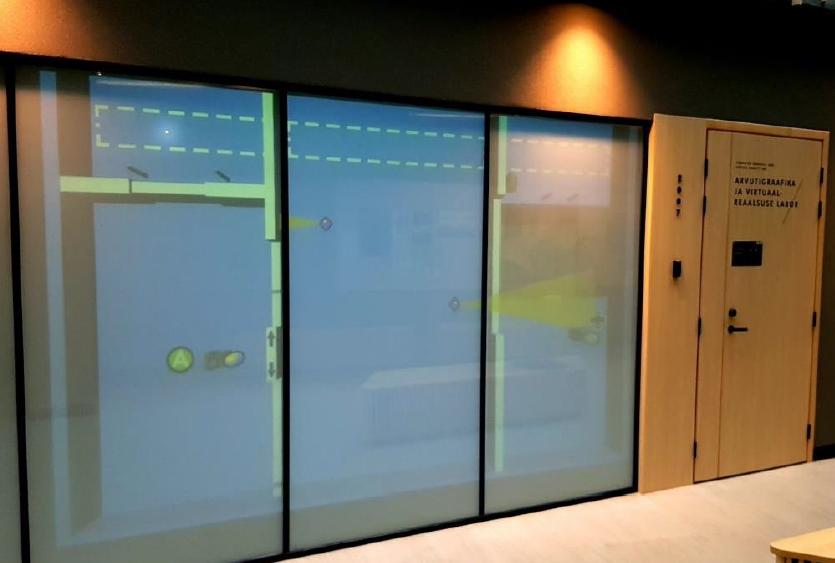 |
|
Software
|
|
|
A Ludic Dialogue System for Interactive Fiction
Frederik Raud
|
|
|---|---|
| Video game dialogue has been pretty much following the same patterns for more than 20 years. Frederik Raud has in his thesis thoroughly analyzed the existing systems and devised his own system in terms of uncertainty and inevitability aesthetics as well as 4 types of player agencies. His own novel system includes agents who through dialogue navigate an n-dimensional topic focus space. Each topic also has its own depth space, which includes stages the topic is currently in for the agents. Mr Raud’s thesis includes implementation architecture guidelines and the system has been implemented and put to test in his dialogue-based demo game Last Call. Website, poster, video. Thesis. |
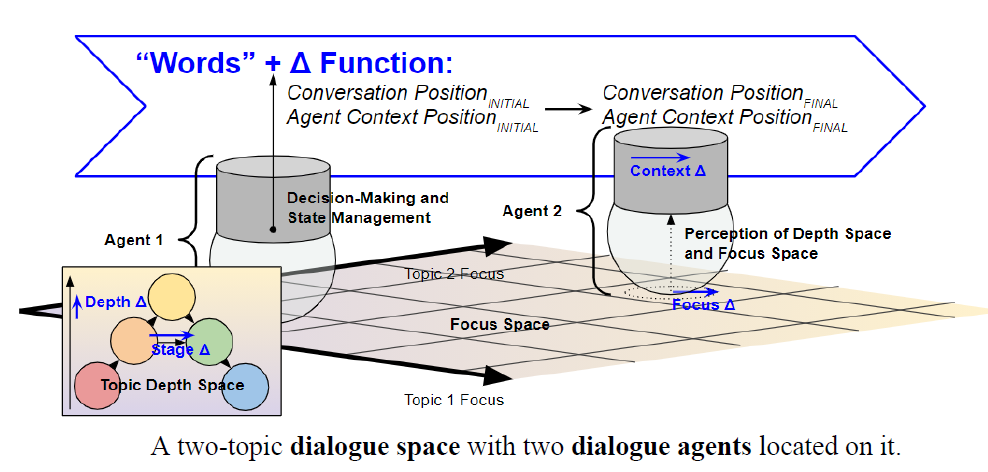 |
|
Research
|
|
|
Virtual Reality Headset Study
Peeter Paal
|
|
|---|---|
| Should one buy a 600€ or a 6000€ virtual reality headset for their first headset? Peeter Paal has done a good number of experiments with 4 different headsets from that price range using VR experiences like Half‑Life: Alyx, Audioshield and Henry. Experiment participants used either Varjo VR-1, HTC Vive Pro, Oculus Rift or Oculus Quest headset and rated these in terms of screen sharpness, headset and controller tracking and comfortability, and headset heat dissipation. The novel result of the thesis is that statistically speaking, the devices have almost no difference for the first‑time VR user. Although, there can be notable issues with the placement of headphones and sensors or compatibility software with specific devices. Website, poster, video. Thesis. |
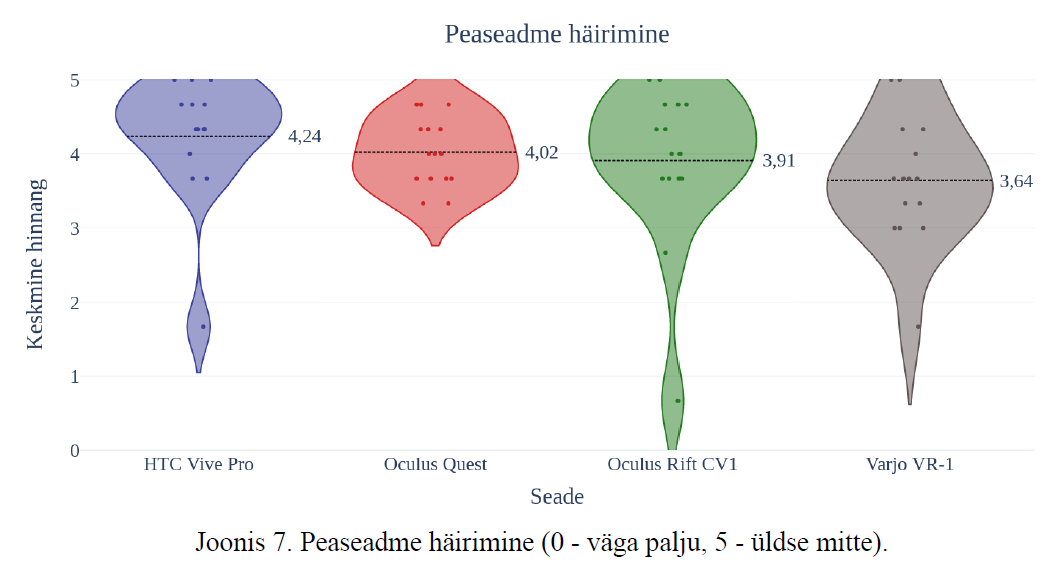 |
|
Experiments
|
|
|
Glyptics Portrait Generator – Improved Materials
Adrian Kirikal
|
|
|---|---|
| The Glyptics Portrait Generator exhibit was created in 2020 for the University of Tartu Art Museum’s glyptics exhibition. Adrian Kirikal has for his thesis improved the exhibit by adding two new materials – marble and multi-layered agate. Mr. Kirikal has for these new materials used advanced computer graphics techniques like subsurface scattering, procedural texture generation, metaball-inspired surface shading. Website, poster, video. Thesis. |
 |
|
Software
|
|
|
Stylized 3D Depth of Field
Siim Anderson
|
|
|---|---|
| Siim Anderson has worked on implementing a depth-of-field (DoF) effect for the upcoming rendering engine Flair, developed by a computer graphics company Artineering. Working closely with Artineering, Mr. Anderson has implemented 4 different DoF algorithms to potentially be used in Flair. These, and his own stylized version of the effect, are usability tested on several expert computer graphics developers to find their pros and cons and determine which algorithm should Artineering continue with. Website, poster, video. Thesis. |
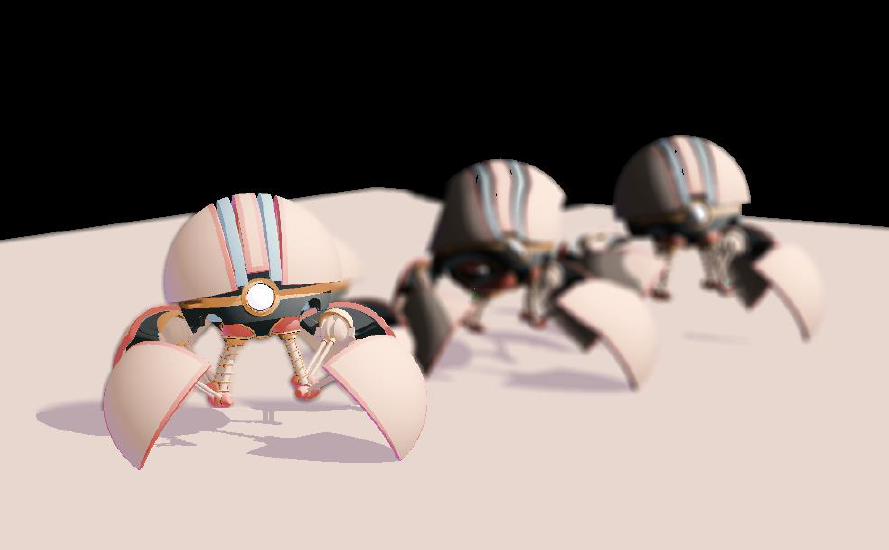 |
|
Experiments
|
|
|
Procedural Generation of Unique Buildings
Mathias Plans
|
|
|---|---|
| Mathias Plans has found usual procedural building generators to be very limited in the uniqueness of buildings they are able to create. For his thesis, he has combined the rule-based generation approach of formal grammars with the constraint-based generation approach of the wave function collapse algorithm. To do that Mr. Plans has needed to transform the shapes in the commonly used split-grammars to a graph form, thus creating his novel grape grammar. Then the wave function collapse algorithm can operate on the shape graph to apply constraint-based generation to the rule-based grammar. As the result, unique 2D building facades are generated. Website, poster, video. Thesis. |
 |
|
Research
|
|
|
VR Live Stream of Remote-Controlled Racing Cars
Mait Lättekivi
|
|
|---|---|
| The remote-controlled car racing company RCSnail was looking for a way to make their attraction more immersive with virtual reality. Mait Lättekivi has for his thesis created a prototype solution for that. The camera feed from the car is displayed on a cylinder in VR and the virtual steering wheel controls the actual car steering. There are also cubical buttons in the environment. Poster, video. Thesis. |
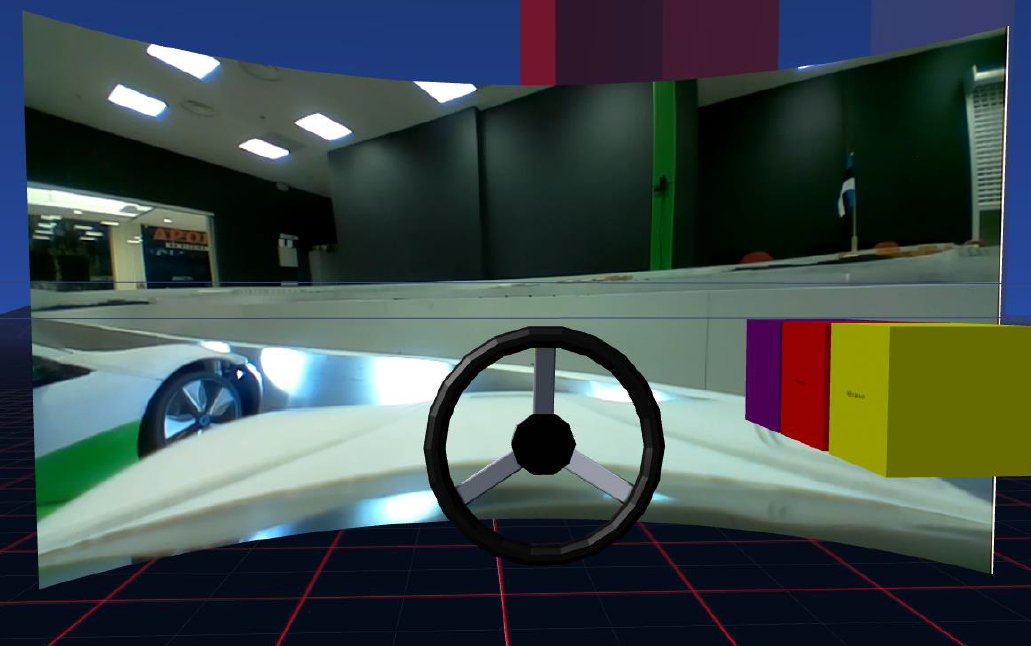 |
|
Software
|
|
|
Adding Templates to Blastronaut Game’s Procedural Generator
Silver Spitsõn
|
|
|---|---|
| Procedurally generated game worlds can be quite interesting for the player, but hard to control for the level designer. This is true also in the Blastronaut game and thus Silver Spitsõn has for his thesis added template-based customization for the game world. The developed system contains templates with different granularity, which are used to populate the procedurally generated game world with hand-crafted sections. A large part of Mr. Spitsõn’s work was also the design and creation of a good editor for these templates. Blastronaut. Thesis. |
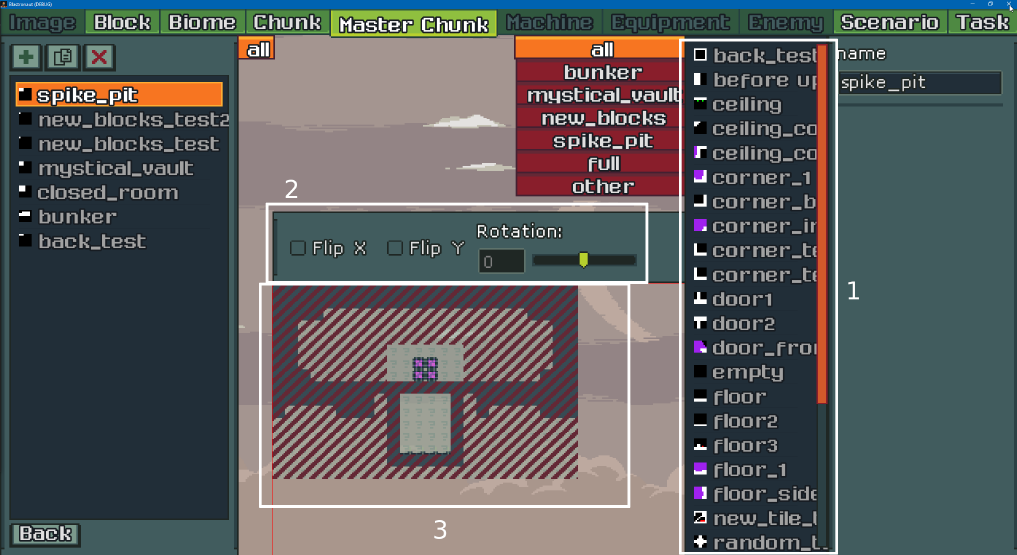 |
|
Software
|
|
|
Developing Enemy Movement for Blastronaut Game
Erik Tarelkin
|
|
|---|---|
| When designing unique video game enemies, one large part of that is designing their movement. Erik Tarelkin has in his thesis designed and implemented three types of enemy movements for the game Blastronaut. These are a walking enemy, a crawling enemy, and a flying enemy. The walking and crawling enemy are spider-like creatures who rise and lower their individual legs when moving around. That movement was implemented with an inverse kinematics based approach. The flying enemy uses steering behavior and can thus flock and avoid nearby walls. Blastronaut. Thesis. |
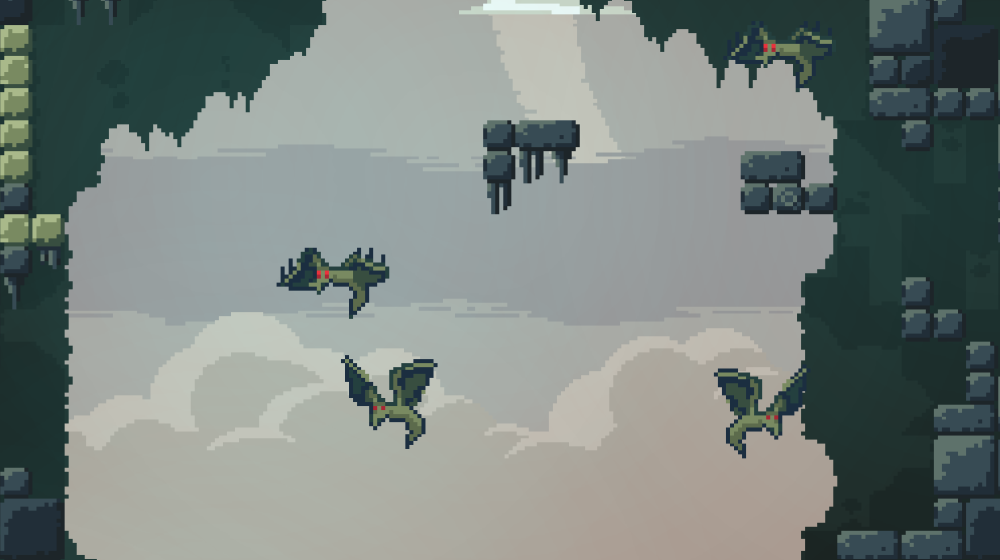 |
|
Software
|
|
|
World of Warcraft Classic Warrior Simulator
Viido Kaur Lutsar
|
|
|---|---|
| Creating game character builds in RPG games can be quite challenging. Viido Kaur Lutsar has created for his thesis a calculator to help World of Warcraft players to create good warrior class builds. The created calculator has nicely usable GUI design and simulates the created character's DPS in a configurable virtual fight based on the game mechanics. Thesis. |
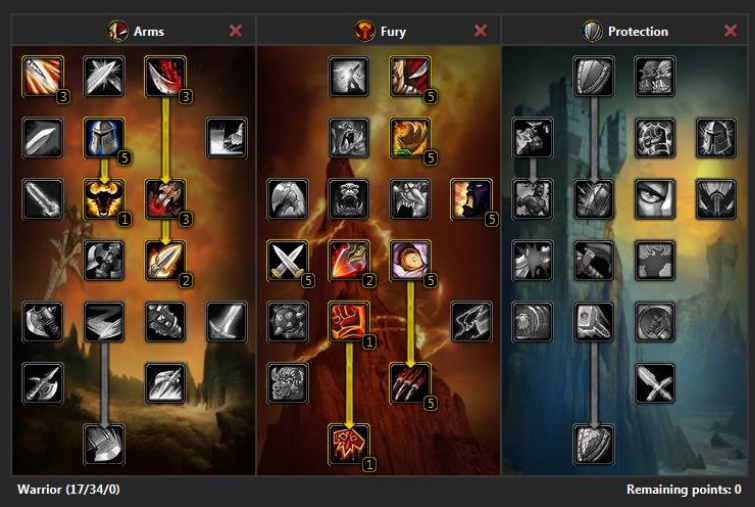 |
|
Software
|
|
|
Evolution of Video Games Online Course
Mark Muhhin
|
|
|---|---|
| Mark Muhhin has designed, conducted and reflected on a new 3 credits online course Evolution of Video Games. The course design starts from establishing a target audience and looking at similar courses, both domestic and foreign. The 10 study weeks are then populated with topics, learning material is chosen or made and learning assignments created. There are two innovative learning methods designed and used here: an online debate and a learning game. The debate is a modification of a regular debate to work solely based on text and that lasts for a number of weeks to accommodate online learners. The learning game is a custom game designed in a virtual tour of the LVLup! video game museum. In the game the learners have to interact with the non-player characters to answer their questions about the course material. The designed course and learning methods were used on about 100 students in the pilot reading and the results are analyzed in the thesis. Website, poster, video. Thesis. |
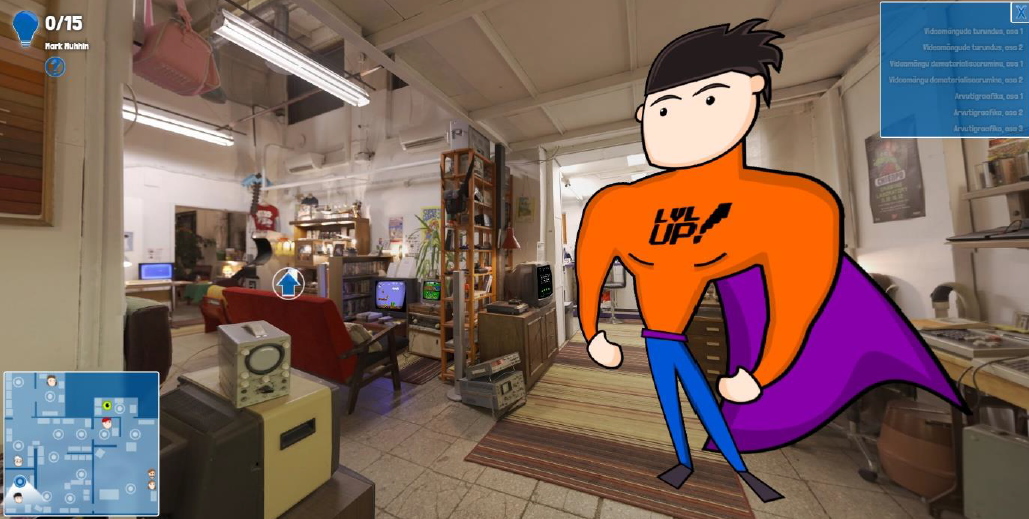 |
|
Learning Materials
|
|
|
Mobile AR Point Cloud Matching
Karl-Walter Sillaots
|
|
|---|---|
| Museum exhibits in augmented reality (AR) are increasingly popular but require a lot of work from the exhibition curator. The company Mobi Lab is developing a simpler solution by using markerless AR. The core of markerless AR are point cloud matching (registration) algorithms. Karl-Walter Sillaots has in his thesis experimented with one such – the 2 Point Normal Sets (2PNS) algorithm. The algorithm and its parameters have been put to test systematically in different theoretical and real-world scenarios (the latter in Gallery Pallas). During these experiments, many key insights were gained that allowed for enhancements to the algorithm, which were, in turn, tested out by Mr. Sillaots in the thesis work. The results bring out many new considerations needed for real-world point cloud matching on mobile devices and subsequent markerless AR. Thesis. |
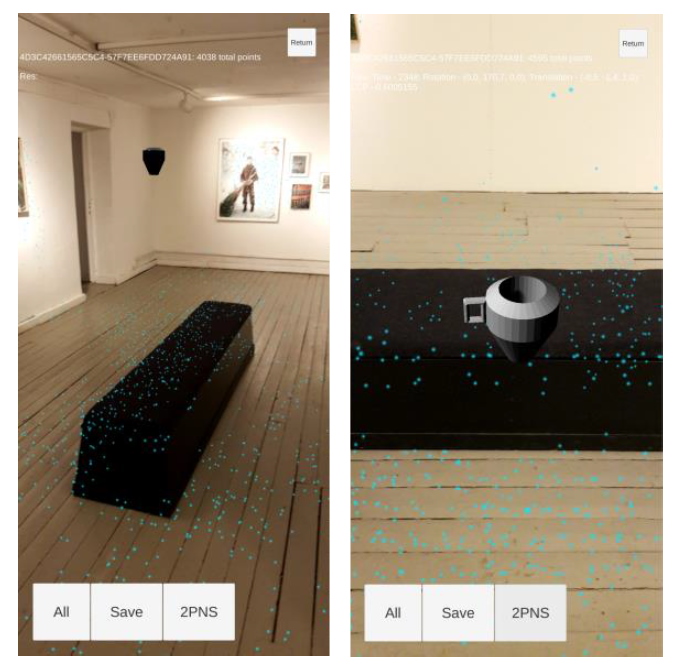 |
|
Experiments
|
|
|
Futuclass AR
Hei Chun (Roland) Shum
|
|
|---|---|
| Futuclass OÜ has been developing a virtual reality chemistry learning game for the 6th-9th grade pupils called Futuclass Chemistry VR. However, virtual reality devices are not that common in high schools, thus Hei Chun (Roland) Shum’s thesis was about adapting that game for mobile augmented reality instead. Mr. Shum has for Futuclass AR first designed AR markers, which are educational, trackable and distinguishable. The designed and developed game then includes three distinct gameplay modes: Molecular Sandbox, Find the Correct and Reaction Balancing. The latter is directly based on the virtual reality version. These game modes are iterated on during development and during the two usability testing sessions conducted in schools on the target audience. The results and the viability of an AR chemistry learning game are presented in Mr. Shum’s thesis. Website, poster, video. Thesis. |
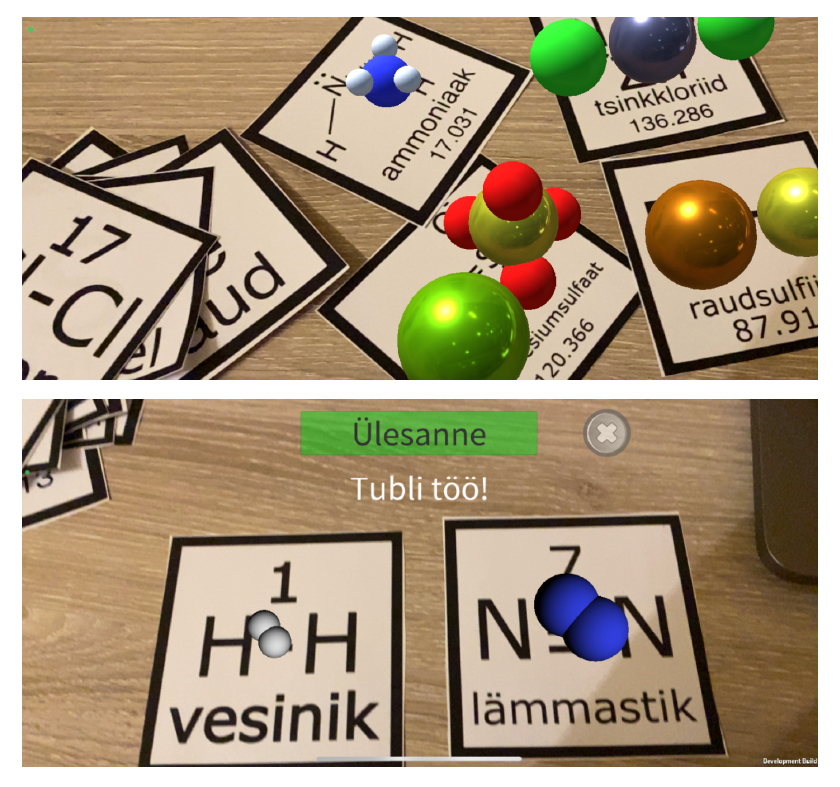 |
|
Software
|
|
|
Interactive Music Visualization in Unreal Engine
Maert Mägi
|
|
|---|---|
| Maert Mägi created for his thesis an audio-reactive module for Unreal Engine 4 Niagara particle system. His apporach allowed for real-time visualization of different audio parameters of any sound playing inside the game engine. In order to showcase the module, Mr. Mägi also created dozens of different visualizers that react to music. Thesis Video Repo |
 |
|
Software
|
|
|
Generating Natural Landscape in Augmented Reality
Andre Ahuna
|
|
|---|---|
| Andre Ahuna utilized the LiDAR sensor of the iPad Pro 2020 to create a software that 3D scans any given room and procedurally creates a natural-looking landscape that conforms to the geometry of the room and its furniture. In his thesis Mr. Ahuna dealt with cleaning the scanned geometry, creating the procedural mesh, appying wear-and-tear algorithms, proper shading and adding water bodies where suitable. Thesis |
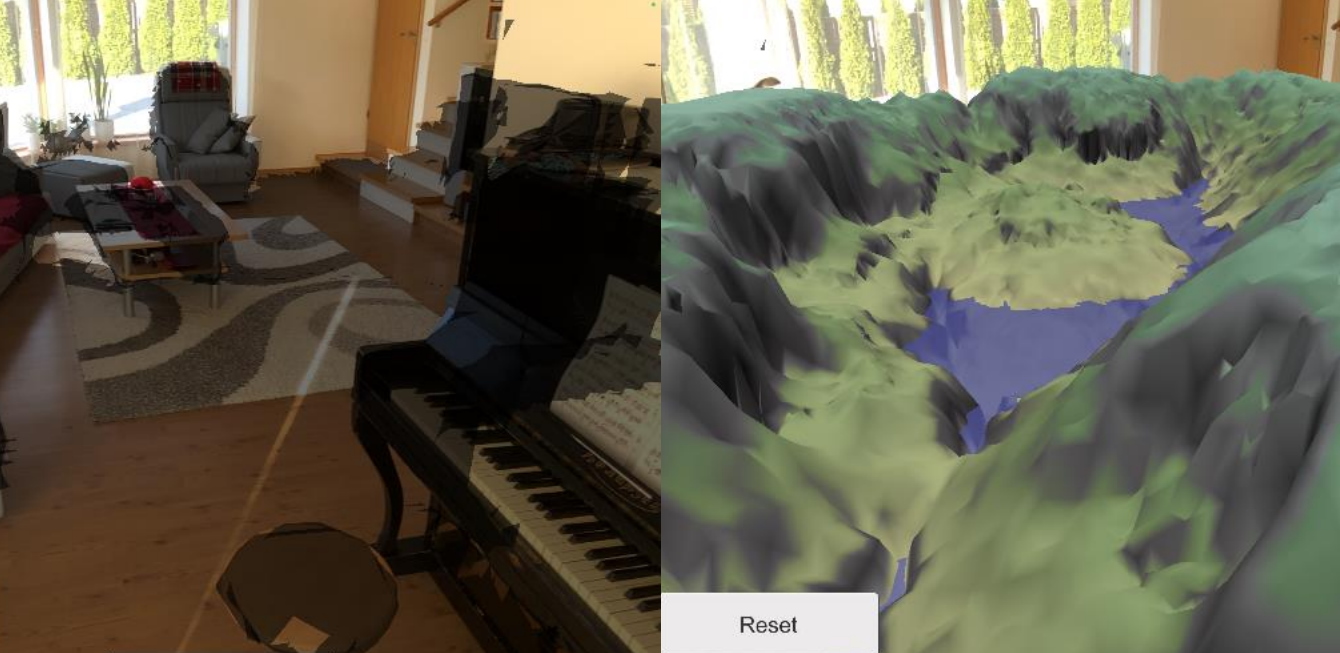 |
|
Software
|
|
2020
|
Simulating the Collective Movement of Fish Schools
Erik Martin Vetemaa
|
|
|---|---|
| Inspired by fish schools Mr. Vetemaa has in his thesis improved the famous Raynold's Boids algorithm. The original algorithm and its common implementation are analyzed thoroughly. The improvements are done on the existing rules and new ones are also added. Namely predator and obstacle avoidance. The latter is solved via distance and gradient fields. Instead of approximating the regular gradient via 6-point stencil sampling, Mr. Vetemaa uses a 26-point stencil. This gives more accurate results to direct the fish away from the scene obstacles. The thesis won a second place in the student project contest and includes an awesome online demo app. Poster, video. Thesis. Live. |
 |
|
Research
|
|
|
Bomb Golf – A Precision-Based Mobile Game
Kaarel Rüüsak
|
|
|---|---|
| This Android game's main mechanic is directing and timing bombs to destroy the boxes in each level. The game features many levels with gradually increasing difficulty. Bomb Golf was tested live in the Robotex 2019 expo after which many found usability issues were solved. Later the game was digitally tested via the Google Play Store. There retention rate of players was analyzed. Mr. Rüüsak has followed good game development principles when designing his excellent game and the player experience. The different challenges follow the learn-play-challenge-surprise concept. Thus ensuring good game flow. Poster, video. Thesis. Google Play Store page. |
 |
|
Software
|
|
|
Thesis Text Analyzer
Karl Erik Karindi
|
|
|---|---|
| In this language processing thesis Mr. Karindi has created and experimented with many analyzers for Estonian thesis texts. The analyzers use the EstNLTK library version 1.6 and are built in Python. There are 5 main analyzers, which include also an analyzer for missing commas and legalese. The latter consists of 4 sub-analyzers that detect different legalese issues. The whole application is set up as a web server accessible via an API or a web front end. The CGLearn learning environment's thesis module uses the API to analyze the thesis drafts of the CGVR Lab students every week. Other students can use the web front end to use the analyzer. Poster, video. Thesis. Live. |
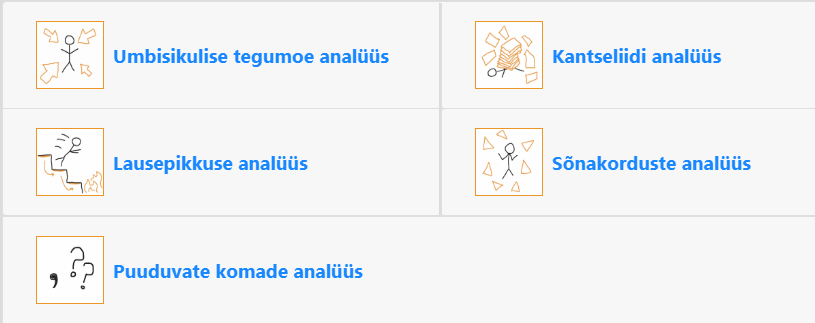 |
|
Experiments
|
|
|
3D Comic Rendering
Oliver Vainumäe
|
|
|---|---|
| In his thesis Mr. Vainumäe has created an algorithm to render 3D scenes in the style of the Water Memory comic book. From this specific non-photorealistic style several elements (eg outlines, hatching, color smudging) Mr. Vainumäe has detected, analyzed and replicated. The devised solutions uses many non-photorealistic rendering algorithms and also Mr. Vainumäe's own contributions for achieving the results. The algorithms are implemented in the Maya's Non-photorealistic Rendering plugin called MNPR. This is done in collaboration with the company Artineering who are the authors of the MNRP plugin and co-supervised Mr. Vainumäe's work. Results are demonstrated in 2 demo scenes. These are to replicate specific panels from the comic. Using the created algorithm the scenes are rendered similarly to the comic's style. Work also includes different control parameters to allow for granular artistic control of the render. Thesis. |
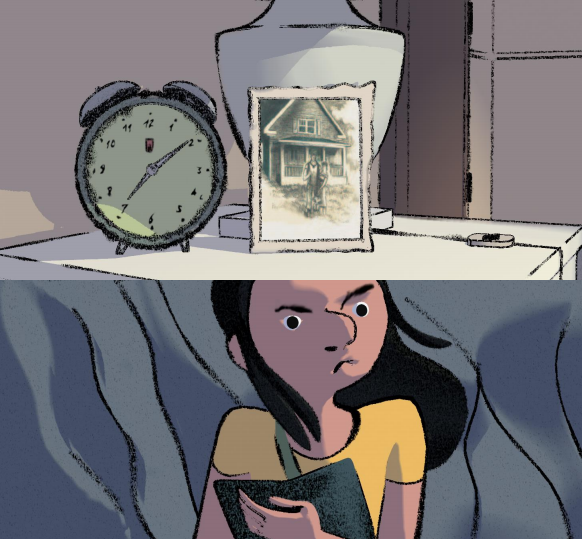 |
|
Research
|
|
|
Delta Building Visualization – Building and Environment
Aleksandra Leesment
|
|
|---|---|
| The Delta building opened in January 2020. While the Delta Building Visualization project was built during several theses before, it had issues matching to the physical and furnished building. During her work Ms. Leesment had analyzed the mismatch issues in the existing project and the actual building. Based on the analysis the rooms, interior and exterior of the building was improved to be more lifelike. The improvements were tested via AB testing on 10+11 people to determine if the created version is more lifelike than the previous one. Statistical t-test analysis was performed on the results, which showed that some areas did actually improve. While other areas could be further improved, the project is now considered presentable to a wider audience. Poster, video. Thesis. Website. |
 |
|
Software
|
|
|
Simulations for Training Machine Learning Models for Autonomous Vehicles
Kertu Toompea
|
|
|---|---|
| In this extensive survey thesis Ms. Toompea has investigated many simulations with the purpose of training machine learning models for autonomous vehicles. Out of the 39 found simulations 12 were filtered out and investigated further. The survey provides information about the licenses, documentation, environment (incl actors), sensors and output training labels of the surveyed simulations. The results are categorized into an excellent and comprehensive table, which servers as a good guide for anyone looking for a simulation to train their autonomous vehicle ML models. Poster. Thesis. |
 |
|
Survey
|
|
|
MiChef – 2D/3D Platformer Game
Hans Henrik Viinalass
|
|
|---|---|
| Very often games can have 3D objects in front of a 2D background. In this thesis a game was developed by Mr. Viinalass that does the opposite. In MiChef the 2D gameplay takes place on a 3D object. This is similar to a few existing games like Flat Pack and the differences and similarities with such games is analyzed. The 2D/3D platformer game MiChef was implemented in the Unity game engine. The pixel art was made by John Avila from the APT GameGenerator community. While the actual 2D/3D mechanic in this game could have been more integrated into the gameplay, this is still very good work. The story, aesthetics and the game balancing were all tackled by Mr. Viinalass. The game was usability tested and the found usability problems analyzed. The entire development process followed very nicely iterative design principles. Poster, video. Thesis. Itch.io page. |
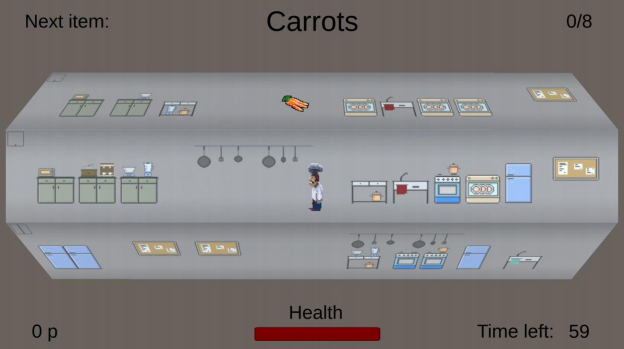 |
|
Software
|
|
|
Procedural Generation of a City
Aap Vare
|
|
|---|---|
| Procedural generation is a popular topic and Aap Vare has in this thesis created a procedural city generator. The generator creates primary and secondary roads to distribute the area into plots. Between the roads, buildings are generated. There are several types of buildings, which are placed by considering Perlin noise and distance from the city center. The city is then decorated with trees as well. The algorithm has different parameters like the width, height and density of the city. Thesis. |
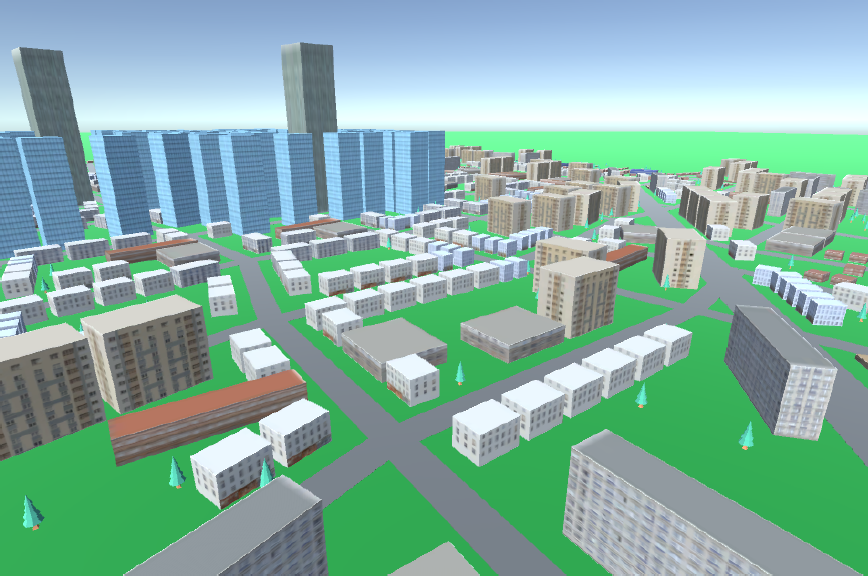 |
|
Research
|
|
|
Dwarf Block Game Development - Dynamic Environment
Märt Mäemees
|
|
|---|---|
| This thesis explores 3 different procedural terrain generation methods to be used in the game Dwarf Block. These generators implemented by Mr. Mäemees range from height-based to voxel-based solutions. The thesis describes Mr. Mäemees' implementation of the algorithms in Unreal Engine 4, as Dwarf Block is made with that game engine. The performance of the proposed algorithms is measured and analyzed for use in Dwarf Block. Usability testing was also performed to determine which of the 3 generators the developers of Dwarf Block would prefer. Thesis. |
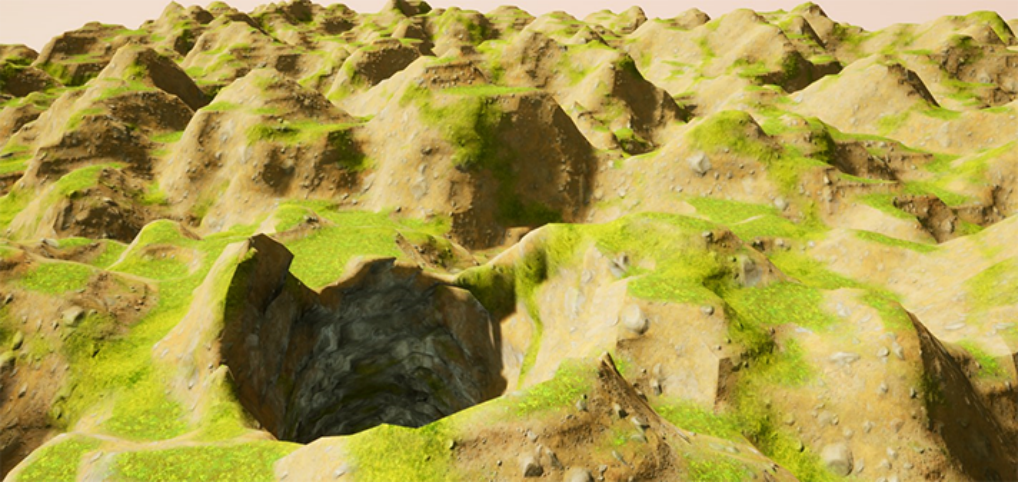 |
|
Software
|
|
|
Dwarf Block Game Development - Dwarf Simulation
Aleksei Beljajev
|
|
|---|---|
| Mr. Beljajev has in his thesis explored several different possibilities to create NPC AI in Unreal Engine 4 for the game Dwarf Block. Then the use of behavior trees is justified and those are used to create the AI behaviour for Dwarf Block NPC-s. Several AI-s are created for patrolling, mining, attacking, fleeing allied and enemy NPC-s of Dwarf Block. In addition a low granularity pathfinding tool is created to assist the developers of Dwarf Block in creating specific scenarios. Several example scenarios are also implemented by Mr. Beljajev. The AI behavior in these scenarios was tested on the game's target audience to determine if the AI is behaving as the players would expect. Thesis. |
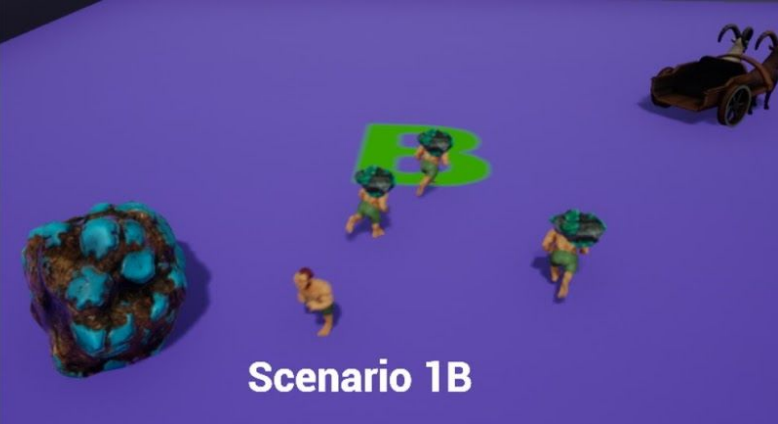 |
|
Software
|
|
|
Cogbug – A Mobile Tabletop Game
Stanislav Belogrivov
|
|
|---|---|
| Cogbug is an Estonian physical tabletop game created by EduLab OÜ. The company desired a mobile version of their game, which Mr. Belogrivov then designed, implemented and tested in his MSc thesis. The mobile version works on Android and iOS platforms, supports 4 players in online multiplayer play and implements most game mechanics from the tabletop game. However, several game design changes were made to make the gameplay more suit the mobile play. Mr. Belogrivov has spearheaded the development and the development team of Cogbug. The results were play tested in 3 online play sessions and the found usability issues mapped and fixed. Poster, video. Thesis. |
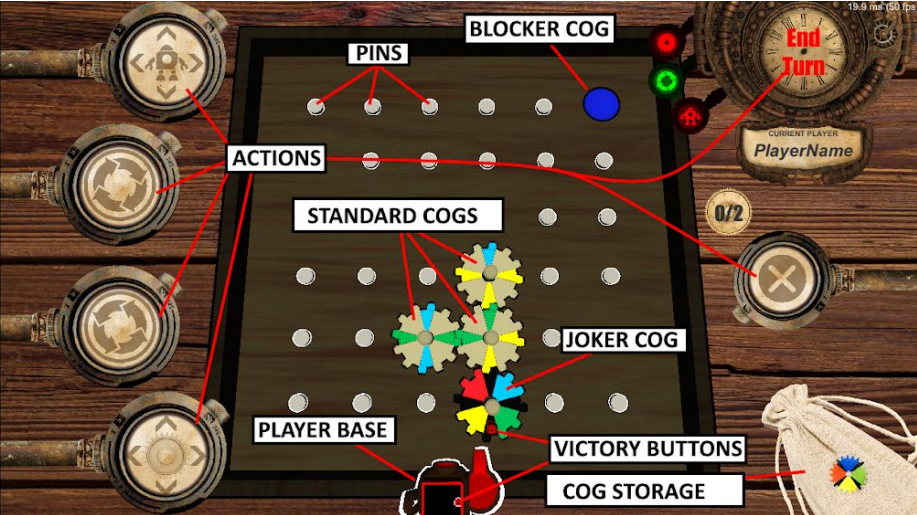 |
|
Software
|
|
|
Glyptics Portrait Generator
Vladyslav Kupriienko
|
|
|---|---|
| Mr. Kupriienko has in his MSc thesis developed an exhibit for the University of Art Tartu Museum's glyptics exhibition. Glyptics is an art of stone carving with a focus on precious stones (gems). The Glyptics Portrait Generator captures the visitor's face and renders it as an engraving on different materials. The thesis explores the optical properties of gems and possibilities for capturing the visitor's face data. For the latter first a RealSense depth camera was used, but then a choice was made to use only RGB camera data instead. The RGB data allows for face landmarks detection and based on those an existing mesh is morphed to look like the user. The solution is implemented in C++ with the Ogre rendering engine and uses many libraries (eg dlib for face detection). The solution was exhibited in the Art Museum's glyptics exhibition in 2020. Poster, video. Thesis. |
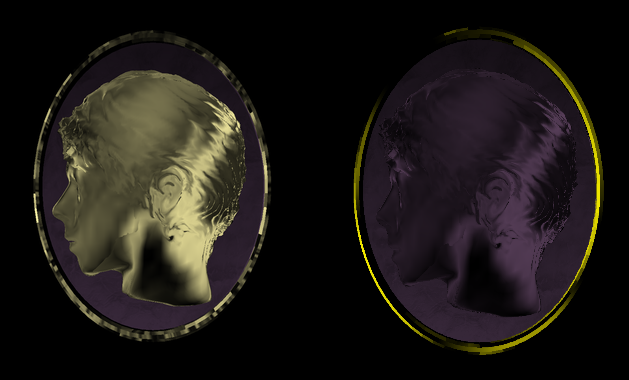 |
|
Software
|
|
|
Innovation in the Laboratory: Developing a New Experimental Paradigm in Virtual Reality, which Requires an Innovative Solution
Karl Jaagup Kask
|
|
|---|---|
| Mr. Kask made a virtual reality environment to examine innovative thinking and problem solving. Using Unreal Engine, four different virtual reality rooms were made. The main task was to escape a virtual prison cell. Upon failing the main task, the test subject was virtually sent into the other rooms, where the goal was to hint the actual solution to the puzzle, to create an “aha moment”. The thesis gives an overview of how this application works and some background information regarding virtual reality and insight. Thesis |
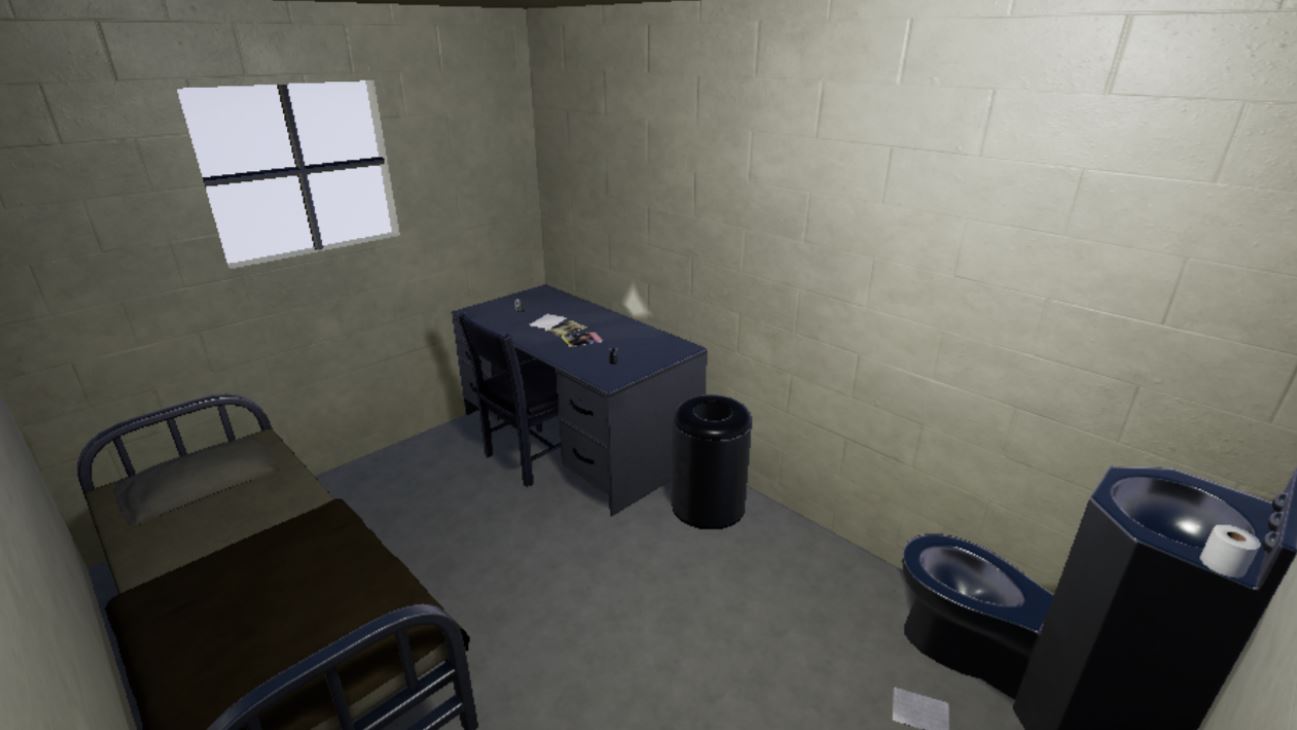 |
|
Software
|
|
|
How to Find Innovative Solutions: An Analysis of a Virtual Reality Experiment
Robert Kirillov
|
|
|---|---|
| Mr. Kirillov used a data-mining approach to examine why some people come up with innovative solutions and others not. To answer this question, the results of experiments in a virtual reality escape room were analyzed to find the differences between problem solvers and non-solvers. The work analyzed different metrics that could give a clue of participants thought processes, e.g. the activities and movements of test solvers and non-solvers during the experiment. Thesis |
 |
|
Research
|
|
|
Developing an Insight-Inducing Environment in Virtual Reality
Ants Adamson
|
|
|---|---|
| In this project Mr. Adamson developed a new virtual reality environment that would encourage the emergence of ideas - an “impossible” escape room, completed on two separate days. As part of the thesis, Mr. Adamson learned the visual programming language of Unreal Engine and developed various environments and tasks for experiments. His results showed that over half of the study subjects used insight to obtain their solutions. Additionally, the prepared-mind hypothesis was investigated by dividing the subjects into two groups one of whom was reminded of the main problem through the whole study. The main outcome of this thesis was a virtual environment that allows to develop further insight experiments. Thesis |
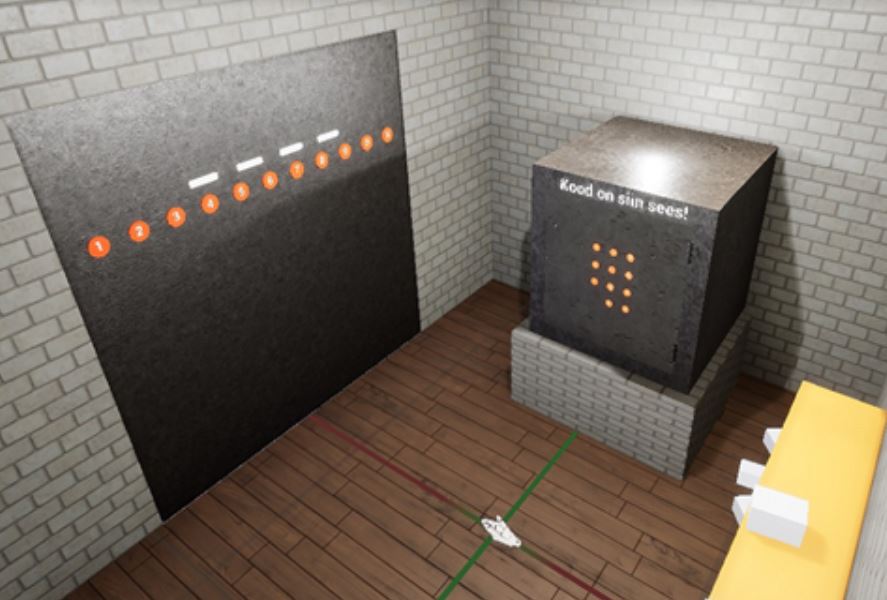 |
|
Experiments
|
|
|
Testing a Computational Theory of Brain Functioning with Virtual Reality
Madis Vasser
|
|
|---|---|
| Over the last decade an unifying theory about brain functioning has become dominant among researchers, called the free energy principle. It tries to explain both perception and action by claiming that the brain always tries to minimize surprising situations using active inference. To test this, Mr. Vasser and colleagues created novel experiments using VR, studying if the brain pays less attention to the visual consequences of its own predicted limb movements. As part of the thesis, open source software and guidelines for future studies were also developed. Results of many human experiments showed effects of longer reaction time and lower contrast perception when the test objects appeared behind the participants invisible virtual hand. These findings give further insights on the computations of the human brain, but are also useful for medicine, robotics and artificial intelligence. Thesis |
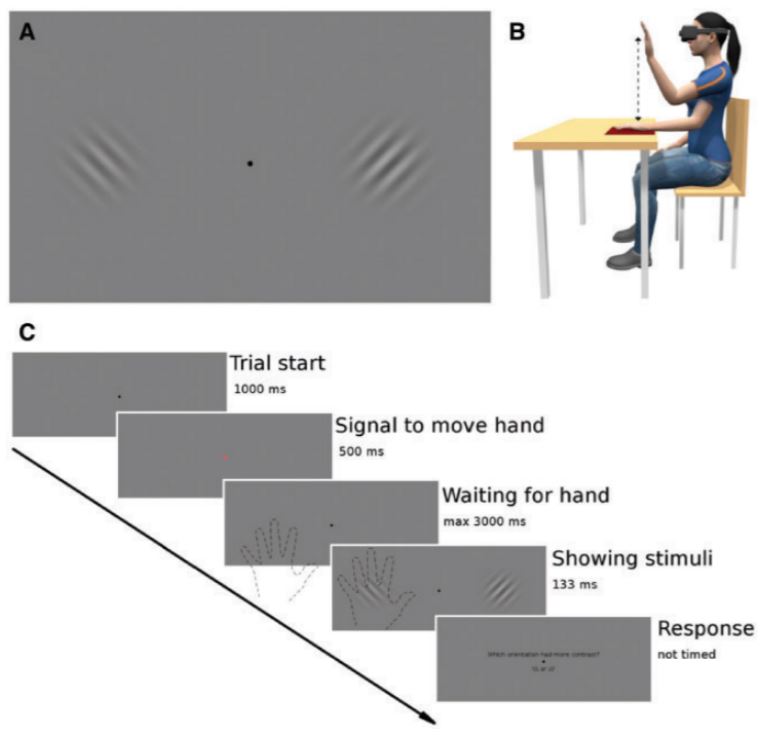 |
|
Experiments
|
|
2019
|
Icarus – a Real-Time Strategy Game in Space
Daniel Nael
|
|
|---|---|
| The real-time strategy (RTS) genre is one of the most difficult ones to create a game from. Mr. Nael has in this thesis created an RTS game Icarus, which includes several units, resource gathering, base building, enemies and a unique mechanic of danger zones. These danger zones expand across the game map over time and damage all the units. The game has 3 levels that introduce and use that concept. Icarus is built with the Unity game engine and uses the suitable software design patterns. The thesis describes the design, implementation and usability testing. During the latter the unique mechanic of danger zones was rated the highest. Poster. Thesis. |
 |
|
Software
|
|
|
Fall – A Turn-based Tactical Role-playing Game on a Hex Map
Oliver Vinkel
|
|
|---|---|
| Many strategy and RPG games use hex maps for their game worlds. Often the hex map is used in a separate arena view. There are only a few games that have a seamless hex map for both the exploration and combat views. Mr. Vinkel's game Fall does just that, where the same hex map is for both traversing the world and for battling enemies. The game features a forest of wolves and a lonely archer tasked with eliminating them. Fall was built with the Unity game engine. The thesis starts by describing the theory of regular tessellations and with a comprehensive survey of comparable games featuring hex maps. The main part of the thesis focuses on the different solutions and algorithms created for this game (eg terrain generation, a map editor, hologram outline shader etc). Thesis ends with performance and usability testing, the results of which bring out several aspects of the game to be improved upon. Thesis. |
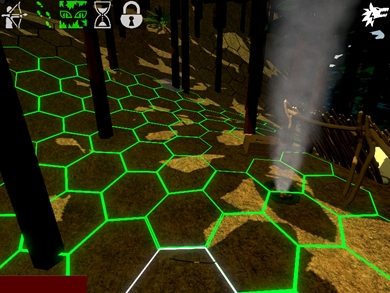 |
|
Software
|
|
|
Önwall AR Tool
Karl-Walter Sillaots
|
|
|---|---|
| Önwall is a company that builds and installs wooden mosaic tiles on interior walls. They approached the university with a desire to be able to show their customers how a wall would look like with their tiles using a mobile augmented reality application. Mr. Sillaots has in his thesis fulfilled that desire and created an application for the company to use. The application was built with the Unity game engine and the ARCore SDK. The major part of the thesis is the usability design of the application, which was iteratively made in collaboration with Önwall. The thesis continues by then explaining the technical design with the help of state and activity diagrams. Lastly the software was usability tested with 5 test users and a documented list of fixes required before handing over the application to Önwall. Poster. Thesis. |
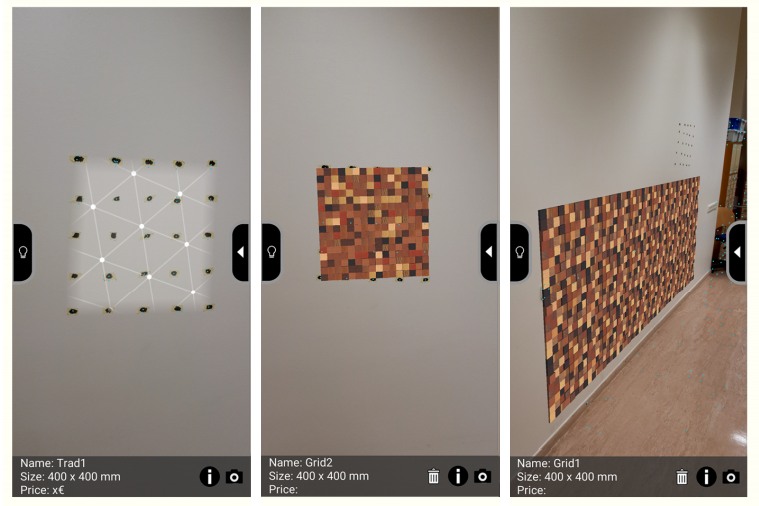 |
|
Software
|
|
|
RoomMapperAR – A Mobile Augmented Reality Room Mapper
Ott Saar
|
|
|---|---|
| Mr. Saar had a real world problem of having a building with rooms and wanting to get a 3D model of it for interior design planning. Thus he created a mobile augmented reality application RoomMapperAR that allows the user to mark the corners and heights of each wall. The application then proceeds to a semi-automatic door and window detection mode. Virtual furniture can also be placed. Afterwards the created and measured room with windows, doors and placed virtual objects can be exported in OBJ format to be further designed in modelling software. The thesis starts by describing the 4 main methodologies for creating an AR application and then analyzes the existing room measuring apps and establishing the requirements for RoomMapperAR. The implementation chapter also includes descriptions of computer vision algorithms used for assisted door and window detection. The thesis concludes with user testing that finds and documents the current usability issues in RoomMapperAR. Poster. Thesis. |
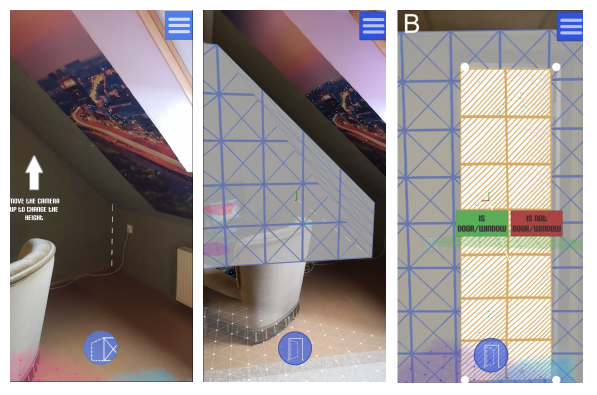 |
|
Software
|
|
|
Voxel-World – a World of Cubes
Markus Saarniit
|
|
|---|---|
| Mr. Saarniit has continued his Computer Graphics course project Minecraft Rip-Off. The project was ported from C++ to Java. Several computer graphics algorithms were implemented and added to the project. These include shadow mapping, reflective and refractive water, waves on the water surface and bitmapped font rendering. Also 3 meshing algorithms are described: naive, with culling and eager meshing. The thesis ends with a brief performance testing. Poster. Thesis. |
 |
|
Software
|
|
|
Delta Building Visualization – Admin Tool
Daniel Kütt
|
|
|---|---|
| The Delta Building Visualization (DBV) project is meant to work on real-time real-world data from different API-s and the Delta building's sensors. However, for testing and showcase purposes custom data needs to be inputted to the visualization. Mr. Kütt restructured the architecture of the DBV software and created in his thesis a tool that easily allows to switch between real and mock data. The thesis mainly focuses on restructuring the architecture and using correct system design patterns for such features. In addition different scenarios of automated mock data are also created and the solution is tested for network issues. Poster. Thesis. |
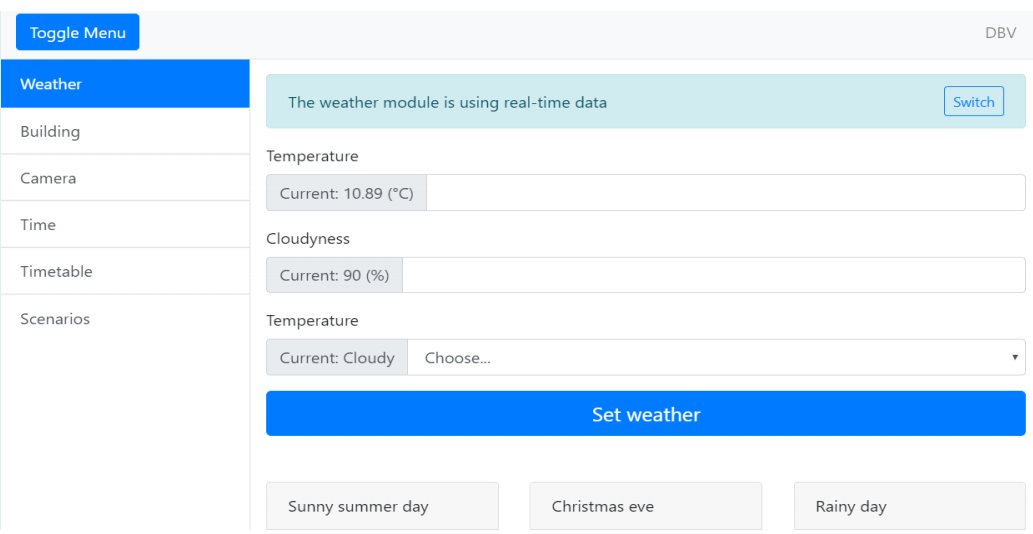 |
|
Software
|
|
|
Delta Building Visualization – Agent Logic
Meelis Perli
|
|
|---|---|
| The agents representing people in the Delta building work on the Unity game engine's NavMesh system. Mr. Perli has in his thesis both worked the performance of the agents and improved their behavior to be more realistic. For that advanced features of the NavMesh system were used. Several algorithms inspired from other multi-agent systems were developed and implemented. For example the precalculated NavMesh paths were each modified to have some deviation among each other. The agents can now also form groups in which to move in. The resulting performance was tested and compared with the performance from the prior year. Thesis also includes brief usability tests to determine the effects new behavior has on the users. Poster. Thesis. |
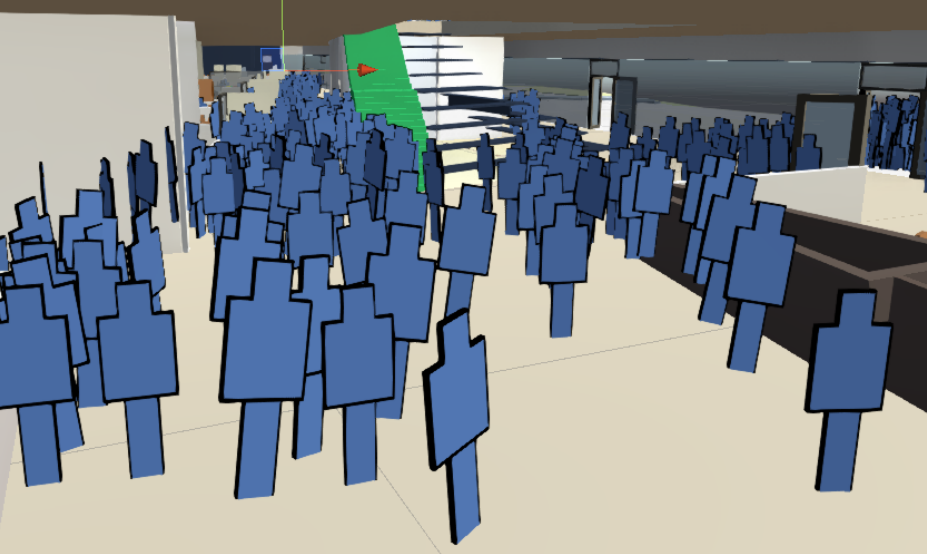 |
|
Software
|
|
|
Delta Building Visualization – Visual Effects
Einar Linde
|
|
|---|---|
| In prior works on the Delta Building Visualization the building was illuminated by a single directional light source. Mr. Linde has in his thesis used emissive materials to improve the lighting such that it could be dynamic in each room. This means that when it is night time and there are no agents determined to be in some room, the lights in that room are off and it is darker. The thesis also includes modifications of the visual effects used when there is snow or rain detected. The thesis concludes with performance and brief usability testing. Poster. Thesis. |
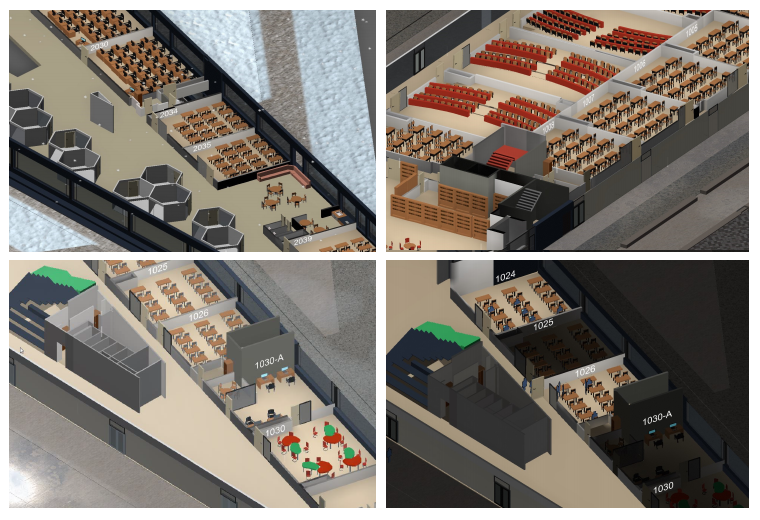 |
|
Software
|
|
|
Real-time Wildfire Simulation
Hannes Saariste
|
|
|---|---|
| In his thesis Mr. Saariste has researched wildfire simulation models and describes different techniques to create such a simulation. The thesis describes how either real world LIDAR information or procedural generation can be used to create a virtual landscape. Mr. Saarniit then continues how shaders and render textures could be used to simulate the spread of wildfire and how a noise function can approximate environmental parameters. The theory is advanced by Mr. Saariste's formulas that are found from existing models. A prototype application is accompanying the thesis that implements these described techniques and created formulas. Thesis. |
 |
|
Research
|
|
|
Procedural Generation of Skill-Based Systems
Raigo Kõvask
|
|
|---|---|
| In this thesis different game mechanics between two or more units are researched. The research focuses on three games: Dota 2, League of Legends and Path of Exile. The investigated skills are then narrowed to include spells that affect specific parameters of units (eg health, mana, stamina). The thesis continues by focusing on the targeting and visual effects of the spells. These latter are described in the context of particle systems. The thesis concludes by describing the accompanying demo application based on the theory developed in the thesis. Thesis. |
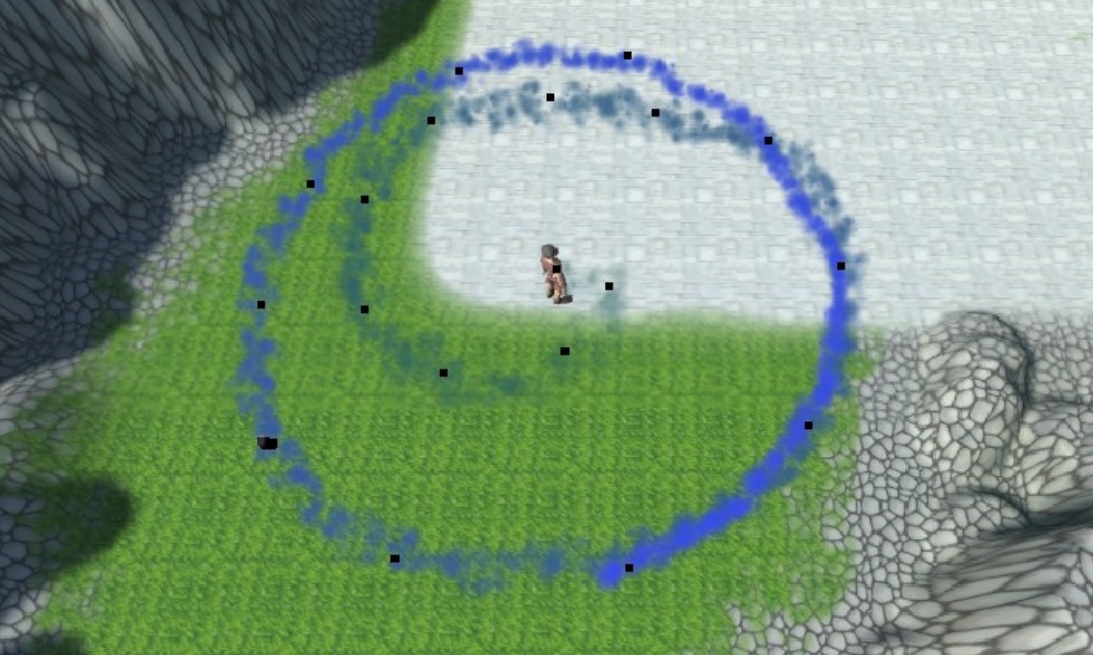 |
|
Research
|
|
|
Application for Psychophysics Experiments in Virtual Reality
Renee Kroon
|
|
|---|---|
| In this thesis Mr. Kroon developed an application that allows running psychological experiments in virtual reality or in a first-person perspective on a normal computer monitor. Taking inspiration from DeepMind Psychlab and other software, Mr. Kroon made an application to bring human test subjects and artificial intelligence agents into a similar experimenting environment, or comparing the results of the same experiment done on humans with and without virtual reality. The application was created using Unity and four classic psychological experiments were implemented. The thesis gives an overview of how the application functions, and shares background information about similar programs and implemented experiments. A pilot study was also conducted to validate the usability of the application. Thesis |
 |
|
Software
|
|
|
3D User Interface Design
Salme Ussanov
|
|
|---|---|
| Ms. Ussanov analyzed and developed the best design solutions and an easily understandable 3D user interface for the educational VR application Futuclass. The work consists of a theoretical overview of best known examples from some of the most popular VR games and a practical prototype with different interaction types that was then used in a comparative study. One of the key points from the thesis was that the UI design should avoid using physical movements that the users usually do not perform in daily real-life interactions. Thesis |
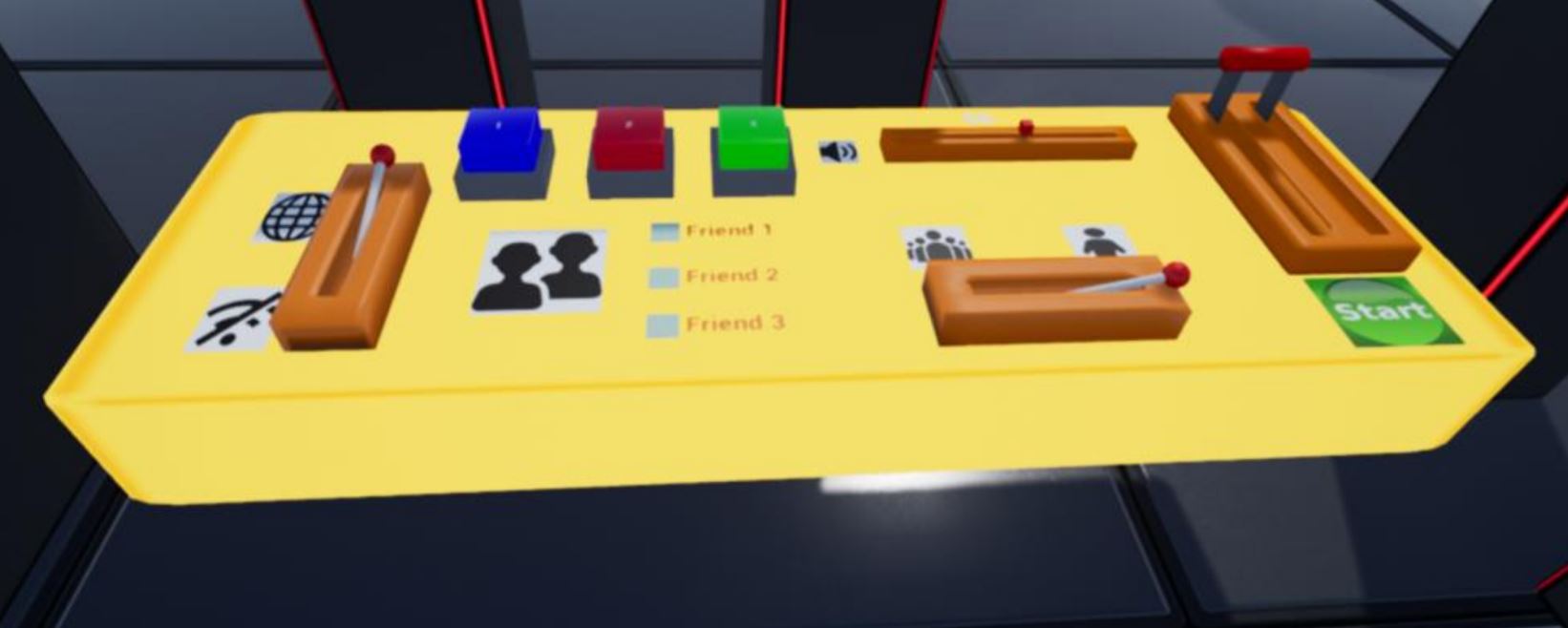 |
|
Software
|
|
2018
|
Shuriken Way – An Android Puzzle Game
Anton Tšugunov
|
|
|---|---|
| Mr. Tšugunov has created a challenging mobile platformer-puzzle game with a really simple mechanic of throwing a shuriken. The mechanic consists of only tapping on the screen to throw the shuriken in the direction it faces. The designed 9 levels include rotating platforms and walls that the player needs to use correctly to progress as quickly as possible. The game was built with Android Java and Mr. Tšugunov has used low-level OpenGL techniques to ensure good performance and power consumption on mobile devices. The game is unique in its own regard as evidenced by comparisons with similar games on the Google Play market. Poster. Thesis. |
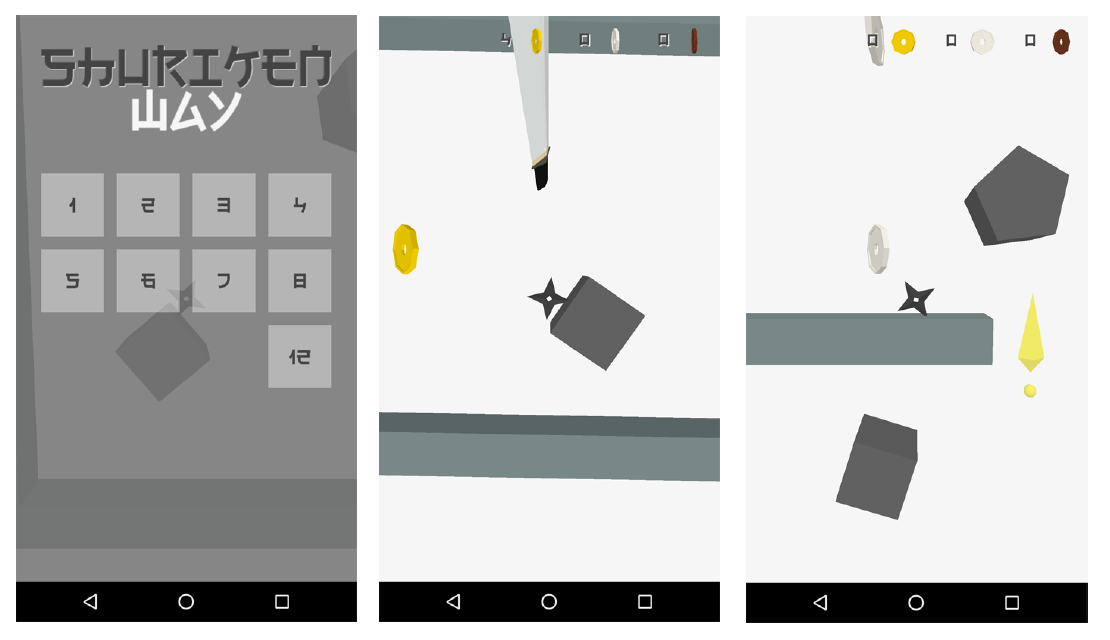 |
|
Software
|
|
|
Using Mirrors in a Computer Game
Kerstin Äkke
|
|
|---|---|
| Mirrors and reflection rendering is an interesting subject in computer graphics. However mirrors have rarely been used in actual computer game mechanics. In her thesis Ms. Äkke has categorized potential mirror uses for game mechanics into three categories: puzzles based on reflection, mirrors as portals and reflection interactions. Several mechanics are proposed in each category and they are analyzed based on game design theory by J. Schell and M. Sicart. One of the mechanics is implemented into a puzzle game with 5 different levels. The game consists of the player moving and rotating different pieces of a shape around the level. The goal is to assemble the full shape in the reflection of a mirror. Ms. Äkke's game is designed and evaluated based on the GameFlow model by P. Sweetser and P. Wyeth. The result is a promising new mechanic and a challenging computer game prototype with uniquely designed levels. Thesis. |
 |
|
Research
|
|
|
Delta Building Visualisation and Optimisation
Aleksander Nikolajev
|
|
|---|---|
| The Institute of Computer Science desires an interesting visualization to be shown in the video walls of the new academic Delta building. During his thesis Mr. Nikolajev has created a visualization of the mentioned Delta building and visualizes the 2000 actors that move and act throughout the visualized building. Those actors depict the students, visitors and educators and their movement will be controlled by the building's sensors. Mr. Nikolajev has designed the color palette of the visualization, created furniture models in the different rooms and optimized both the building's 3D model and the numerous actors such that the visualization would run at no less than 30 frames per second. The visualization was created with the Unity game engine and Mr. Nikolajev has utilized several of its optimizations in addition to being careful with code and camera placement. The result is an aesthetically pleasing visualization to be viewed from video walls. Thesis. |
 |
|
Software
|
|
|
Delta Building Environment Visualization
Andrei Voitenko
|
|
|---|---|
| The visualization of the Delta building planned to be shown on the video walls in the same building should provide useful information for the passerby students. Mr. Voitenko has created interfaces for the project with three real-time services: the Cumulocity platform for getting live person counts for each room, the Study Information System for fetching the schedule of courses, and a weather service for displaying the current weather around the building. The schedule is also displayed next to the 3D visualization and students can easily see what activities currently take place in each room. The weather visualization around the building includes rain and snowfall with puddles and snowdrifts. The sunlight follows the actual physical direction of the Sun throughout the year and reacts to cloudy weather. The resulting visualization provides useful information and mood-shaping effects to be viewed from video walls. Thesis. |
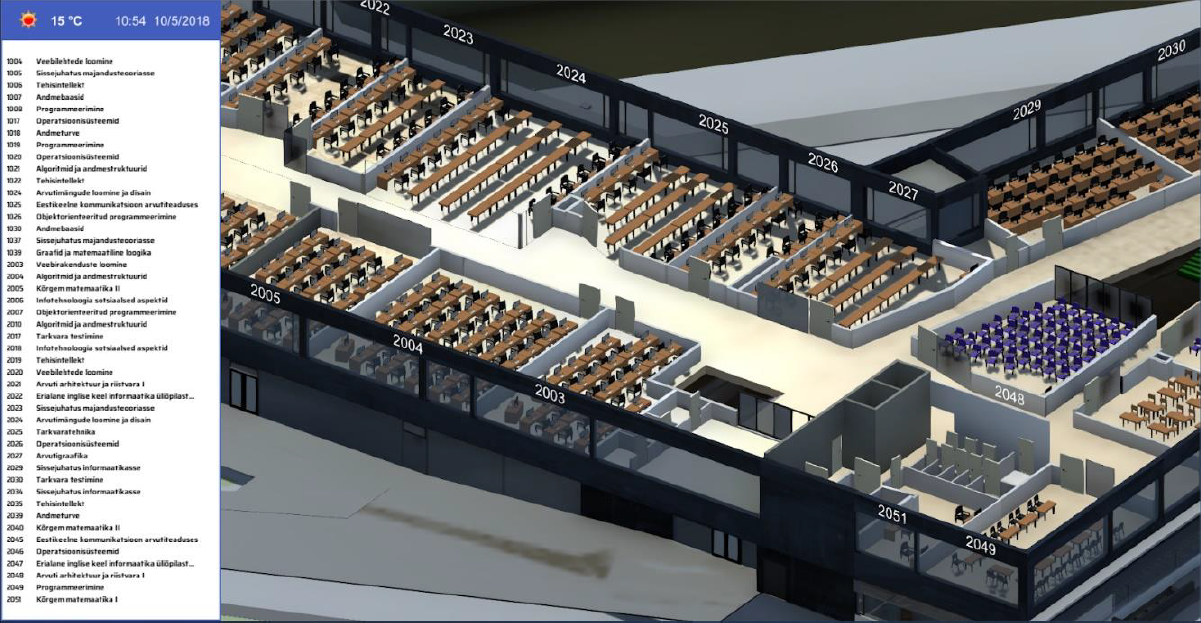 |
|
Software
|
|
|
Volumetric Cloud Rendering
Jaagup Kuhi
|
|
|---|---|
| Volumetric rendering in real time has only now become a possibility in computer games. This is evidenced by a volumetric cloudscape rendering solution called Nubis, which is featured in a computer game Horizon: Zero Dawn. Mr. Kuhi has in his thesis researched the different cloud rendering techniques and re-created the volumetric cloud rendering results comparable to the Nubis system. The thesis describes several types of noise (Perlin, Worley, Curl) and their use in creating realistic clouds. Mr. Kuhi also describes the physical phenomena like Beer's law, Henyey-Greenstein phase function and the in-scattering of light he simulates when rendering the clouds. Stochastic ray-marching is used to create very realistic-looking clouds with real-time performance suitable for use in computer games. Thesis. |
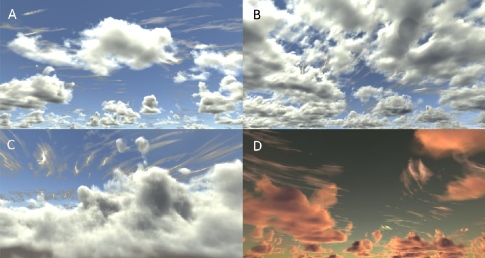 |
|
Research
|
|
|
Volumetric Fog Rendering
Siim Raudsepp
|
|
|---|---|
| Rendering believable fog can create nice mood-setting results in computer games as evidenced for example by the game Silent Hill. Mr. Raudsepp has delved into volumetric fog rendering theory and followed many online tutorials to create a volumetric fog rendering solution in the Unity game engine. Mr. Raudsepp's solution allows for more parameters and features compared to other solutions. For example the results in this thesis can produce animated fog based on noise functions. While the solution does not outperform other solutions, it is a good research into the possibilities volumetric rendering can offer. Poster. Thesis. |
 |
|
Research
|
|
|
Procedural Generation of 2D Creatures
Madis Janno
|
|
|---|---|
| Procedural creature generation has been done in several computer games, but usually consists of a stochastic combination of creature parts. In his thesis Mr. Janno creates 2D creatures from mathematical shape influence functions called metaballs. This kind of approach has only been done in the 3D computer game Spore. Mr. Janno has created a full system of creature generation, which is easily applicable with any modern graphics library. The creatures are generated based on a skeleton and the resulting procedural mesh is also skinned. Mr. Janno has also included texture and normal map generation in his solution and the results are positively creppy-looking creatures. Live. Thesis. |
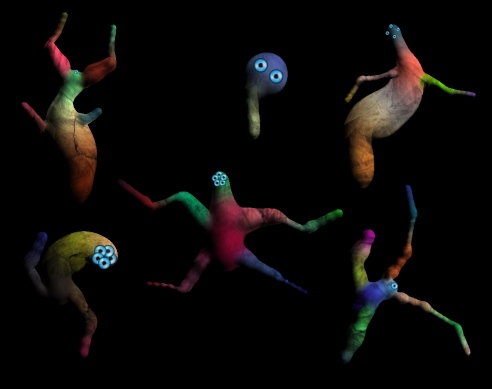 |
|
Research
|
|
|
Player Emotional Behavior Dependency on Fair Video Game Design Factors and External Conditions
Richardas Keršis
|
|
|---|---|
| In computer game design there is always a question of balance, especially if the game is multiplayer. Here Mr. Keršis has tried to analyze if playing a fair game and losing results in more negative emotion (anger and aggression) than losing in an unfair game would. For this he developed a 2 player PvP game and analyzed different game design factors and external conditions that can make the game seem unfair to the players. The different factors are then evaluated based on a study on a group of players playing the developed game. Thesis. |
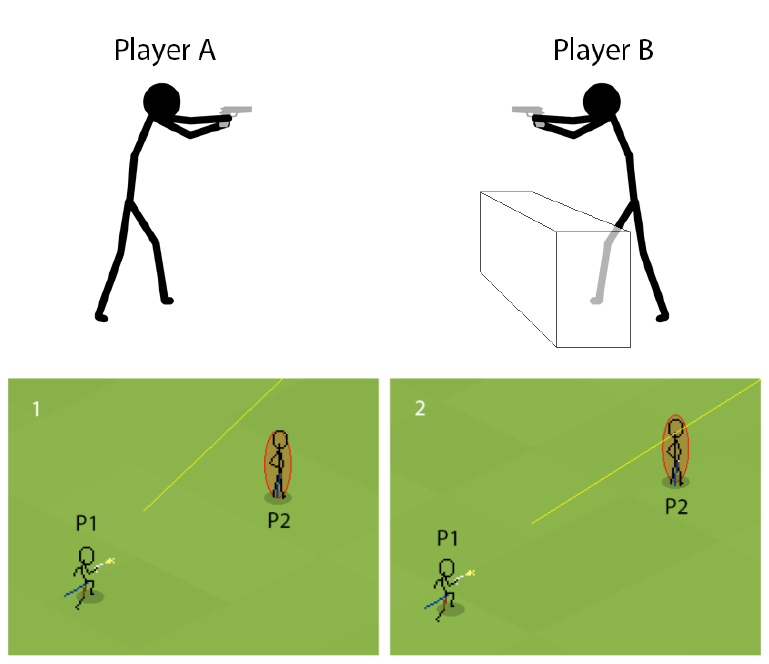 |
|
Experiments
|
|
|
Real-Time Strategy on Platforms Game Design
Silver Kirotar
|
|
|---|---|
| In this thesis the aspects of real-time strategy and platformer game genres are analyzed and combined into a single game. Mr. Kirotar starts by bringing out the key mechanics of both genres and researches what games have tried to combine them before. Then he proceeds to designing his own game based on the found results. The designed and implemented game Queen Aerisilium includes RTS-like base-building and platforms the player needs to reach with their units. The main mechanic of platform traversal is via building and using bridges between them. The designed and developed prototype solution shows that such a game would be possible. Thesis. |
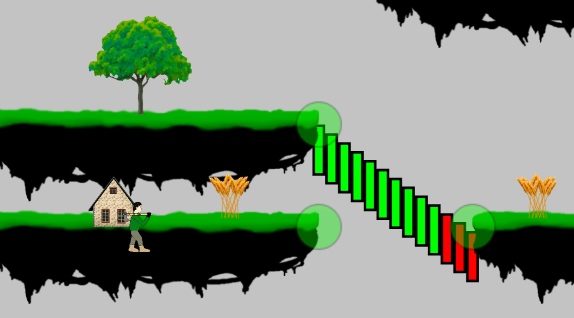 |
|
Software
|
|
|
Infinite Procedural Infrastructured World Generation
Andreas Sepp
|
|
|---|---|
| Mr. Sepp has continued on the procedural land generation theme he discovered during his Bachelor studies. This time he has taken inspiration from the Estonian landscapes and infrastructure developed by humans. In his thesis he describes an infinite procedural world generation algorithm that includes about 10 different advanced computer graphics techniques. The generation starts by generating and culling a highway graph, which is then used for city placement (among other things). The different areas inside and outside the cities are divided into specific regions and given corresponding types like forest-areas, farmlands, groves. There are many such divisions into areas inspired by real-life phenomena. In the final developed application of the algorithm you can drive around in real-time and discover as much of the infinite procedural world as you like. There are also road signs to guide you to the next city or village. Poster. Thesis. |
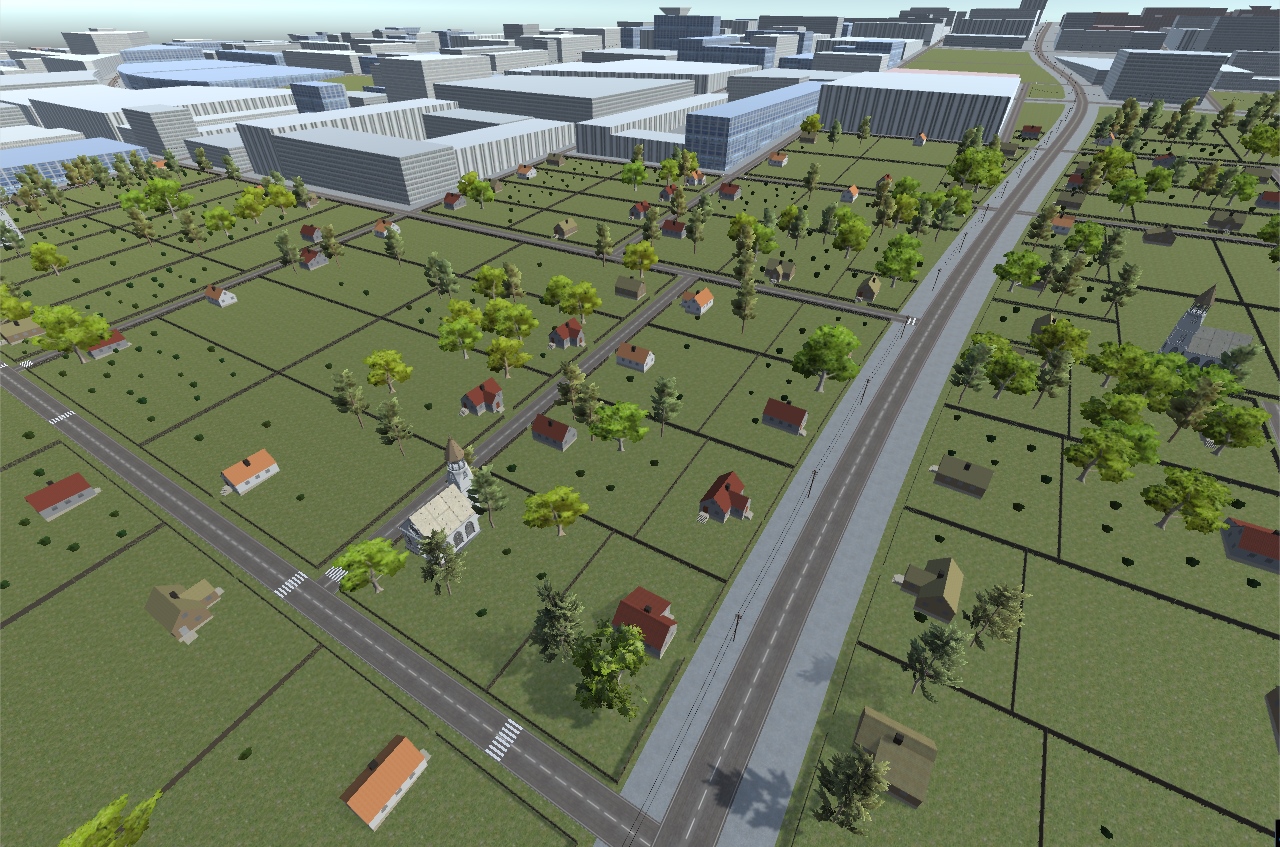 |
|
Research
|
|
|
Edge Chamfering Algorithm
Diana Algma
|
|
|---|---|
| Algorithms for automatically manipulating geometry in a purposeful way are difficult. In her thesis Ms. Algma has created an algorithm for chamfering edges of 3D meshes. Chamfering is a technique similar to beveling, but only creates one very small bevel for hard edges. This gives the 3D models a more real-life look as in reality there are no infinitely sharp hard edges on objects. The algorithm works on all sorts of models and allows artists or developers to drastically improve the look of their application. In addition Ms. Algma has improved her algorithm to work on textured models and account for the UV mapping. You can read all about that from her Computer Graphics Project page. Poster. Thesis. |
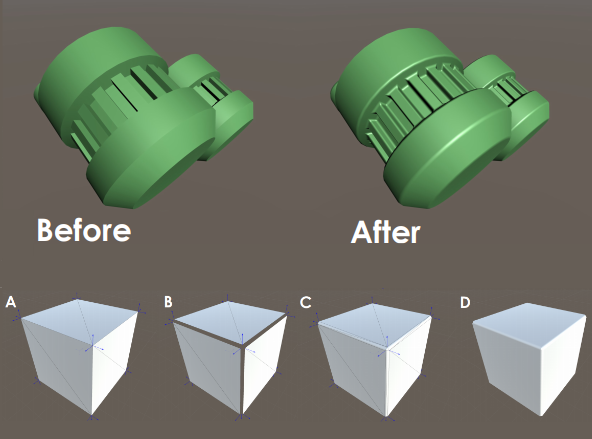 |
|
Research
|
|
|
Real-Time Cave Destruction Using 3D Voronoi
Marko Täht
|
|
|---|---|
| Procedural description of meshes creates more immersion in computer games. In his thesis Mr. Täht has created a solution for destruction simulation by using 3D Voronoi diagrams. The thesis describes different approaches for 3D mesh destruction and then delves into algorithms that allow real-time (re-)generation of 3D Voronoi diagrams. Methods for dynamically modifying the Voronoi diagram and updating the rendered mesh are discussed, implemented and tested for performance. Mr. Täht has also created a demo application of the algorithm, where you can dig through a cave with a laser gun. Each time you fire at the cave wall, a section of the Voronoi diagram and the mesh recalculated. You can read more about that from his Computer Graphics Project page. Poster. Thesis. |
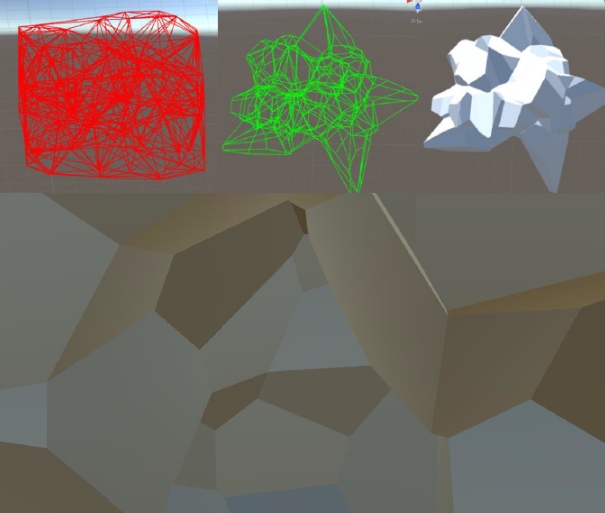 |
|
Research
|
|
|
NPC AI System Based on Gameplay Recordings
Sercan Altundaş
|
|
|---|---|
| In virtual reality games the current player base is low because the technology has not yet become that mainstream. Because of that Mr. Altundaş has taken for his work the creation of AI bots in the virtual reality arena shooter game Vrena. The thesis describes the research that has been done in the game AI field and proposes a solution to create an AI based on gameplay logs of real players. The different play sessions record player the parameters such as the headset and controller locations to give the resulting bots a more life-like feel. The result is the bots that behave according to the logged session information and complete the game goals as a regular player would. Thesis. |
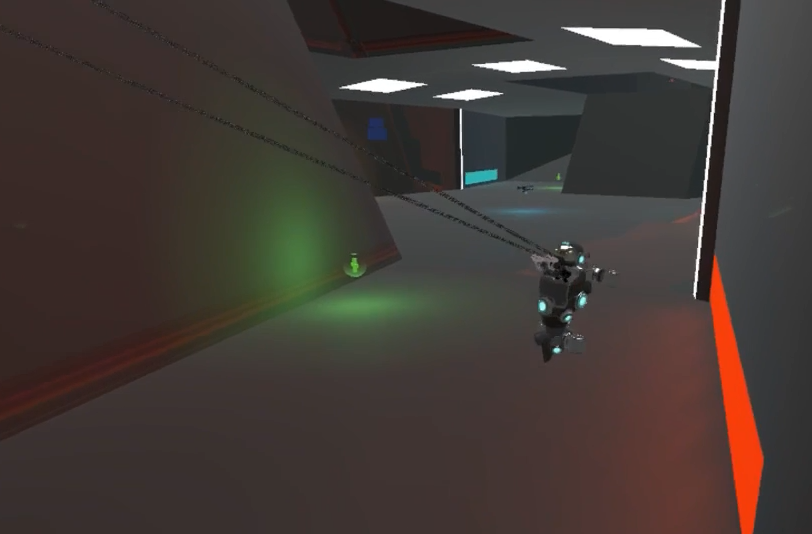 |
|
Software
|
|
|
Probing the Internal World Model of the Brain
Kristjan Kitse
|
|
|---|---|
| The thesis by Mr. Kitse focused on learning why and in what situations hallucinations occur. The main aim was to create a virtual reality environment, where people could experience perceptual illusions - seeing objects that are not there. For this, Mr. Kitse created an environment that was fully made out of white noise materials, as noisy environment increases the possibility of the brain playing tricks on us, finding non-existing patterns. One of the main objectives when developing this environment was to find that thin line between seeing an object and not seeing it, so that test subjects would have perceptual dilemmas. Results showed that people experienced different kinds of brief phenomena that they usually found hard to explain. As we all have an internal model about the world inside our brains, such experiments allow us to “see” with our minds eye. Thesis |
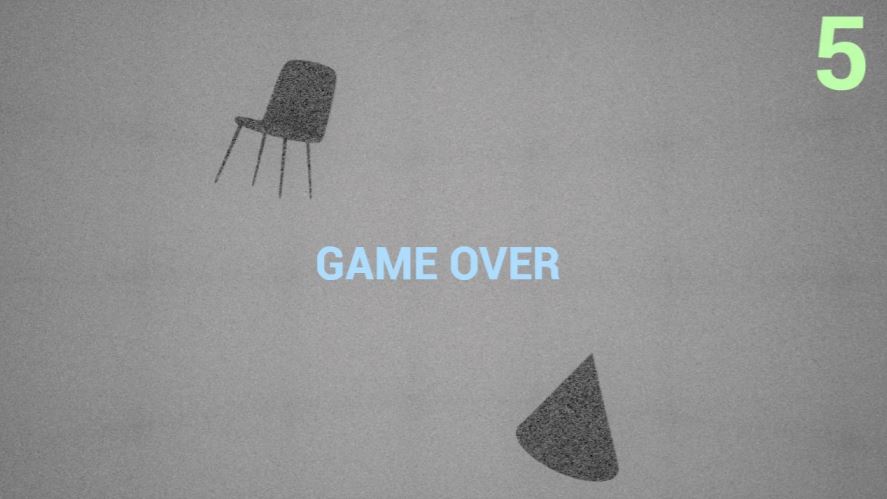 |
|
Research
|
|
2017
|
Algorithm for Portals Between Environments and Using it in a Computer Game
Kalle Ever
|
|
|---|---|
| Mr. Ever has created a really cool puzzle platformer game for his Bachelor’s thesis. The game’s unique value is the use of portals, which lead to different environments. There are 5 different environments designed: Reality A, Reality B, 0g, Slow Reality and Alive Reality. The thesis describes the design choices for each of them. Using different realities and a portal device, the players can solve 27 different puzzles to progress. The puzzles include buttons for opening doors, boxes to place on the buttons and also several types of traps to avoid. During the thesis work Mr. Ever tested his game on several players and improved the mechanics. The game can be downloaded together with his thesis and includes about 1.5h of play time. You can also check out the development log from his Computer Graphics Project page. Poster. Thesis. |
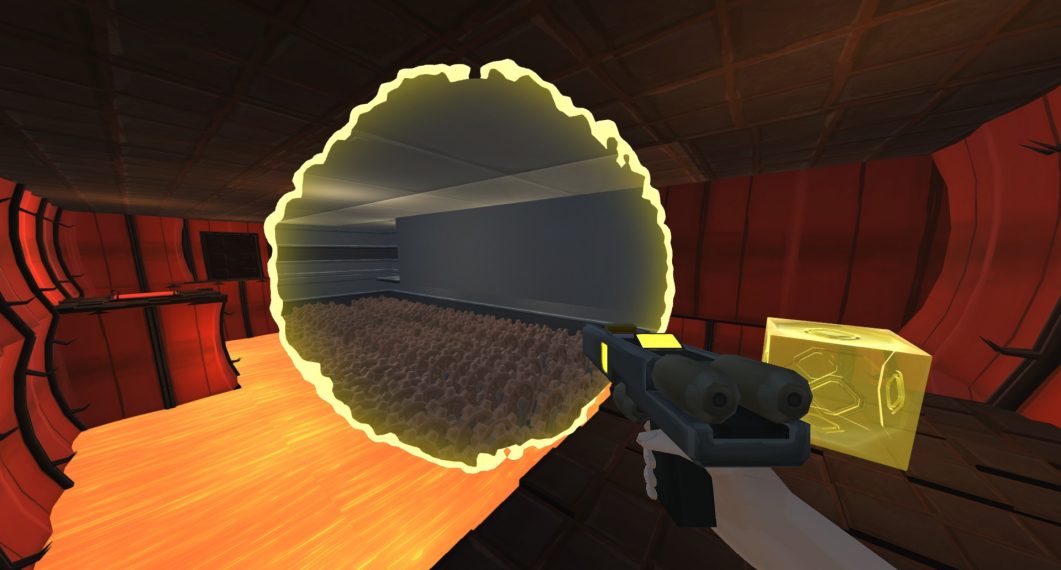 |
|
Software
|
|
|
Impossible Geometry in a Node-Based World
Ivo Voika
|
|
|---|---|
| In this thesis the concept of impossible geometry is explored. Mr. Voika describes for example the Penrose staircase and games like Echochrome, which makes use of the impossible geometry as a game mechanic. The majority of his thesis describes how to implement impossible geometries using a node-based approach to describe the game world. Graphs are shown that illustrate 3 different types of impossible geometries: shortcuts between areas, endless corridors and overlaping rooms. All of those are also implemented by Mr. Voika in the program accompanying the thesis. Several design and implementation restrictions are described for those who want to create such worlds. Also each impossible geometry type features descriptions of possible game mechanic designs proposed by Mr. Voika. Thesis. |
 |
|
Research
|
|
|
Creating an Artificial Intelligence for a Turn-Based Strategy Game L-put
Mattias Lass
|
|
|---|---|
| Turn-based strategy games are potential area of use for artificial intelligence (AI) algorithms. In his Bachelor’s thesis Mr. Lass has created a small turn-based strategy game – L-put. The game features mechanics similar to that of Heroes of Might and Magic games. The game map is composed of hexagonal grid and in the thesis two possible coordinate systems are described for creating a game on such a structure. Both of the coordinate systems have pros and cons, which are explained in the thesis. After that Mr. Lass proceeds to trying out different AI algorithms for creating a computer-controlled enemy to play against the human players. Min-max, alpha-beta pruning and the Monte Carlo algorithms are tested and the results described. Thesis. |
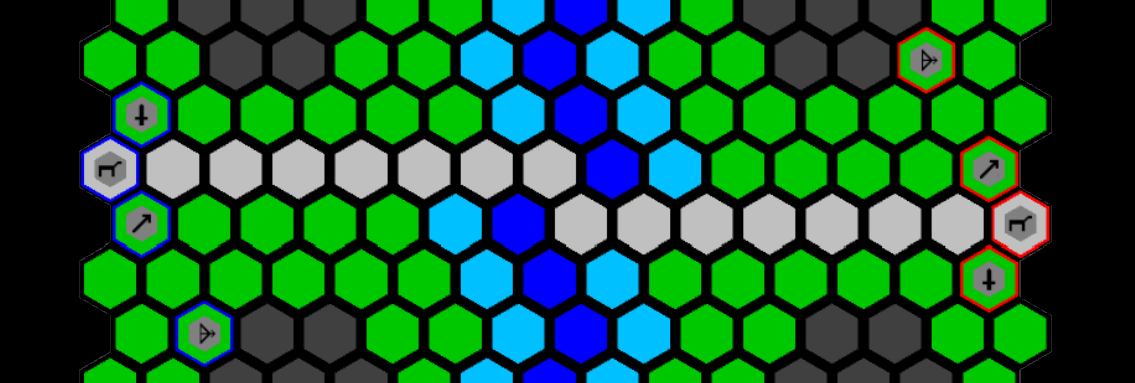 |
|
Research
|
|
|
Virtual Reality Game Design Analysis Based on Tribocalypse VR
Jens-Stefan Mikson
|
|
|---|---|
| Mr. Mikson has lead a 14-member development team in the course 6 months in order to create a virtual reality (VR) game Tribocalypse VR. The thesis describes many of the unique challenges of VR and game development for the HTC Vive platform. As the fields are relatively new, Mr. Mikson’s thesis provides a very beneficial analysis for anyone aiming to develop a VR game. Important game development areas like environment and level design, user interface and interactable items are explored. Different features and solutions in those areas are analyzed with the important concepts of immersion and clarity. Mr. Mikson was in an unique position to tackle the described design problems with his team and the thesis can now serve as a guide for all VR developers (incl Mr. Mikson and his team) in the future. Thesis. Developer's Guide |
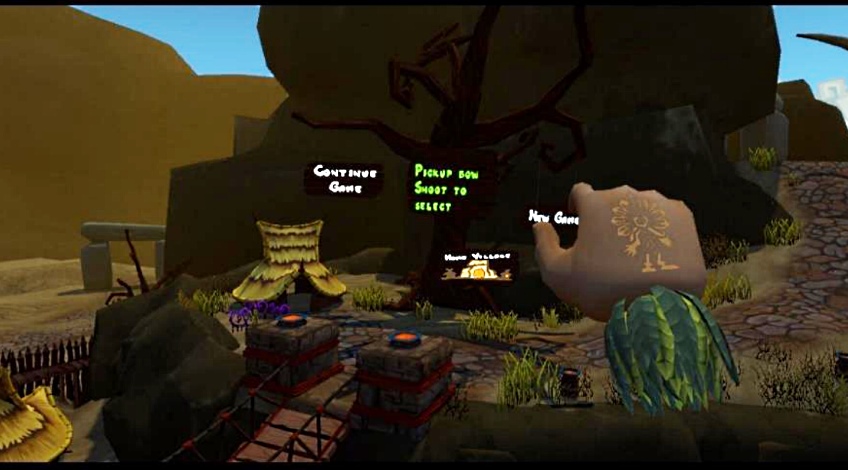 |
|
Software
|
|
|
3D Model Viewer for Mediawiki Software
Harri Alasi
|
|
|---|---|
| Mr. Alasi has in his Bachelor's thesis created a 3D model viewer plugin for Wikimedia software. That plugin allows users of Wikimedia software to view 3D STL models on wiki pages via an interactive 3D viewer. Just like currently there are pictures in wiki articles, that plugin allows the addition of 3D models to the articles. Thesis describes the different STL sub-formats and the issues one faces, when parsing an STL file. Key aspects in the thesis tackle the problems of how to intuitively allow users to control the actual 3D view and how to show models with different spatial dimensions. Thesis. |
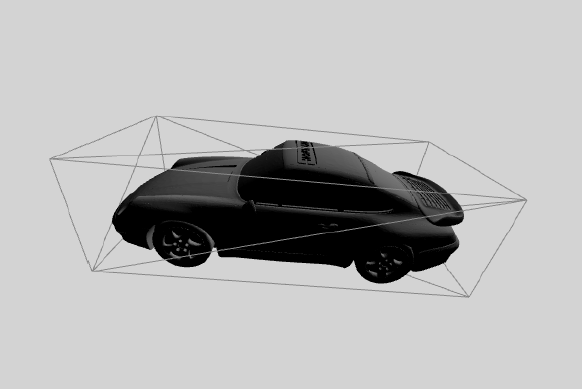 |
|
Software
|
|
|
EyeTal – A Fully Eye-Controlled Map Editor
Mark Laane
|
|
|---|---|
| In this Master’s thesis Mr. Laane has created a user interface, which is 100% controlled by the user’s eye gaze. While partially eye-controlled interfaces have been made in the past, creating a fully eye-controlled interface is a novel and challenging goal. The actual solution has restricted access because the application was made for AS Datel and includes trade secrets. Still you can read about the eye tracking and it’s challenges from the first chapters of Mr. Laane’s thesis. Furthermore you can follow Mr. Laane’s progress for creating a general open-source framework for eye-controllable GUI from his Computer Graphics Project page. Thesis. |
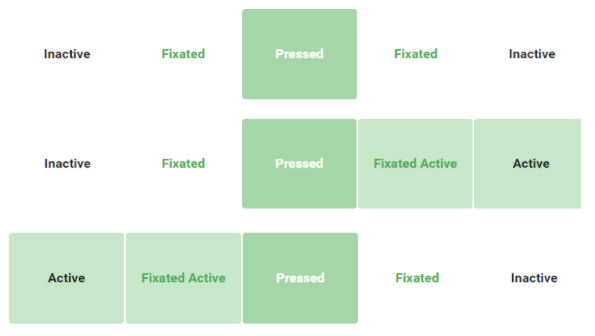 |
|
Software
|
|
|
WebGLadiator Game Engine for Web Developers
Mohamad Qaddura
|
|
|---|---|
| In his Master's thesis Mr. Qaddura has created a new game engine for web developers. The WebGLadiator engine is built using the Pixi.js library for 2D graphics, the Tween.js library for animations and RX.js for input events. Game logic coding in WebGLadiator is done using TypeScript and graphical layouts can be configured with VFL. Mr. Qaddura explains the Entity-Component-System paradigm used in his engine as well as different other design patterns used to make the game developer's life easier. In the end, use of the engine is demonstrated via building a Tic-Tac-Toe game. Thesis. |
 |
|
Software
|
|
|
Introductory Game Development and Programming Course Materials
Jaan Janno
|
|
|---|---|
| Teaching introductory game development and programming in an online course can be difficult. In this Master’s thesis the Let’s Make Computer Games (Teeme ise arvutimänge) e-course is improved. The thesis starts by describing the current learning materials, which have been used to teach game development to thousands of Estonian secondary school students across the country. Next Mr. Janno has identified several shortcomings and problems with those materials. For example the use of outdated software or the lack of computer graphics content. Then a number of solutions have been considered and taken into use. The bulk of the work includes 35 new educational videos, which include additional topics like the game loop and update patterns. Mr. Janno also created several more engaging exercises. One of which has the pupil implement an adventure game with choices and images. The quality of the materials and the revisions is also assessed in the thesis. Thesis. |
 |
|
Learning Materials
|
|
|
Semi-Automatic Method for Creating Virtual Reality Environments
Andres Traumann
|
|
|---|---|
| Traditional virtual reality environments are based on rendering all the surroundings using 3D models of objects. This requires graphically modelling the whole environment, which is usually a long and tedious task. The thesis my Mr. Traumann investigated a possible method to create such 360 environments semi-automatically and provided an interface to display the virtual reality environments created. Mr. Traumann experimented with available commercial solutions and also wrote his own algorithm to stitch together the arrays of images to enable navigation inside photorealistic virtual environments. He also devised a radio-controlled toy car camera to automate the process of capturing large rooms. Thesis |
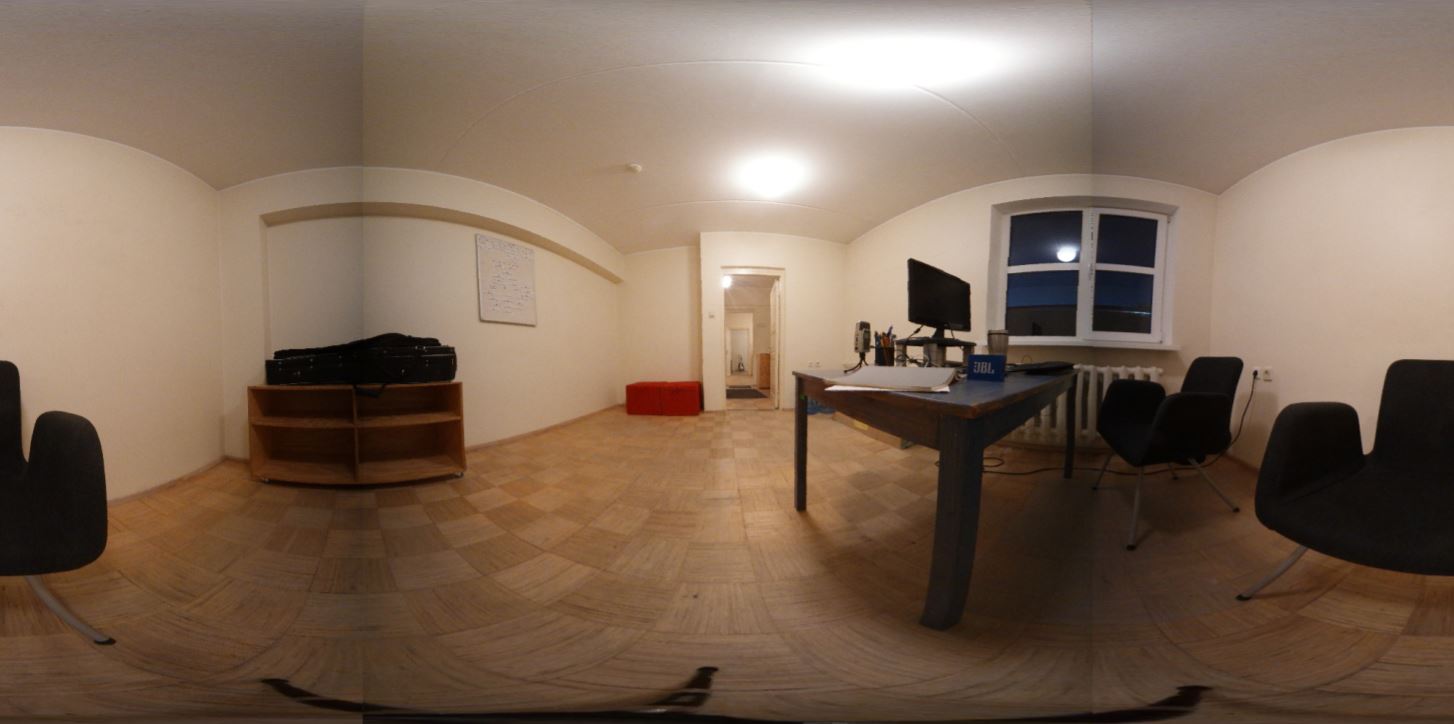 |
|
Software
|
|
|
Paralysed by Surprise: Testing the Active Inference Theory with VR
Taavi Gilden
|
|
|---|---|
| In this thesis Mr. Gilden created the software to test a peculiar prediction of the active inference theory, that of the brain suppressing visual information in order for body movements to occur. The created a program interrupts the withdrawal of attention during hand movements in virtual reality. In the produced environment people were presented with a task to raise their arm as a reaction to stimuli they received from their surroundings. By manipulating the saliency of the visual environment Mr. Gildren tried to affect the reaction time of the movements. Due to a novel paradigm and a small overall effect, it proved difficult to find the right parameters for a statistically significant effect, so more future research is needed on the topic. Thesis |
 |
|
Software
|
|
|
Reduced Contrast in the Area of the Visual Field Where the Own Hand Is Moving: A Virtual Reality Study
Tõnis Koppel
|
|
|---|---|
| The results of numerous studies suggest that the brain predicts the results of its movements and attenuates the sensory signals resulting from those movements. Mr. Koppel developed a program that enables to test whether self generated hand movement affects the perceived contrast in the area of visual field where ones own hand is moving. A key contribution of Mr. Koppel was the generation of very specific contrast stimuli to study visual perception. He also ran a small study with human participants and analyzed the data gathered from 11 participants. These initial results gave information about how to develop the paradigm further. Thesis |
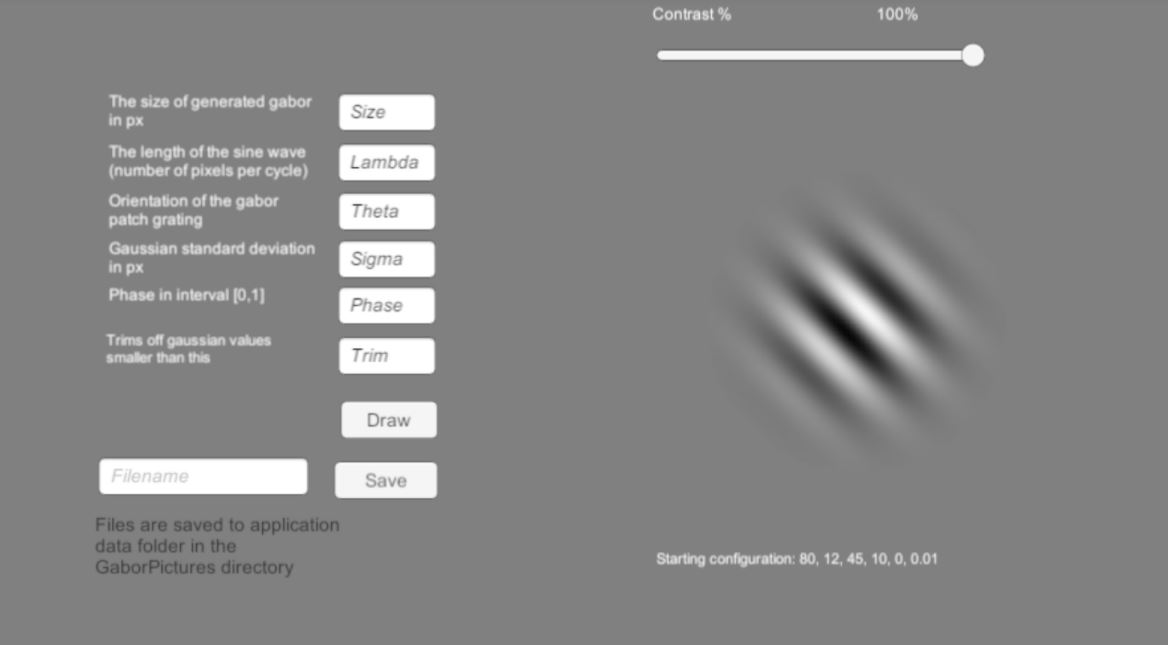 |
|
Software
|
|
|
The Induction and Objective Measurement of Roll-Axis Vection in VR
Al William Tammsaar
|
|
|---|---|
| Vection is defined as the illusion of self-movement or the subjective experience of self-motion. Historically vection has been studied using subjective reporting methods. In his thesis, Mr. Tammsaar created a Unity 3D program to validate commercially available virtual reality headsets as an avenue for generation and objective measurement of vection. Mr. Tammsaar created various environments filled with rotating tunnels or other environments, and instructed study participants to walks straigh for a few meters while wearing a VR headset. The measurements of walking trajectories detected the effects of vection but the differences in environment and ways of rotating the environment remained mostly inconclusive. This thesis opened up new ways of studying vection with modern virtual reality headsets. Thesis |
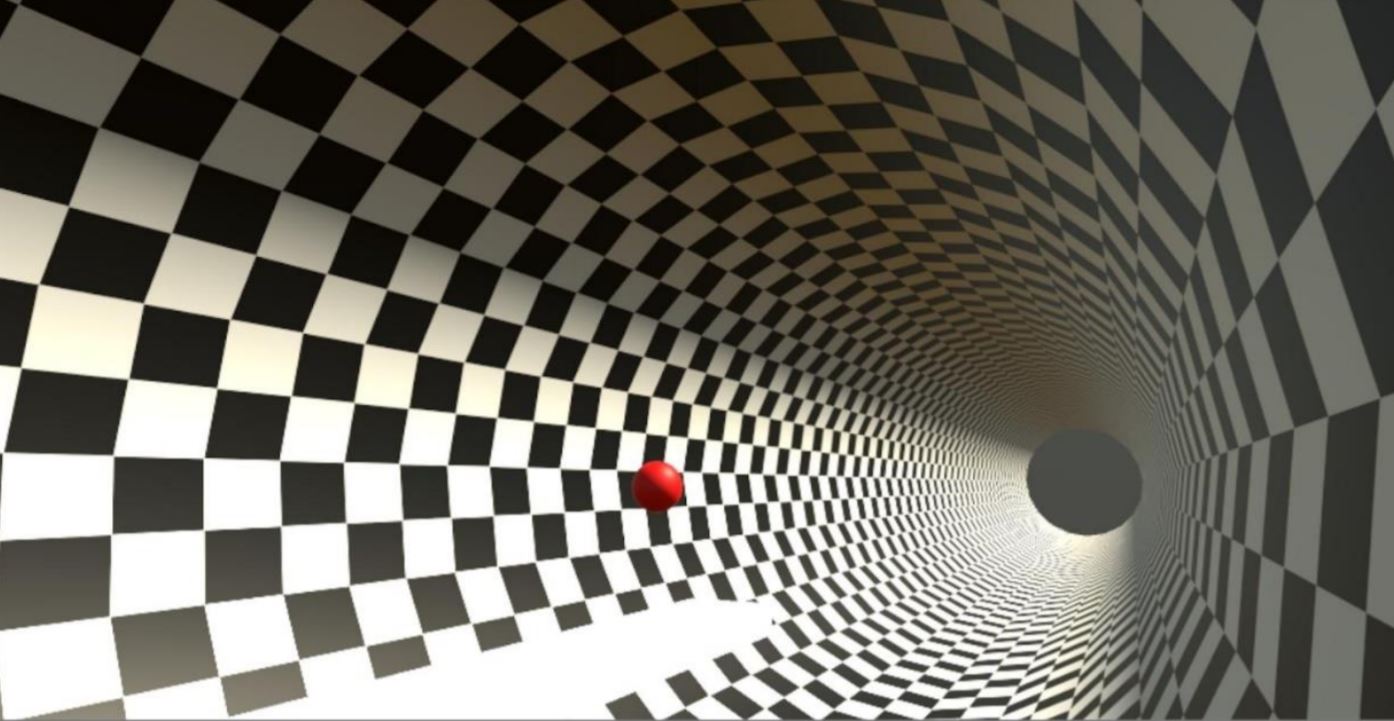 |
|
Experiments
|
|
2016
|
Procedural Terrain Generation
Andreas Sepp
|
|
|---|---|
| Mr. Sepp created a Minecraft-like land generation algorithm. He researched different noise generation algorithms (MDA, value, gradient, Perlin, simplex) in order to find the best one for the heightmap of his land. Ultimately he used Simplex noise for the initial heightmap, rainfall and temperature. Based on the last two he created different biomes in a Voronoi diagram. Corresponding to the biom type the actual height of the land is then modified. Heights on the edges of biomes are blended together smoothly. Lastly the vegetation is also placed using noise and biome type. Thesis. |
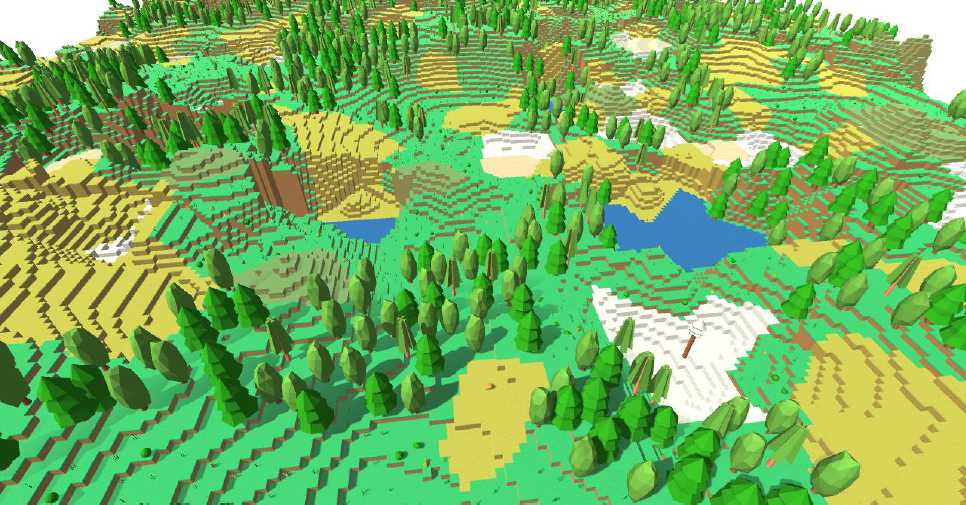 |
|
Research
|
|
|
Procedural Generation of Cities
Kristjan Perli
|
|
|---|---|
| Mr. Perli researched 3 different procedural city generation algorithms described in his thesis. Parts from each of those algorithms are chosen and an unique city generation algorithm is designed. Roadmap generation is done in two steps: First the main roads are generated by connecting population dense regions, creating also bridges if necessary. Secondly, streets are generated aside the main roads also based on the population density. Then loop finding algorithms are applied to create plots for buildings. The buildings themselves have a varying height and structure based on the population density. Shape is determined by the plot’s shape. Finally different textures are mapped and applied on the buildings. This entire thing works in a web browser in JavaScript with the Three.js library. Thesis. Live. |
 |
|
Research
|
|
|
Tutorial for Making a Game in Unreal Engine 4
Thomas-Bairam Toodo
|
|
|---|---|
| Mr. Toodo has created a learning tutorial for one of the most popular game engines: Unreal Engine 4. The tutorial itself is in Estonian and is meant for students and learners who do not understand English enough to follow many other already existing tutorials on the web. In the tutorial there are many components of Unreal Engine 4 covered, mainly: Level Editor, Material Editor, Blueprint, Matinee Editor, UMG UI. Thesis also provides a number of Estonian translations for UE4 specific keywords (like funktsioonikastike and ühendusklemm). During the tutorial the learner creates a small 3D third-person platformer game. Thesis. |
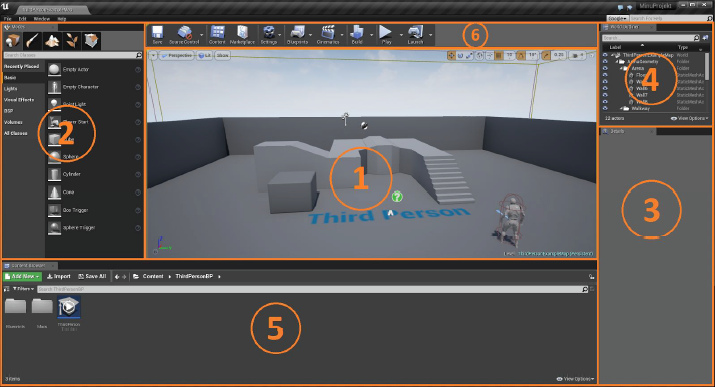 |
|
Learning Materials
|
|
|
Programming Patterns in Computer Games Course
Margus Luik
|
|
|---|---|
| As games are usually quite code-wise large software projects, programming them neatly is very important for a computer scientist. Mr. Luik created an entire 3 ECTS credits course do teach that to our students. In the course many programming / design patterns are covered and students learn how to use them to solve programming problems in a good fashion. Most of the work in the course devised by Mr. Luik is done on the same Unity project and in the end students implement several cool features in that game project: movement, command recording and replaying, Snake-game-like following, teleportation, procedural level generation etc. Thesis. |
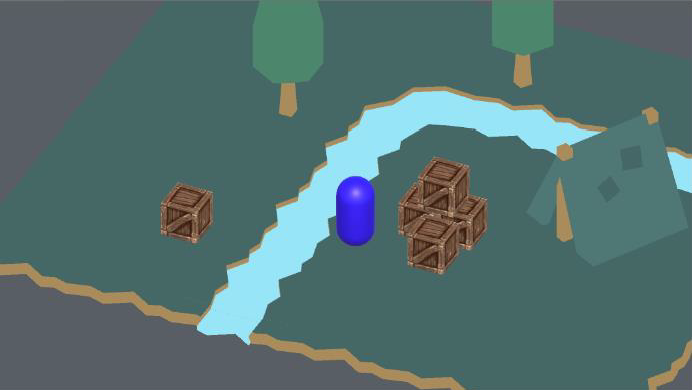 |
|
Learning Materials
|
|
|
The Human Octopus: Controlling Supernumerary Hands with the Help of Virtual Reality
Sander Kulu
|
|
|---|---|
| The thesis investigated the “human octopus” phenomenon which involves controlling various supernumerary (more that two) hands with the help of virtual reality and hand tracking technology. Mr. Kulu developed a set of experiments in order to observe how subjects operate with far too many hands and which control strategies are used. It was found that having more hands to operate with does not necessarily mean that one would be more successful performing a certain task. Body avatar extension needs to be done carefully in order for it to feel natural, but such approach can have great potential in entertainment industry. Thesis |
 |
|
Experiments
|
|
|
Expanding the Functionalities of VREX
Vladislav Stafinjak
|
|
|---|---|
| Mr. Stafinjak improved upon the VREX toolbox developed in the CGVR Lab. He reworked large parts of the original code and turned it into a toolbox that can be distributed as a Unity project which has all the essential blocks to create new experiments. Functionalities like new locomotion systems and the possibility to use audio files in experiments were added. In addition to well explained code a blank experiment was created by Mr. Stafinjak that has all the essential building blocks that any experiment needs so that users can effortlessly build their own experiments. Thesis |
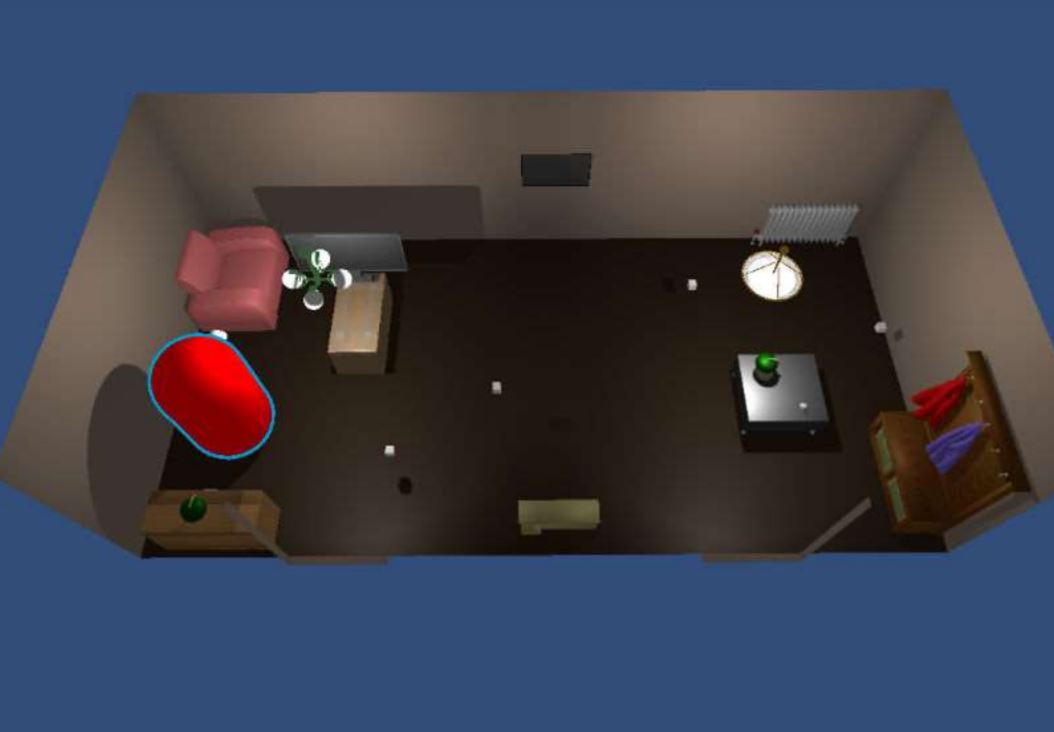 |
|
Software
|
|
|
Extending the VREX Toolbox for Studying False Memory in Virtual Reality
Murad Magomedkerimov
|
|
|---|---|
| False memory is a psychological phenomenon in which a memory is recalled which did not actually occur. In this thesis Mr. Magomedkerimov created an experimental module in the VREX toolbox for studying false memories and add on already existing capabilities of the toolbox. Mr. Magomedkerimov added to the toolbox the possibility to place the subject in different rooms where some change has been made. Also, additional object manipulations were added to the VREX toolbox. The additions are created in a manner that allows them to be easily used in future experiments. The work opens up the possibility to rigorously study false memories in virtual reality. Thesis |
 |
|
Software
|
|
2015
|
Computer Graphics Learning Materials
Raimond Tunnel
|
|
|---|---|
| Mr. Tunnel's Master's thesis has three main focus points. First a proposal for a computer graphics course is formulated and different learning environments covered. Based on that it is determined that a custom learning environment called CGLearn is necessary. The thesis describes the architecture and implementation of the named environment. Secondly, numerous computer graphics learning materials (text, interactive examples, tasks, flashcards) are created. The thesis concludes with the first conduction of the designed and created course by the author and the results of that conduction. Thesis. |
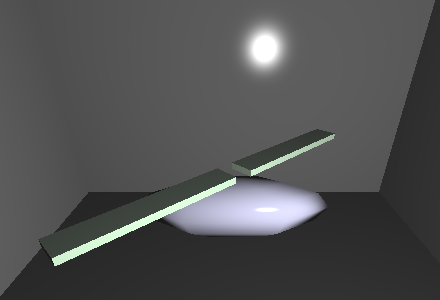 |
|
Learning Materials
|
|
|
Change Blindness in 3D Virtual Reality
Madis Vasser
|
|
|---|---|
| Change blindness, the phenomenon of not noticing big changes in a visual scene, was investigated in the thesis by Mr. Vasser. A novel method that tracked the subjects head movements via VR display position was used for inducing changes in the scene whenever the changing object was out of the players field of view. The main research aim was to study the effect of change location (foreground or background) on change blindness. Up to 25% of the changes were undetected and the mean overall search time was 27 seconds in the lab study. Results indicated significantly lower change detection success and more change cycles if the changes occurred in the background, with no differences in overall search times. The results confirm previous studies and also show the feasibility of online VR experiments. The thesis was done in close collaboration with Mr. Kängsepp who did the software design. Thesis |
 |
|
Experiments
|
|
2012
|
Procedural Tree Generation
Raimond Tunnel
|
|
|---|---|
| In his Bachelor's thesis Mr. Tunnel mainly focused on Aristid Lindenmayer's L-systems for generating self-similar objects. The thesis describes L-systems in the context of formal grammars. After that the overview of a C++ implementation is given. Then some graphics optimizations are described. The thesis brings out several sets of rules for creating trees with an L-system and analyzes the results. In the end L-system trees are compared to trees generated via another algorithm by Paul Kruszewsky. Thesis. |
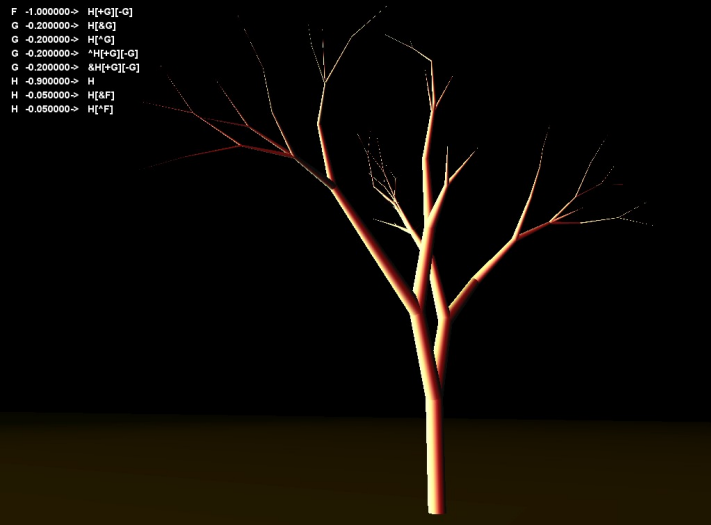 |
|
Research
|
|

